FEATHERING THEIR NESTS

FINDING SANCTUARY UKRAINIANS IN HEADWATERS
HEALING POWERS THE NATIONAL WILDLIFE CENTRE A TEA FOR ANY OCCASION


FINDING SANCTUARY UKRAINIANS IN HEADWATERS
HEALING POWERS THE NATIONAL WILDLIFE CENTRE A TEA FOR ANY OCCASION








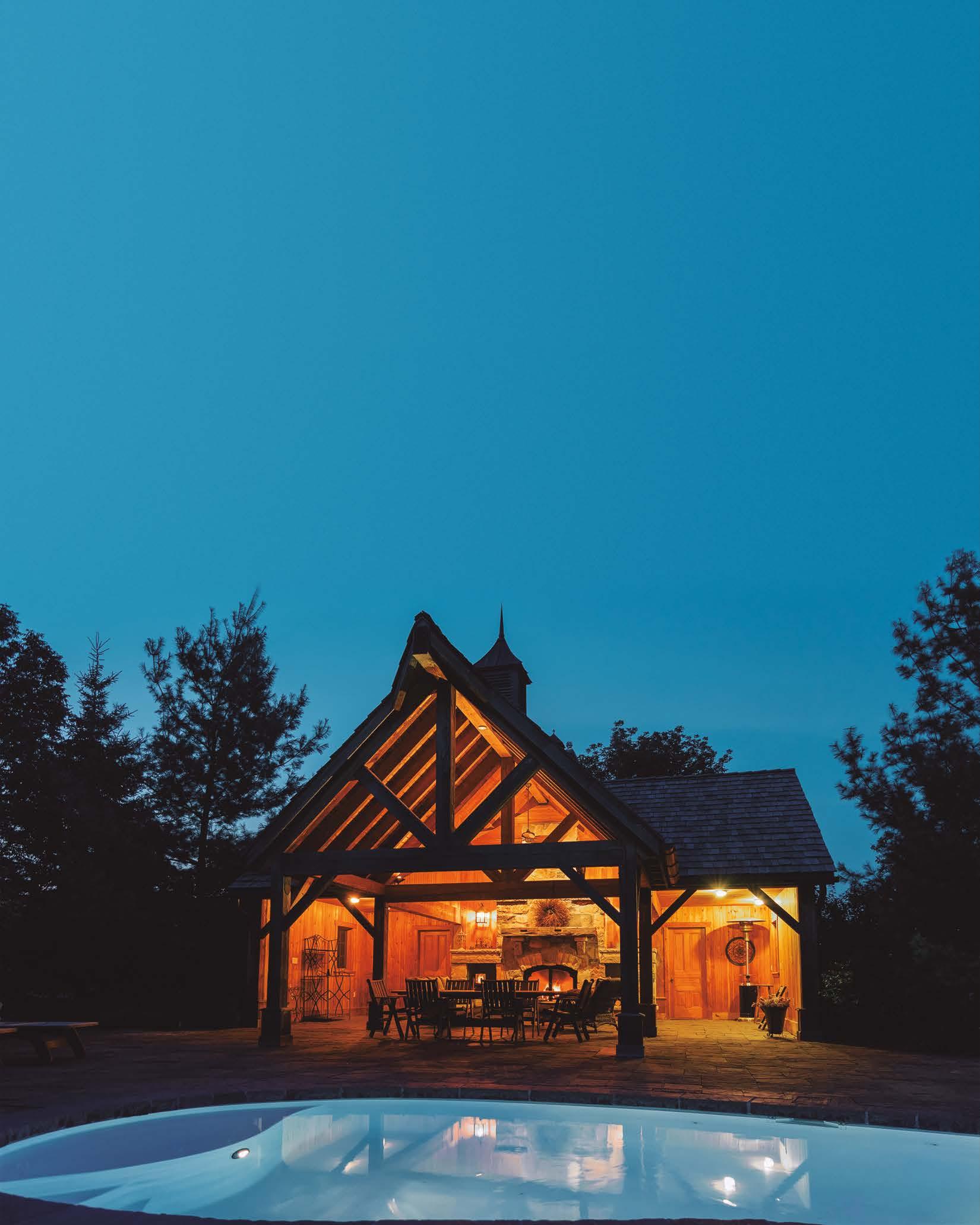








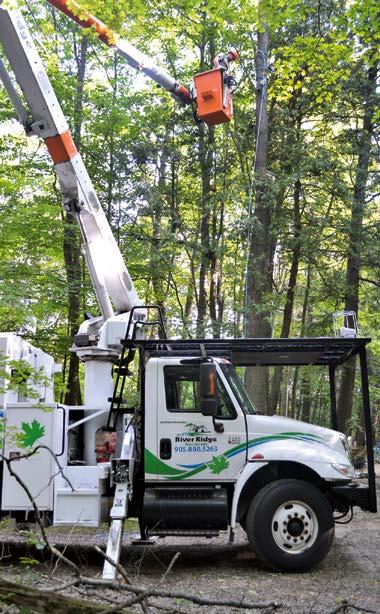









32 IN RETROSPECT
On our 30th anniversary, we dig into our archives to reflect on a few recurring themes
34 HOME, SWEET HOME
The amazing architectural feats (and sometimes cheeky parenting techniques) of nesting birds
BY DON SCALLEN41 POEM
Five Ways of Looking at Birds
BY CAROL GOOD44 FINDING SANCTUARY
Displaced by war, Ukrainians are offered a place of welcome in Headwaters
BY LIZ BEATTY55 HEALING POWERS
An interview with veterinarian
Sherri Cox, cofounder of the National Wildlife Centre
BY TONY REYNOLDS62 LIFE IS IN THE DETAILS
Bolton author Glenn Carley finds glory in the ordinary
BY ELLIE EBERLEE68 ARTISTIC LEGACY
A bursary in his name has proved a lasting gift from Mulmur artist Reed Cooper to area artists
BY ANTHONY JENKINS77 OUR CUP OF TEA
How local tea lovers are growing and reimagining an ancient drink for modern times
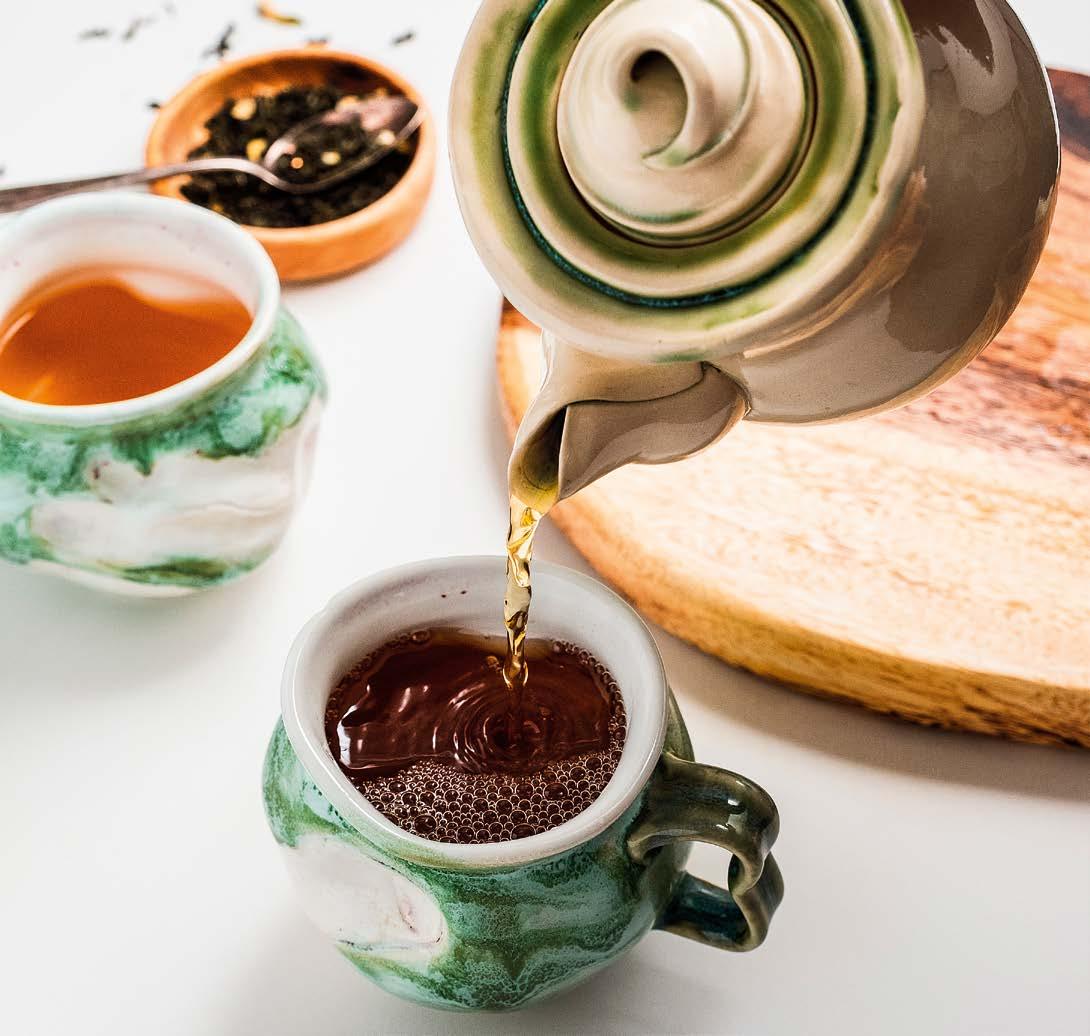 BY JANICE QUIRT
BY JANICE QUIRT

21 LETTERS Our readers write
25 ARTIST IN RESIDENCE Painter Sherry Park
27 FIELD NOTES
Adventures to put spring in your step
BY JOHANNA BERNHARDT31 FENCE POSTS
The reformation of the township dump
 BY DAN NEEDLES
BY DAN NEEDLES
82 FOOD AND DRINK Sweet and spicy ways to embrace spring
BY JANICE QUIRT87 MEET THE MAKER Metal artist Courtney Chard
BY JANICE QUIRT89 MADE IN THE HILLS Rustic wood bowls, an ode to mushrooms and eyecatching tea towels
BY JANICE QUIRT91 COUNTRY LIVING 101 Tree planting
BY EMILY DICKSON93 TAKE A HIKE Albion Hills Loop
BY NICOLA ROSS94 A DAY IN THE LIFE Alpaca farmer Julie Broadbent BY JANICE
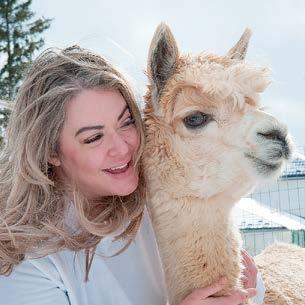 QUIRT
QUIRT
96 HEADWATERS NEST
The call of the open road
BY BETHANY LEE98 OVER THE NEXT HILL
“Speak to me, Alexa”
BY GAIL GRANT100 AT HOME IN THE HILLS An idyllic country gem tucked away in Caledon BY
ALISON MCGILL AND EMILY DICKSON116 WHAT’S ON A calendar of spring happenings

124 FIND AN ADVERTISER

130 BACK STORY Road paving: an eternal rite of spring BY
DYANNE RIVERSREGIONAL
PUBLISHER & EDITOR
Signe Ball
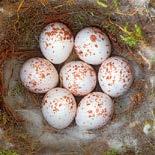
DEPUTY EDITOR
Tralee Pearce
ASSOCIATE EDITOR
Dyanne Rivers
ART DIRECTOR
Kim van Oosterom
Wallflower Design
PHOTOGRAPHERS
Rosemary Hasner
Elaine Li
Robert McCaw
Pete Paterson
ILLUSTRATORS
Shelagh Armstrong
Ruth Ann Pearce
Jim Stewart
WRITERS
Liz Beatty
Johanna Bernhardt
Glenn Carley
Emily Dickson
Ellie Eberlee
Carol Good
Gail Grant
Anthony Jenkins
Bethany Lee
Alison McGill
Dan Needles
Janice Quirt
Tony Reynolds
Nicola Ross
Don Scallen
SALES MANAGERS
Roberta Fracassi
Erin Woodley
OPERATIONS
MANAGER
Cindy Caines
ADVERTISING
PRODUCTION
Marion Hodgson
Type & Images
EVENTS & COPY EDITOR
Janet Kerr Dimond
DIGITAL EDITORS
Emily Dickson
Janice Quirt
In The Hills is published quarterly by MonoLog Communications Inc. It is distributed through controlled circulation to households in the towns of Caledon, Erin, Orangeville, Shelburne, Creemore, and Dufferin County. Annual subscriptions outside the distribution area are $29.95 for 1 year and $53.95 for 2 years (including HST).
© 2023 MonoLog Communications Inc. All rights reserved. No reproduction by any means or in any form may be made without prior written consent by the publisher.
For information regarding editorial content or letters to the editor: 519-942-8401 or sball@inthehills.ca.
Find us online at www.inthehills.ca
Like us facebook.com/InTheHills Follow us twitter.com/inthehillsmag and instagram.com/inthehillsmag
For advertising, contact one of our regional sales managers:
Roberta Fracassi
519-943-6822, roberta@inthehills.ca
(Orangeville, Shelburne, Creemore and areas N of Hwy 9)
Erin Woodley
519-216-3795, erin@inthehills.ca (Caledon, Bolton, Erin and areas S of Hwy 9)
The ad booking deadline for the summer (June) issue is Friday, May 12, 2023.
Canada Post Agreement Number 40015856
Made possible with the support of
We acknowledge the support of the Government of Canada.












WHEN I WAS GROWING UP, the common coin was “Never trust anyone over 30.” But when baby boomers, a generation never inclined to cede their advantage, passed that decade marker, they smoothly transitioned to “Never trust anyone under 30.”

Either way, attaining the age of 30 marks a divide – defined by both sober reflection and a much clearer understanding of who we are and where we’re heading.
As In The Hills enters its 30th year, we’re no different. Our first issue in the spring of 1994 was 24 pages and printed on high-grade newsprint. Its oversized format was modelled on the then common weekend magazines – lots of breezy lifestyle content combined with weightier backgrounders on the issues of the day. All conceived as a leisurely “good read.”
A lot has happened since. In a practical way, many of the changes have resulted from the evolution of technology. In the second issue of 1994, a story explained the new trend of home-based offices, made possible by “microcomputers” and “telecomputing,” and envisioned a day when images could be sent through a modem – “the entire transaction accomplished in ‘high-tech’ style.” (Laugh we may, but our “high-tech style” is still plagued by rotten rural internet.)
More important, our community has changed. In 1994, the Headwaters region was just beginning to evolve from the agricultural base and firmly British heritage that had defined it for nearly two centuries. In the intervening years, the population has more than doubled, and our community is taking its place in a vibrant, multicultural world. As exciting, local agriculture, which seemed to be receding back then, has re-emerged as a driving economic and environmental force.

But two things haven’t changed. The first is our profound gratitude to the readers and advertisers who have stood by us through all the years. With your affirmation that we’re touching something relevant to your lives, we have reason to carry on. The second is our steadfast commitment to be worthy of your loyalty by continuing to reflect, celebrate and, we hope, help steward the culture, heritage, environment and enterprise that keep these hills so very dear to our collective hearts.
Like any 30-year-old, In The Hills has matured. The days when we could consider ourselves an upstart little rural magazine are well behind us. So with the design refresh launched with this issue, we’ve dressed ourselves up in some stylish new togs, and we’re ready and excited to embrace the future.
Stay tuned!
Pete has been contributing to In The Hills for more than two decades, photographing a wide array of subjects, including vintage airplanes, local artisans and our annual salute to local heroes.
After a storied career in commercial and portrait photography, Pete moved to Caledon in 1990 and began to concentrate on people and community events for In The Hills, Theatre Orangeville and others. Pete has also donated his talents to Community Living Dufferin and other organizations.

In this issue, we spotlight Pete’s fine art photography. His dreamy series of cloud photos, Look Up, is on display at the Caledon Library (“Field Notes”). His work in this issue includes the emotive portraits of three Ukrainian families who fled the war to start a new life in Canada (“Finding Sanctuary”). He also visited Erin metal artist Courtney Chard in her workshop (“Meet the Maker”).
Kim van OosteromA freelance graphic designer, Kim van Oosterom started art directing In The Hills in the spring of 1999 and has been the keeper of its visual identity ever since (all but one of the layouts featured in our 30th anniversary lookback, “In Retrospect,” are hers). Kim is the force behind our fresh launch with this issue, along with digital updates on our website and social media channels. For the print update, Kim toiled over every typeface and font, reimagined the cover design and mapped out page elements large and small that combine to give the magazine a contemporary new feel.
In 2016, Kim and her husband, Andrew, moved from Toronto to a remote hilltop cabin in Mulmur. A nature enthusiast, she especially enjoys art directing Don Scallen’s nature features. This summer, she’s most looking forward to the annual firewood delivery and cataloguing its arthropod hitchhikers (really!).
Tralee joined In The Hills in 2014 as a writer and editor, and though she finds it a little hard to believe, she has spent 30 years as a journalist. Half that time was at the Globe and Mail writing and editing stories on lifestyle, health and news. She started at the Ottawa Sun and worked with NOW magazine before joining the Globe. She has freelanced for magazines including Canadian Living and Modern Farmer.
Highly impressionable, after working on this issue


Tralee is considering buying a kettle with a temperature gauge for the perfect cuppa (“Our Cup of Tea”), visiting alpacas (“The Alpaca Whisperer”) and seeking help with the perfect butter chicken (“Food and Drink”).
Tralee moved to Mono when she was four. After living in Inglewood for seven years, she and her husband and son now divide their time between Toronto and the farm she grew up on.


 Tralee Pearce
Tralee Pearce







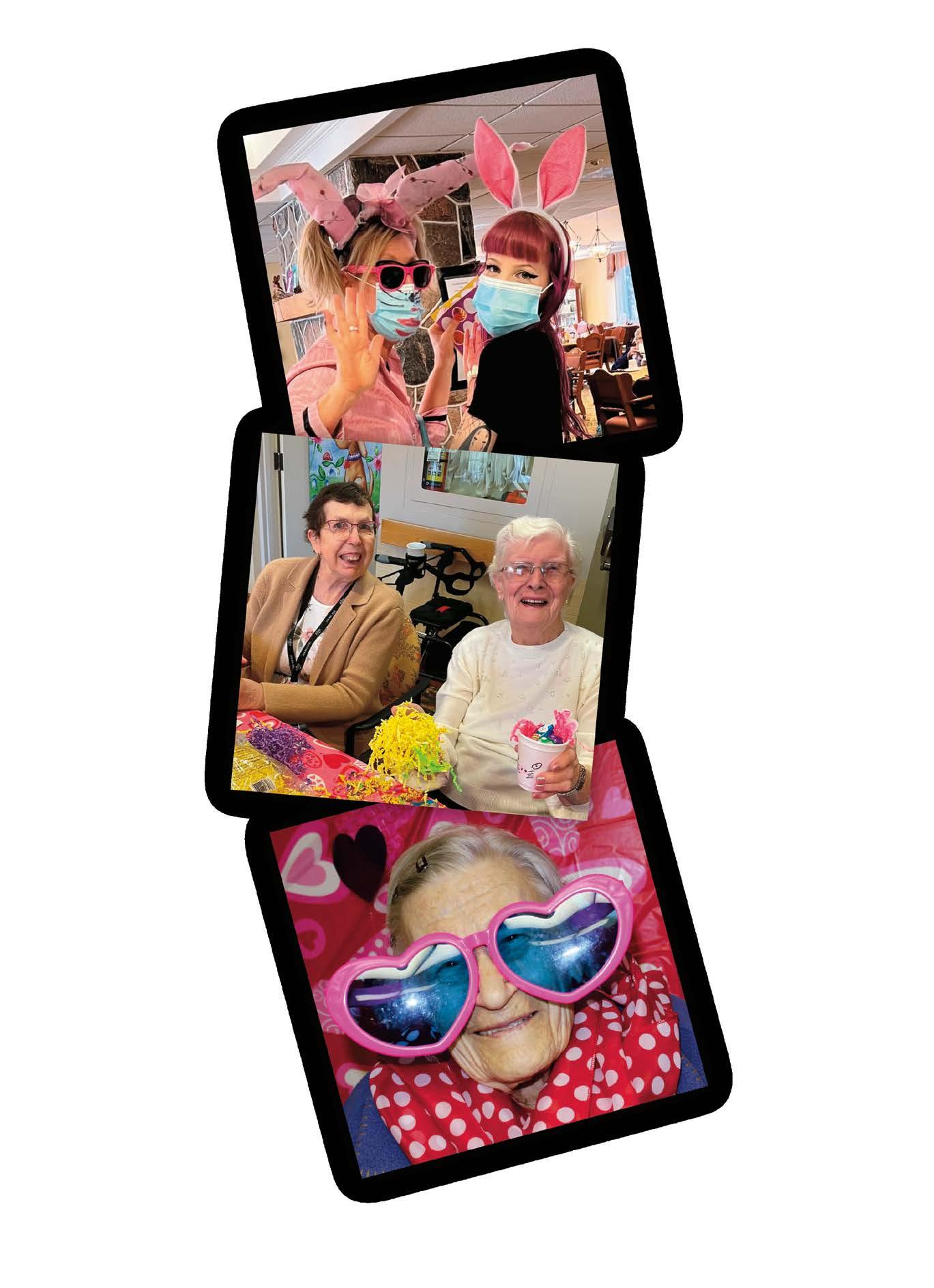
though, in my mind, as one of your finest.
Loved your article “Metric Resistance” by Gail Grant [Over the Next Hill, winter ’22]. I can totally relate to this as a Brit who moved here as a well-established homemaker in my 40s. I had already embraced some metric changes – the currency changed during my high school exams in the ’70s, fabric measurements were totally metric, and some items in the grocery store had changed over, but there were still a few in pounds and ounces. To this day I weigh


On arrival at the fabric store in Orangeville I was traumatized to have to convert my measurements back to yards! For items at the deli or meat counter, I simply requested by number – four chops or six slices, and vegetables are handpicked as I need. So, no
Cooking, however, was a nightmare. I still import British Pyrex glass measuring jugs, to keep me straight. Brits tend to dry measure in ounces, here most things are liquid measure. There is further confusion: I already owned a set of U.K. cups, and my Australian BBQ book offers a chart outlining the difference between an Australian and U.S. cup. Most of my items are made by Pyrex, but in which
In the main I turn to a single trusted spoon! One heaped tablespoon of flour is 1 ounce, a rounded tablespoon of sugar is 2 ounces –

I always marvel at how difficult it was for us kids to add columns of money – pounds, shillings and pence (12 pence = 1 shilling, 20 shillings = 1 pound, 240 pennies in a pound) – but perhaps that is for another day! Alison Hird,
We welcome your comments! For more reader commentary, or to add your own thoughts on any of the stories appearing in this issue, please visit inthehills.ca. You can also send your letters by email to sball@inthehills.ca. Include your name, address and contact information. In The Hills reserves the right to edit letters for publication.
www.suzannelawrence.ca
 RUFFED GROUSE: ROBERT MCCAW / SINGH SISTERS: ROSEMARY HASNER
Caledon
Alex Strachan, Alton
RUFFED GROUSE: ROBERT MCCAW / SINGH SISTERS: ROSEMARY HASNER
Caledon
Alex Strachan, Alton







Painter Sherry Park’s softly colourful works lie in the realm of realism, but the artist isn’t reproducing every minute detail. “I want to see the brushstrokes,” she says. She relies on photos, but doesn’t copy them grid by grid, instead using them as models in her Alton Mill Arts Centre studio. This leaves room to characterize her subjects with both honesty and affection — especially her older muses. Sherry will tell you the image of Ung Yol Park, her father, is a tender moment in the rhododendrons at a public garden in Mississauga. The woman in the award-winning Maire Kearns is a model Sherry painted in an art class. “The way she’s sitting, her gaze. She’s a very strong person who is aging gracefully,” she says fondly. www.sherrypark.ca











The Caledon Library ’s Artful Caledon program offers space for local musicians, artists and authors to showcase their work and celebrate the ways in which art shapes and enhances our community experiences. Visit In The Hills photographer Pete Paterson’s ethereal cloud exhibit, Look Up, at the Albion Bolton branch through to summer. The dramatic photos were taken, “here, there, and everywhere,” and captured by just looking up at the right time, says Pete humbly. Submit entries for Artful Caledon at the Caledon Public Library’s website.
Caledon artist Patty Maher ’s new book, Story, takes the reader on a visual journey, offering a view of her subjects through fairy-tale, literary and surrealist lenses. The book is divided into thematic sections, offering poetic commentary on the key influences behind her stark and arresting images.

Museum of Dufferin and Dufferin County Cultural Resource Circle bring us Our Story: Past and Present, an exhibit of Indigenous artworks featuring venerable Ojibwe painter Janice Toulouse and emerging Haudenosaunee/ Anishinaabe artist Sharon Rigby, who works with beading textiles and other media. The show is on display at MoD until March 29. (Another Museum of Dufferin moment not to miss: On March 25 MoD hosts an event exploring climate change from an Indigenous perspective. The event will be hosted by community elder Karen Vandenberg and her daughter, Skye Vandenberg, both of whom have a background in environmental science.)
Monday Night at the Movies will present The Long Rider at Galaxy Cinemas Orangeville on March 20. The film documents the epic journey of former Caledon resident Filipe Leite who travelled 25,000 kilometres on horseback from Calgary to his family’s home in Brazil.

The film’s award-winning director Sean Cisterna will be a guest at the event. He attended Robert F. Hall secondary school in Caledon East with Filipe in the late ’90s. During Filipe’s eight-year odyssey across 12 international borders, he and his horses battled intense heat, drought, speeding transport trucks, nature’s wrath and corrupt border guards on his historymaking ride.
There will be three screenings at 4:30, 7 and 9 pm. Advance tickets are available at BookLore in Orangeville or the cinema on the day of the performance. See the profile of Filipe which appeared in this magazine in 2018 at inthehills.ca

• The iconic maple-lined roads and laneways are disappearing from the rural landscape of southern Ontario

• Native Maples are a symbol of Canada, Canadian pride and identity

• Native Maples provide beautiful fall colour
• Native trees are naturally adapted to local climate and require less care


• Native trees support the needs of local wildlife, such as birds and insects

Though each of us experienced the pandemic differently, a sense of loss is one sentiment that seems to unite us, whether a loss of connection, financial stability, lifestyle or for some, loved ones. The pain of that time lingers and working through it is key to our health. To help, the Caledon Public Library is hosting a workshop – Post Traumatic Growth: Loss & Healing Through the Lens of the Pandemic – on April 20 at its Southfields Village Branch. Participants will have an opportunity to reflect on their losses as well as the growth and renewed sense of purpose that may have emerged.
Local music fans have two reasons to celebrate. First, Orangeville’s father and sons rock band trio, The Discarded, released their animated musical film and soundtrack, The Getgoes, in September 2022 and it is available to enjoy anytime on YouTube. A colourful throwback to retro Saturday cartoons and The Beatles’ Yellow Submarine, the film tells the story of a fictional band’s rise to fame, and all the ups and downs along the way, with 13 original hightempo songs. The film is directed and written by the band’s frontman (and dad), J.P. Wasson, and is the band’s fourth project since its 2016 inception.

On April 22, join the Dufferin Hi-Land Bruce Trail Club for their Pine River Nature Reserve cleanup day. This stretch of the Bruce Trail has a long history of visitors leaving garbage behind, so bring a bag and donate your time to help restore this area to its natural splendour.

At Mono Cliffs Provincial Park, the Caledon Hills Bruce Trail Club’s Prediction Hike on May 7 pushes hikers to predict the time it takes to complete one of two Bruce Trail routes without peeking at their watches. The hiker with the most accurate guess will receive a prize (in addition to bragging rights). The family-friendly hike begins at the Mono Community Centre in Mono Centre and co-ordinator Sandy Green says they’ve planned snacks along the way, photo ops and even special badges. The hike passes through a newly secured section of Bruce Trail land, the Whitetail Refuge Nature Reserve Proceeds from registration fees go to trail maintenance and development of the Caledon section of the trail.
It’s back! The Orangeville Blues and Jazz Festival — rated one of Ontario’s top 100 festivals by nonprofit industry group Festivals and Events Ontario – is celebrating its 19th year from June 2 to 4. The festival features more than 80 acts across town, including Juno Award-winners MonkeyJunk from Ottawa and Barbra Lica of Toronto. With downtown Broadway closed to traffic all weekend, stroll through the Blues Cruise classic car show, take in a music workshop to hone your own skills, or pick up some locally made snacks and artisanal crafts at the outdoor market of more than 50 vendors.











 BY DAN NEEDLES • ILLUSTRATED BY SHELAGH ARMSTRONG
BY DAN NEEDLES • ILLUSTRATED BY SHELAGH ARMSTRONG
IN THE DAYS OF EARLY SETTLEMENT, towns like mine tried to deal with household waste by passing a bylaw demanding people remove garbage from their properties at least twice a year. The law was impossible to enforce and a flat failure. The authorities gave up and nothing more was done to regulate garbage for another 150 years. Every farm had its own dump and mother kept an eternal flame going in an oil barrel 50 feet from the kitchen door. There was a township dump you could take stuff to if you had a truck. It looked like the set for a Mad Max movie, an evil-smelling place of twisted metal and flocks of seagulls.
Then suddenly, in 1990, our reeve announced garbage pickup would occur every Thursday. It was all part of a high-pitched campaign to Clean Up the Environment and it included a search for a mega garbage dump site somewhere in the county. Millions of dollars went into the quest, but the swamp they selected turned out to host a trifecta of disqualifying features, including the most pristine source of groundwater in the Western Hemisphere, several acres of Class III farmland and habitat for some kind of endangered skink.
After a decade the county abandoned the megadump idea in favour of a plan to revive the old township dumps with new engineering and a new campaign to Reduce, Reuse and Recycle. They gave us blue, grey and green plastic bins, set a one-bag limit and introduced four Toxic Tuesdays a year for dropping off paint cans and household cleaners. They mailed us a five-pound recycling manual that read like the fine print of a travel insurance policy. Then
they allocated all the money earmarked for the megadump to bring the old dumps up to a new provincial standard. Not surprisingly, a lot of people (like the reeve’s mother and my own wife) resisted all the new fees and charges, and fired up their burn barrels again in the front yard.
But, lo and behold, the 3-Rs campaign worked. After a few years county staff informed us that the
The dump smells better, looks better than ever before. Even the seagulls are complaining they have to fly elsewhere to scavenge productively.
old township dumpsites would now last us for a long time to come and no mega-dump would be required after all. It looked as if I would have to revise my theory that governments inevitably achieve the exact opposite of what they set out to do. I found this deeply disturbing, because I don’t like changing my mind any more than anyone else does. I was getting to the age when an adult male who is proved wrong goes into a sulk and starts thinking of running for office.
But I had to admit that a trip to the dump had become a pleasure. I know many of the staff by their first names and not that long ago I was informally voted Customer of the Month, for sorting a load of stale bread free of all plastic bags and getting it
piled into the compost bin. The dump smells better, looks better than ever before. Even the seagulls are complaining they have to fly elsewhere to scavenge productively.
There was some talk in the middle of this campaign about appointing a waste control officer to patrol the sideroads and issue citations. But a garbage police force was already in place in every household with school-age children, who have been drilled in recycling and endangered species since kindergarten. They are unpaid, eternally vigilant and overwhelmingly effective. They may not be able to spell or count past their own fingers, but they have a universitylevel understanding of environmental issues.
I once attended a lecture in a Toronto hotel ballroom given by the Harvard economist John Kenneth Galbraith, who had been an advisor to John F. Kennedy and was now a fervent opponent of the Vietnam War. I remember being a little alarmed when I realized the great man was no fan of the free market and believed that most people need a governing class and higher minds to make decisions for them. I came away from the evening confused and conflicted.
Some people blame Galbraith’s brand of meddling for the broken state of government today. Nothing seems to work and no one answers the phone. But a trip to the dump in early spring never fails to lift my spirits and give me hope about the public sector. If the dump can be made to work, why not the passport office?
Author and playwright Dan Needles is the recipient of the Stephen Leacock Medal for Humour. He lives in Nottawa.
This year In The Hills celebrates its 30th anniversary. To mark the occasion, in each issue of 2023, we’re digging into archives to take a look back at some of the themes that have populated our pages over the past three decades – stories that reflect how the pleasures and concerns of our special countryside community have evolved over a generation. The full articles featured on these pages can be read online at inthehills.ca
Since its inception, In The Hills has been committed to celebrating the natural bounty that defines our community. We’ve been able to do that largely through the remarkably knowledgeable and thoughtful writing of naturalist Don Scallen who has contributed dozens of stories about the extraordinary plants, animals, birds and insects with whom we share our countryside.

While swallows glean aerial plankton at various heights, often skimming mere centimetres above lakes and ponds, chimney swifts nearly always forage high above the ground. And unlike swallows, swifts never alight on branches and wires.

In the 1870s, farmers who transplanted maple seedlings from their woodlots to the verges of roads bordering their property collected 25 cents a tree from the Ontario government. Today, this program can be thanked for the lovely mature maples that arch over so many rural byways.

In my hundreds of solo walks through the Headwaters region over the past four decades, I’ve frequently come across coyote scat and coyote tracks – though I’ve rarely seen a coyote. But these creatures have undoubtedly seen me many times. Their healthy fear of people has kept them in the shadows.
A blue jay might hide 3,000 corns throughout its territory in the autumn and successfully relocate most of them days or even weeks later.

Located at the edge of GTA, our hills remain in constant tension between population growth and preserving our countryside, not only for its impressive natural beauty but for its important contribution to environmental health. Currently, with new provincial population targets set to more than triple the population of Caledon, for instance, that tension has only intensified.
2008 1998
As he drove up Hwy. 10 on a recent visit to Caledon [chair of the Greater Toronto Services Board Alan] Tonks reportedly exclaimed, ‘Look at all the vacant land!’ The comment doesn’t surprise Caledon farmer David Armstrong. City planners think of land use in only one way, he says. ‘To them agricultural land is vacant land waiting to be developed.’
‘The province’s approach fails to allow for the possibility that significant population growth may simply be inappropriate and ultimately unsustainable in some communities, because of ecosystem limitations. To artificially expand the carrying capacity of these communities – through the long-distance transport of water and wastewater – will certainly create systems more vulnerable to disruption and even less self-sufficient. In addition, it will greatly increase the challenges and complexity of protecting ecosystem integrity in the Great Lakes Basin and the Greater Golden Horseshoe.’ [Environment commissioner Gord Miller]

The White Belt: Left out of the protections afforded by the Greenbelt legislation, the only major remaining barrier to development is the area’s agricultural designation in both Caledon’s and Peel Region’s official plans – something the province could choose to override.


1999
But if we consider that Caledon must collect more taxes per capita than, for example Orangeville or Erin, it seems evident that at least some of these ‘high level of services’ are the cost, not the benefit, of population growth and industrial expansion.
Former Toronto mayor David Crombie’s six principles of Smart Growth include promoting cities as the engines of the economy, containing urban sprawl, providing transportation alternatives, providing housing choices, creating community, and protecting natural areas and culture.


Black-capped chickadees snug in their nest. On our cover: Reddishbrown spotted chickadee eggs are about 2 centimetres long and incubate for 12 to 13 days.
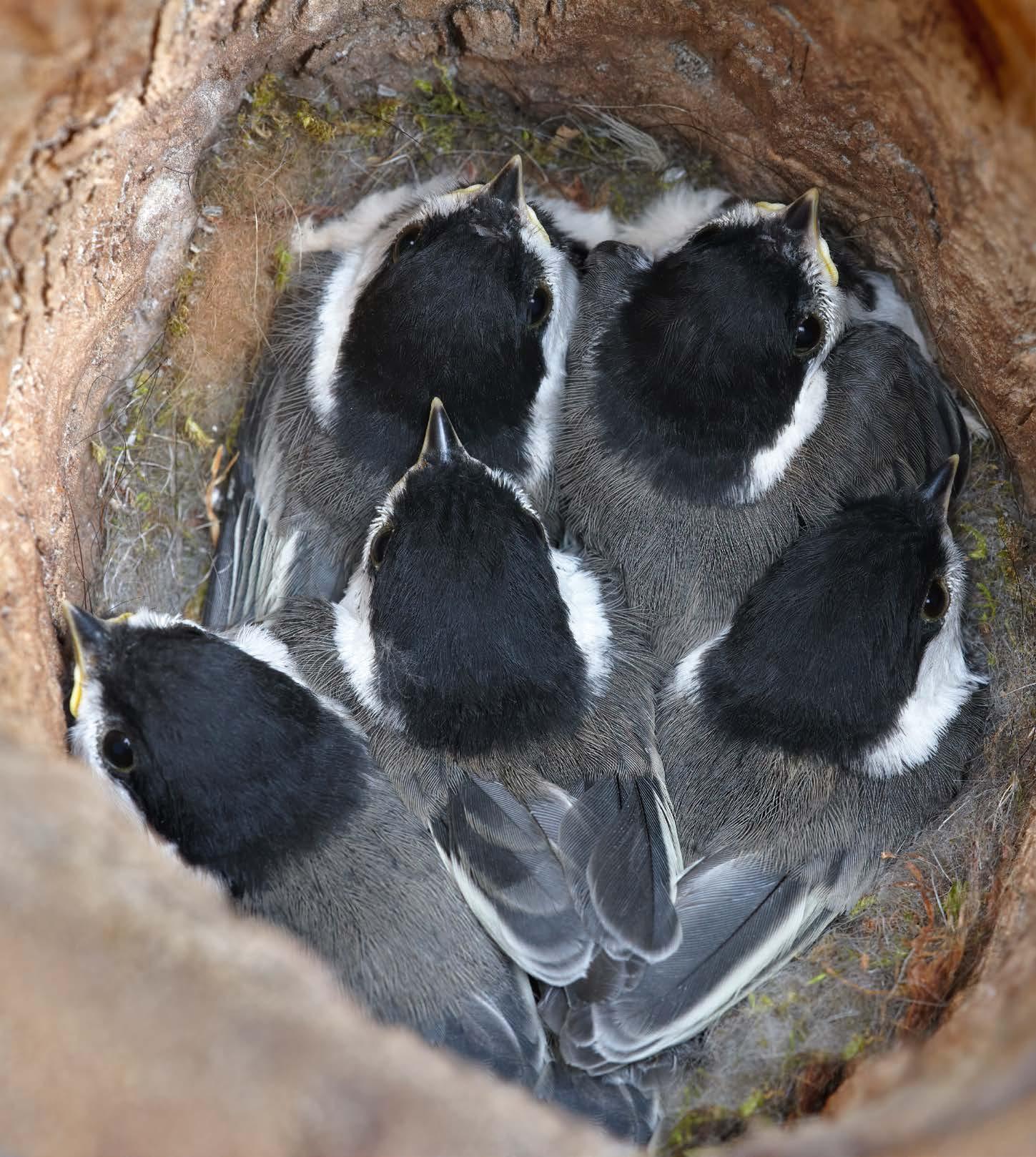
s a boy – with a can of worms in hand – I climbed my neighbour’s apple tree. Straddling a branch, I settled beside a robin’s nest, untangled my worms and dropped them into the wide-open maws of four hungry youngsters.
I had recently read a nature book and yearned to duplicate some of the writer’s delightful experiences with birds. One was feeding baby robins. He had befriended a mother robin who perched on his can of worms and picked them up in her beak to feed her young. This was something I thought was doable, unlike another of the writer’s ventures that involved opening his kitchen window in January, spreading seeds on the table and inviting the birds in.
My attempt at feeding the robin nestlings didn’t go as swimmingly as I’d hoped. Mom and dad robin squawked and fluttered and swooped ominously close to my head. The clamour soon roused my neighbours, who, like the robins, were unimpressed by my attempted beneficence. I clambered down, chastened but unscathed.
But something good did come of that aborted attempt to woo the robins’ affections. I had, for the first time, examined a robin’s nest closely – and marvelled at its sturdy construction of grass and mud. It was, put simply, a work of art.
Consider accepting a challenge to build a bowlshaped structure that a human could comfortably settle into. For robins, the materials include about 350 sticks and blades of grass, as well as the mud that cements them together. To build the same structure for a person, you might gather a similar number of sticks but substitute long cattail leaves for the grass, and assume that a full bucket of gooey mud is required. Three days might seem like ample time to complete the task – until you realize it’s not a hands-on project. You must build the structure almost exclusively by using your mouth, though if you use your feet to temporarily hold branches in place … well, that’s permissible.
The fact that birds can build nests – intricate, sturdy, structurally sound nests – with their beaks is
CONTINUED FROM PREVIOUS PAGE
astonishing. The stunning Baltimore oriole weaves complex pouch-like nests that usually hang from the slender outer branches of trees. Biologist and nature writer Bernd Heinrich believes this positioning is a response to snake predation in the neo-tropical realms where orioles evolved, but in Headwaters, this placement may also thwart predators such as raccoons, opossums and squirrels.
A major component of most oriole
nests is the strong fibre found in milkweed stems. Orioles are able to identify dead milkweed stems among the confusion of plant detritus in a spring meadow. One year a female oriole flew into my garden, located the prone stems of the single swamp milkweed I grew and stripped them of their sinuous fibres. She knew exactly what she wanted.
Though orioles stick to the same basic design for every nest they build, they’re flexible in their choice of materials. They can assess materials they haven’t encountered before and choose


to use them if they meet some innate oriole-nesting standard. Biologist Nancy Flood, who has studied orioles for decades, once found an oriole nest made entirely of fishing line.

Of course, the nests of all birds are not works of art. The diversity of shapes and materials, as well as the sophistication of technique is astonishing. It’s as if Mother Nature invited her avian progeny to a conference and asked them to brainstorm all the ways to build nests, imploring them not to dismiss any idea as too silly or too outlandish.
The birds’ responses? Stick nests, grass nests, mud nests, cavity nests with a dollop of tree sap around the entrance hole, nests containing snakeskins, nests that look like old-fashioned ovens, nests knitted with spider silk, nests using saliva as glue, intricately woven nests, messy nests, nests in trees, nests in thorn bushes, nests on the ground, nests in the ground.
And some birds, stretching Mother Nature’s mandate to the limit, decide to build no nest at all, opting instead to steal nests from their neighbours or, even more slothfully, to slough off














Smallest Ontario nest
Ruby-throated hummingbird. The exquisite nests of these smallest of Ontario birds are about 5 centimetres wide and about 2.5 centimetres deep. The nests are carefully wrought cups of thistle or dandelion down held together by spider webs and camouflaged by lichen.
Largest Ontario nest
Bald eagle. These majestic birds build huge stick nests. A bald eagle nest in Florida holds the world record for largest bird nest. It was nearly 3 metres in diameter, 6 metres deep and weighed more than 2 tonnes!
Number of eggs in a wood duck nest
A single female wood duck (common residents of Headwaters) can lay about 15 eggs, but they will also sometimes “dump” their eggs into another wood duck’s nest, bringing the total to 40 or so!
Number of eggs a female cowbird can lay in nests of other birds
Eighty or more – in a single season.


their parental responsibilities by laying their eggs in other birds’ nests – and expecting those other birds to raise their young.
The story of one such nest interloper starts on the Great Plains of North America in the 19th century. Early in the 1800s, living waves of bison rumbled across the endless grasslands. As they fed, they flushed out insects such as crickets and grasshoppers, and their bison “patties” attracted clouds of flies and beetles. This bounty of insects attracted insect-eating birds, and one bird species in particular, the
brown-headed cowbird, became the bisons’ avian travelling companion. (Perhaps, when considering this time in North American history, we should think of cowbirds as “bisonbirds.”)
Cowbirds are infamous for laying their eggs in the nests of other songbirds and are described, unflatteringly, as “nest parasites.” Ornithologists offer the theory that cowbirds developed this parasitic behaviour because they needed to follow their large, hairy benefactors across the plains and had no time to settle down and raise families. So other birds became the unwitting foster parents of cowbird nestlings.
However, as the bison fell to the guns of colonizers, cowbirds shifted their adaptive gaze to bison proxies – the cattle that the new settlers were introducing throughout North America.
Livestock, at least on eastern farms, are stay-at-home animals, but that didn’t change the cowbirds’ nesting behaviour. Evolution takes time, and although most cowbirds no longer roamed with the buffalo, they continued to lay their eggs in the nests of other species.
While some of those species recognize cowbird eggs and push them out or cover them with another nest, most species accept the eggs as their own.
Some songbirds are especially hard hit by the cowbirds’ habits. The Kirtland’s warblers in Michigan, for example, might well be extinct today if not for programs for the trapping and killing of cowbirds – with the result that in 2019 the warblers were removed from the endangered or threatened list.
In Headwaters, the nests of diminutive chipping sparrows are common targets of cowbirds. There is something disturbing – almost monstrous – about watching a haggard adult chipping sparrow dropping food down the throat of a clamouring cowbird fledgling twice its size.
But here, I’m guilty of human bias. Humans are fond of judging the morality of others, and we assess animals through the same critical lens. Cowbirds aren’t morally weak, nor are they malevolent. They are simply
CONTINUED FROM PREVIOUS PAGE
following a particularly inventive evolutionary strategy that has served them well for thousands of years.
Still, if we judge cowbirds harshly, we might also tag great horned owls as bullies. These impressive raptors, the unassailable “tyrants” of nocturnal skies, sit atop the avian food chain in Ontario woodlands. Of course, as with cowbirds, judging great horned owls as “tyrants” is silly – but what might prompt that judgment? Great horned
owls don’t build nests. Why build a nest when you can simply steal the nest of another bird? Because these owls breed as early as February in Headwaters, it means they’re sitting on those purloined nests long before the “legitimate” tenants begin their own nesting cycles. For the crows, hawks and herons that built the nests the previous season, retreat is the better part of valour. They don’t ask for them back.
Some of the most interesting nesting behaviours can be found among cavity-nesting birds – birds


Young bank swallows peer from their nest burrowed into a sandy embankment. An eastern bluebird brings nesting material to furnish a handy bird box. These tree swallow eggs will hatch in a delightfully downy nursery. The tiny eggs are little more than 2 centimetres in length.

that nest in holes they find or excavate in decaying trees, sandy cliffs, river banks, rock crevices and the like, or in birdhouses we erect for them. Two such species, the tufted titmouse and the Carolina wren, are largely found in the Carolinian zone well south of Headwaters, but they are gradually expanding northward and occasionally wander into these hills.
Like their chickadee kin, tufted titmice line their nests with fur. This isn’t surprising, but their go-to source of fur is. There are amusing videos of devil-may-care titmice landing
on sleeping dogs or on the backs of raccoons to pluck their fur.
Carolina wrens, for their part, are noted for building nests in an assortment of human-made objects, including flowerpots and mailboxes. And anyone with a garage in Carolina wren territory may find it prudent to keep the door closed. These bold little birds aren’t afraid to enter a garage and appropriate a handy spare tire or shopping bag as a potential home, or even the pocket of an old coat or snug boot or shoe.
Great-crested flycatchers and red-
breasted nuthatches are two cavitynesting birds common in Headwaters. Small entrance holes keep many predators out, but nest protection can always be enhanced. Great-crested flycatchers, noisy songbirds of moist woodlands, often add a snakeskin to their nests. It’s suggested that a potential nest raider such as a squirrel or blue jay might see the skin and back off, fearing the snake that sloughed it may still be around. It doesn’t matter that no Headwaters snakes are able to climb trees and eat birds or squirrels, the predators don’t know this. A fear of big snakes is likely part of their evolutionary legacy.
Red-breasted nuthatches smear the entrance of their nests with evergreen sap, which may dissuade noxious insects and even small predators from entering. These engaging little birds, frequently seen at bird feeders, have been observed using flakes of bark to apply the sap, earning them membership in the very exclusive club of tool-using birds.
Cavity-nesting birds face stiff competition for a limited supply of accommodation. Woodpeckers are the primary builders. These ecosystem engineers create nesting habitat for themselves and, inadvertently, for a host of other species. Demand for woodpecker-created lodging skyrocketed with the regrettable introduction of starlings and house sparrows from Europe in the 19th century. The next time you see a swirling flock of starlings, know that every one of those myriad birds was raised in a natural or human-made cavity.
Bluebird populations plummeted in response to the competition from the newcomers. Their future appeared bleak but was rescued by a North America-wide effort to install bluebird “trails” consisting of scores or even hundreds of birdhouses in the meadow and hedgerow habitats bluebirds favour. This housing blitz worked. Here in Headwaters, these glorious songbirds are now a common sight along rural roads.
The demand for nesting cavities provides a great opportunity for us to make a difference. At Forks of the


Credit Provincial Park, nearly all the 25 bird boxes put up by the Halton/ North Peel Naturalist Club are used annually. Club members open each nest box at the end of the breeding season to determine who the occupants were. Nests with a luxurious layer of feathers indicate tree swallows. Boxes full of sticks point to house wrens, and houses packed with a thick layer of grass signal bluebirds. This successful project has also raised an important question. I wonder how many more wrens, bluebirds and tree swallows would fly at the park if more nest boxes were installed? At what point would the demand finally be satiated?
Other Headwaters birds have had their nesting success enhanced, not through conscious human effort but by adapting to our buildings and infrastructure. These birds include the swallows and chimney swifts I wrote about in a 2014 issue of this magazine. The high-flying swifts lost much of their nesting habitat – hollow trees –when European settlement swept aside the vast forests that once cloaked the landscape. But a solution was at hand. In a seismic adaptive shift, swifts moved into chimneys.

Their nest construction is unique among Headwaters birds. Swifts’ tiny feet don’t allow them to perch in trees, so they break off small twigs on the fly. They then use their saliva to glue the sticks to the interior of chimneys. Consider how quickly this organic “glue” must dry. Perhaps human engineers should study its composition.
But if humans inadvertently threw chimney swifts a lifeline, we are now reeling it back in. Old, open brick chimneys are disappearing. Having lost hollow trees, chimney swifts are now losing their substitute. Can they once again reinvent their nesting site selection? (Custom-built nesting towers have been tried, but so far unsuccessfully, at least here in Canada.)

Swallows, too, have changed their nesting habits to capitalize on humancreated structures and landscape modifications. These days, cliff swallows could now more accurately be called “bridge swallows” – because

CONTINUED FROM PREVIOUS PAGE
far more of them now nest, often in dense colonies, under these artificial structures than on cliffs. They also commonly nest in barns and under the roofs of rural porches. Their nests are exquisite gourd-shaped structures, each fashioned with about a thousand dollops of mud.
Barn swallows, of course, are named for their habit of nesting in barns, though they were formerly restricted largely to caves. And bank swallows still tunnel into riverbanks to build their nests but have also benefited from artificially created cliffs at quarry sites like those that pock the Headwaters landscape.
But the nesting needs of all birds go far beyond simply having a suitable place to build a nest. Swallows, for example, will ignore great nesting habitat if food for their young is in short supply. This is why residents of Shelburne, Orangeville or Bolton don’t usually find barn and cliff swallows nesting under their eaves – where there is plenty of nesting habitat, but a dearth of bugs. This is also why the barn swallow nesting structures erected in recent years have had checkered success.
Adequate food, though, is only one essential requirement for nesting birds. Only about a dozen species regularly nest in urban settings. These species include the introduced starlings and house sparrows, as well as natives such as house wrens, chickadees, grackles and, of course, robins.
I focus on client-centred and relationally sensitive psychotherapy. Together you and I will work to interrupt patterns that may once have been helpful but no longer serve you. Let’s talk about how I can help you heal and grow from within.



liafalzon
Although it has been suggested that planting more native trees to support caterpillars and, in turn, feed songbirds, would boost the modest tally of species that nest in towns, this is unlikely. Safety is also essential for successful nesting, and for most Headwaters birds, suburban living is simply too dangerous. Imagine, for comparison, you were considering a move to a neighbourhood where you can raise your family. You find one that offers several grocery stores and a selection of reasonably priced restaurants, so you know feeding your family won’t be a problem. Then you discover that crime in the neighbourhood – vandalism, home
invasions, even homicides – is off the charts. Trembling, you look elsewhere.

If you think I’m overstating the danger, consider that no ground-nesting birds choose urban areas. In the rural areas of Headwaters – the farms, the fields, the wetlands and woodlands – more than 40 species nest on or very close to the ground. These include about 15 species of warblers and five species of sparrows. But a glance out your urban window reveals why towns frighten ground-nesting birds: roads, lawns, parking lots and cats.
Still, in the towns and villages of Headwaters, residents can take positive action to support birds. Growing native trees in our yards will help the small number of species that have adapted to urban life, and also feed other species that pause to forage during migration. Conifers in particular can provide the dense nesting habitat some urban birds require to protect them from cats. And speaking of cats, we can keep them indoors – for their safety and the safety of urban wildlife. We can also advocate for the rewilding of portions of urban parks, replacing some of the turf with meadows, shrubs and trees.
Beyond our towns, we can manage Headwaters conservation areas and provincial parks to maximize habitat diversity. Planting trees is sometimes the answer, but removing trees is also sometimes necessary, as has been done at Forks of the Credit Provincial Park to preserve valuable meadow habitat where at-risk bobolinks and meadowlarks nest. And we can put up bird boxes just about everywhere: in towns for chickadees and house wrens, and in rural areas for bluebirds and tree swallows. And on a much larger scale, we need to protect the Greenbelt.
The breeding birds of these hills are nurtured by Headwaters’ diverse habitats, habitats that offer not only food and security, but also scope for the wondrous engineering of their nests.
Don Scallen is the author of Nature Where We Live: Activities to Engage

Your Inner Scientist from Pond Dipping to Animal Tracking. Read more of his observations on local flora and fauna in “Notes from the Wild” at inthehills.ca.




Glance out the window as chickadees grab and go from a half-full feeder
Scan bare branches for the source of that sweet piercing note


Study LBJs* in the garden who flit off and on seed-heavy flowerheads
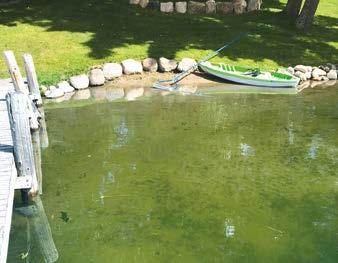
Squint into the sky to track raptors who cast fast shadows


Notice flapping herons heading home slowly to their heronry

—Carol Good

































It won’t be long before the kids are saying sayonara to school and hello to eight glorious weeks of freedom – so now is the time to book summer camp! Headwaters is home to a wide array of options, so whether kids are into science or sports, hockey or horseback riding, music or martial arts (or all of the above), parents and caregivers are sure to find a camp that fits.
Our Kids’ Camps in the Hills page at inthehills.ca/kids-camps-in-headwaters is your go-to guide. Here’s a sampling of what’s already available – check in with us regularly for updates.
With a good mix of outdoor activities, sports, arts, crafts and more, these full-day classic camps are packed with fun. Check out the Town of Orangeville’s activity- and games-filled Camp Aliquam; Mono’s outdoorsy EcoCamp at Island Lake or Compass Camps, which offer everything from orienteering to music; the sleep-away vibe of the 30-acre day camp, Kids Inc., in Erin, and the sprawling Mansfield Outdoor Centre in Mulmur. Caledon’s Teen Ranch has hockey- and riding-focused day camps, plus overnight camps for older kids.


Got a high-energy kid? Keep them moving with basketball and volleyball at Mono’s Athlete Institute, or tennis, squash and more at the Headwaters Racquet Club in Amaranth. In Orangeville kids will flip (both literally and

figuratively) at Twisters Gymnastics and Champion Cheer. Young golfers can hone their swing at the Shelburne Golf Club or Lynbrook Family Golf Centre in Amaranth. The Hill Academy in Caledon also runs multisports camps for hockey, lacrosse and more.
Orangeville offers several outlets for budding artists, including Artsploration, Art with Jada, Maggiolly and Pottery Parties in the Hills. Children step into the spotlight on stage at Theatre Orangeville. Tiny dancers swirl and groove at the Caledon Academy of the Arts, or Orangeville’s Citrus Dance, the Academy of Performing Arts and Studio III
STEM Camp, at Westminster United Church in Orangeville, features weekly themes combining
coding, games, gadgets and more, while the Raise-an-Artist Project in Ballinafad offers a blend of arts and science with fun STEM activities including film, animation and 3D printing.
The hills of Headwaters are the perfect setting for all things equestrian, so saddle up the kids at the Caledon Equestrian School, Greyden Equestrian Centre in Erin or Cantercall Riding School in Mono.
Does your child love animals and farms? They get to experience life on the farm and really dig in the dirt at Mono’s Fiddlehead Care Farm. At the Dirt 2 Delicious Cooking Camp, run by Palgrave United Community Kitchen, kids harvest, cook and eat local food from the Albion Hills Community Farm.
There are so many camps in Headwaters, we couldn’t possibly list them all here! But here’s a start. Check out our website inthehills.ca for our full list, which we regularly update.
AMARANTH
Headwaters Racquet Club
Lynbrook Family Golf Centre
BRAMPTON
Peel Art Gallery Museum and Archives
CALEDON
Albion Hills (Toronto and Region
Conservation Authority)
Caledon Academy of the Arts
Caledon Equestrian School
Palgrave Sports Academy
Palgrave United Community Kitchen
Teen Ranch
The Hill Academy
Town of Caledon Recreation
YMCA Cedar Glen
ERIN/BALLINIFAD
Greyden Equestrian Centre Kids Inc.
Raise-an-Artist Project

MELANCTHON
GO Adventure
MONO
Athlete Institute
Cantercall Riding School
Compass Camps
EcoCamp

Fiddlehead Care Farm
Island Lake Rowing Club
MULMUR
Mansfield Outdoor Centre
Museum of Dufferin
ORANGEVILLE
Academy of Performing Arts
Art with Jada
Artsploration
Champion Cheer
Citrus Dance
Maggiolly Art
Pottery Parties in the Hills
Theatre Orangeville
Town of Orangeville Recreation
Twisters Gymnastics
STEM Camp at Westminster
Studio III
SHELBURNE
Shelburne Golf Club
Streams Hub
Town of Shelburne Recreation
Do you run a camp in the area? Add it to the list: inthehills.ca/events/my-events/add

The world has stood in awe of the courage of Ukrainian people rising to meet this moment in their history. Their fortitude, resolve and resilience certainly tracks with the quarter million Ukrainians who have come to Canada over the past century. Only Russia and Ukraine itself have Ukrainian populations larger than Canada. Historically, their descendants have thrived here. Clearly, those who have found refuge in our community, even for a short while, are cut from the same cloth. These are just a few of their ongoing stories and those of the generous Headwaters community who have lent a helping hand.
A tidal wave of powerlessness sweeps over Olga Sukhina at 2 p.m., February 24, 2022 – the first day of the Russian invasion of Ukraine.
Shelling has begun on the outskirts of Odesa, but her anxious dog needs walking. Olga watches vigilantly from her window in this southwest Ukrainian seaport, known as the pearl of the Black Sea. Just over a million residents live in and around the city’s historic core, designated a UNESCO World Heritage site for its roots dating back to the ancient Greeks. With dog leash in hand, Olga’s five-year-old son, Sava, heads down to play with friends as he often
does, oblivious to the new perils of war. He’s inside the enclosed play yard of their low-rise apartment complex, normally a sanctuary for neighbouring families and children.
Suddenly, the deafening whir of a military helicopter swooping low over their courtyard scatters Sava and his playmates to nearby covered parking areas. Olga looks on in horror, with no idea if the aircraft is Russian or Ukrainian. “Just 20 hours after the war starts, I make a decision,” says Olga. It’s a decision unthinkable just the day before. By nightfall, Sava and his two older siblings, Alisa, 13,
and Seva, 10, say goodbye to their father, Andrew. The four then set off into the night on a frightening journey of unknowns that, months later, would land them at Toronto’s Pearson International Airport, with one bag of necessities and one phone number.
At the same time, an ocean away from the conflict, a world away –Russian-born Katya Sundukova and her Canadian husband, Jason Campbell, also struggle with feelings of powerlessness, but from their log house on an idyllic wooded acreage in Caledon. What could they do to make a difference to Ukrainian families now scattering across the globe to escape this senseless conflict? A lot, it turns out.
Katya’s next steps would ultimately put her phone number in Olga’s hands. And while Katya could not restore the unimaginable loss of abandoning cherished lives and homes in Ukraine, she could share at least one powerful thing they’ve left behind – a network of community who can help these families figure out what’s next. It’s a network Katya would expand and offer to many more displaced Ukrainians landing in Ontario over the coming year.
“I am from Moscow. I am a Russian citizen. I am a British citizen and I moved to Canada from London 10 years ago with my husband, and I now have permanent resident status here. I also have Ukrainian roots and distant relatives in Kyiv. But none of this makes a difference,” explains Katya from the kitchen table in her cozy log home, coincidentally built in Ukrainian style. In many ways, her complicated background mirrors the complexity of the Russian invasion for everyday families on each side of the embattled border. “Russian, Ukrainian, we are all brothers and sisters,” she says.
What began for Katya as an effort to help a Ukrainian girlfriend escape the conflict soon broadened to include anyone who needs help. The moment the Canadian government started
issuing visas to displaced Ukrainians in March 2022, Katya reached out to needy families on a global Facebook page, then WhatsApp. She offered to host them at her family’s home.
“When someone reaches out, I always answer,” says Katya. “Even if I cannot host, just knowing someone cares and will answer, I think it is important.” Now, a year later, Katya, Jason and their 13-year-old son, Sasha, have hosted 15 Ukrainian families. And Katya has helped hundreds more with resumé vetting, resources for household items, contacts and many other things. “They arrive traumatized, in a fog. They often leave behind husbands or older relatives who are unable or choose not to leave,” she explains. “I can make a little individual peace for them in my home by looking after them and by just giving them support and help.”
Most of Katya’s families have not remained in Headwaters. Our sparse population and lack of reliable public transit make finding employment and the logistics of everyday life too difficult. Still, Katya’s offer of a soft landing has been a lifeline to all – time to breathe, regroup, and with the help of many neighbours, muddle through the complicated mechanics of building a new life. It is lifeline that Olga and her young family will never forget.
The week leading up to February 24 is filled with all the things Olga cherishes about life in Odesa – family dinners, acrobatic lessons and sports for the kids, the English-speaking club and dog walks through Odesa’s historic streets. A stark contrast to their terrifying escape.
Having just sold their car, Olga calls around frantically to find a driver. Finally, one man agrees to drive them to a village on the border of Moldova. But they soon discover that the shortest route to the border is a solid, unmoving stream of cars, so Olga makes another hard call – they turn instead to the much longer route, 150
kilometres hugging the Black Sea.
Eerily, there is not another car on this road. Soon, out of their left windows, they see why – Russian ships wait just offshore. At the long Zatoka bridge southwest of Odesa, their driver turns off the headlights to avoid being targeted. The bridge is bombed just two weeks later.
At the border, they sleep in their clothes on the floor of a military hospital, shoes on and bag in hand, no internet to reach loved ones or make plans. “Ukrainian soldiers said if we are bombed, you’ll need to run into the fields. I knew the road that would lead to the border. I knew the direction to run,” she says. Olga and her children will stay here for a month.
It’s a long story and a five-month odyssey, via Bulgaria, Romania and Greece, that finally brings this young family to Toronto. Somewhere along the way, all Olga’s social media accounts, email, even her contacts are frozen on her phone. Only one app works.
“It was a miracle. My phone would only save WhatsApp. And somehow Katya contacts me,” explains Olga. “We text each other. I don’t remember when. But I save her contact. Only this contact. No other.”
Once they arrive, the family is offered temporary shelter in a Red Cross-sponsored hotel room near Toronto airport. “I remember that I have only one contact, Katya. I text her and she answers. Katya says, ‘I can help you. Jason will be there in 20 minutes. Organize your luggage, and you come to my home.’ I was shocked. I was so surprised,” she pauses, her voice trailing off with emotion. “She saved me.”
With Katya’s help, Olga connects with a Ukrainian group in Toronto, but high rents and the six-month payment often required up front soon prove a move there is impossible. Instead, Katya connects the Sukhinas to a hosting program of the Chapman’s ice cream family of Owen Sound on Lake Huron. Once again settling in a port city, they now have an apartment for six months free and an entire community eager to help with next steps. The Chapman family have deep roots in Ukraine.
Olga, a marine engineer by trade,
and her husband have been importexport entrepreneurs in Odesa. Today, Olga has a job as kitchen staff in a local restaurant. She also creates Ukrainian dishes – cakes, borscht and perogies (she says she’s now made thousands of them) – that she and her children sell at the local farmers’ market. She pays her rent. And her views of small-town life have changed.
“Canada changed my life,” says Olga. “Nature here heals us.” When asked about the dream of one day returning to Odesa, Olga says the uncertainty of the ongoing conflict, the devastation to the world she once knew thwarts any long-term planning. “It’s hard to come to another country,” she says, but a friend back home has told her that if she returns to Ukraine, she will find that it too has become “another country.” For now, Olga says, “I don’t have a plan. My plan ... to have a happy life for me and for my kids. I think only one day. One day. One day.”
The complexity and mountain of paperwork involved in building a life from scratch, like the Sukhinas, is mind-boggling, never mind if English is not your first language. Still, one thing is certain – it all starts with a host like Katya.
“They come and Canada is giving a work permit card for the first three years. And they are offered $3,000 for adults and $1,500 from the government for children, which is needed for the first few months of rent. But it is impossible to get this money, to start working or to do anything without an address. It is a loop,” Katya explains. You need a Social Insurance Number to work, to get a health card, but you need an address for a SIN number. You need a SIN number for a bank account, but you need a bank account to find an apartment and address, or to receive the one-time government stipend. And so it goes. “And that is why I have had a lot of people registered at my address.”
Navigating this initial administrative maze is just the beginning. What’s next takes a village, and for the families Katya is helping, it is a growing “village” of caring locals.
Like many in Katya’s network, retiree Anne Clark in Caledon found Katya via her posts on a website and app called Nextdoor. It connects local communities on everything from neighbourhood news to finding a good plumber.
“I saw Katya’s post about a family she was hosting and she was looking for local people who could help them practise their English,” Anne says. She also reached out to others who might have useful household necessities to donate. She’s even made space to store the donations in her basement for when new families arrive.
Lynne Smith, a longtime resident of East Garafraxa, has likewise reached out to her church network. Russian-born Nik Ianevich of Loretto contributes by delivering these local donations to families in their new homes. Gabe Preczner, senior vicepresident of Alero Worldwide in Bolton, donates furniture, too, and is looking for ways to hire Ukrainians. And King’s College School in Caledon held a Christmas fundraiser to sponsor one of Katya’s families over the holidays. These are just a few in her community of guardian angels.
Still, as Katya’s community continues to grow, so does the need to help more families arriving. Certainly, the basics required to forge their new lives are similar. They share the trauma of war, but each of their still unfolding personal stories is unique.

“The last seven or eight years we lived in Russia because my husband is Russian,” says Olga Koval in her new apartment in Weston, Ontario. Family life with her husband, Max, and sons Vitaly, 11, and Vlad, 6, carries on in the background as we chat. “But most of my relatives are in Ukraine still.”
Unlike many families forced from Ukraine, the Kovals had a few options. Canada was the only country that would accept Russian partners of displaced Ukrainians – again reflecting the tangle of interconnectedness across
Vitaly, Vlad, Olga and Max Koval
this war-torn border. Still, like all the others, they too feel powerless.
“When the war came to my home region, Kharkiv, Ukraine, we were in Russia and I was woken up. My mother called me. It was early morning.” Olga pauses to gather herself as she recounts the precise moment. “She said, ‘Olga, the war begins. And there are so many planes.’”
What follows for Olga is a month of unthinkable worry from her home in the Russian city of Izhevsk – ironically, a weapons manufacturing centre. Almost 1,800 kilometres away, her parents, grandparents, sister, niece and cousins are all in the line of those first brutalizing attacks. Communications are shoddy as Olga tries daily to check in on family members who are taking cover in unheated basements of old buildings and fruit cellars with dirt floors in the middle of February. There is no way to help – even sending money is forbidden by the Russian government. That is a tipping point. As soon as news hits of Russians leaving for the borders of Armenia or Georgia, Olga and Max know what they must do.
Through all this, Russian misinformation about the war swirls through their community in Izhevsk. As a Ukrainian, Olga has always felt accepted in Russia, but now things are changing. It is time to leave.

The Kovals are one of the first to apply for the visa program in Canada. Their acceptance comes in just three weeks, but it takes months of planning before they can leave. The kids need to finish school. Olga closes down her English tutoring business. Max ties up his work as a cyber security engineer in the pipeline industry. With the help of Olga and a tutor, he learns some basic English. They sell their car – all the myriad details of shutting down one life and planning for another. “But even with all the preparation,” says Olga, “Canada is a completely different world.”
Of the five Canadian contacts Olga finds on a global Facebook page of possible hosts, only Katya responds – again. As with the others, Katya meets the Kovals at the airport after
their gruelling flight via Turkey and Denmark, then hours in customs. In the days ahead she’ll guide them through all the forms and bureaucracy, drive them to the foodbank, translate at the bank, help them plot out next steps. And when their two weeks of required Covid quarantine are over, Katya offers more.
“She said, ‘I can help you with school for kids too,’” recalls Olga. “She says her son, Sasha, goes to the Palgrave School. She says, ‘It’s a good school. And we have a bus. Your kids can also go.’”
Olga is anxious their first day, but to say Palgrave Public School staff, students and parent community embraced Vlad and Vitaly would be an understatement.
“They understood every problem of my children and they said, ‘You shouldn’t worry about them. We will help them,’” says Olga of the teachers at the Palgrave school. “‘We will translate for them. If they have problems, I always call you.’” Soon parents start sending clothes, books, games and even cheques. Of course, Vlad and Vitaly thrive here.
Two and a half months later, the Kovals leave Katya and move to their new Weston apartment, the only one Olga can find that does not insist on six months up front. Max starts the job Katya helped him find, laying fibre optic cable in the city. Vlad and Vitaly start school, and the family begins connecting with other Ukrainian families in the neighbourhood. Katya helps some of them too.
Nibbling on a honey biscuit Max purchased at a nearby Ukrainian bakery, I ask, “And how are the kids enjoying school here?”
With a half grin and a chuckle, Olga replies simply, “It is okay. But it is not Palgrave.”
One phone number, one person willing to answer the call for help – it’s a striking common thread through these stories. But the tenacity and resourcefulness to get to a place


where that number becomes a lifeline – that’s familiar too. Few embody this in-the-bone grit more than 28-yearold Anna Omelchak.
A born entrepreneur, Anna’s chosen profession of architecture wasn’t big enough for her ambition. In February 2022, Anna’s project management consulting business is overseeing various construction projects in Kyiv. Her mother, Yuliia Melnychenko, and her grandmother live together in the much smaller nearby city of Irpin. Anna and her mother, an accountant, have poured every penny into a total renovation of the house there. Still, Anna far prefers the hustle of Kyiv.
“I like this city because there is an atmosphere to do something, to achieve,” she says. “You wake up in the morning, you go and you are so tired when you come home. I like that.”


On February 24, the shudder of bombs awakens Anna in her Kyiv flat, but the significance doesn’t register. She showers, dresses and heads eagerly to work, like any other day. “But when I walk on the street, I see everything is not the same,” she recalls. Soon the magnitude of what is happening becomes clear. By evening Anna is huddling with neighbours in their unheated basement. A couple of days later, news of two bridges bombed in Irpin changes everything.
Their house in the town is partially damaged and there’s now only one way out for her mother and grandmother.
“They don’t have a car and they don’t have their driver’s licence,” explains Anna. “They are quiet people. They don’t know what to do.”
Anna tells her mother and grandmother to leave Irpin. She tells them what direction to walk. She jumps into her car, taking backroads to avoid blockades. “Nobody knows what is in the next 100 metres. I am very scared.”
Before her phone dies, she assures them she will find them on the road. And somehow, eventually, she does. Together at last, they travel across the whole of Ukraine, then across the border to Anna’s friend in Poland.
It’s hard to summarize the frightening, yet remarkably epic road trip Anna will lead in the months ahead. Her grandmother chooses to stay behind in

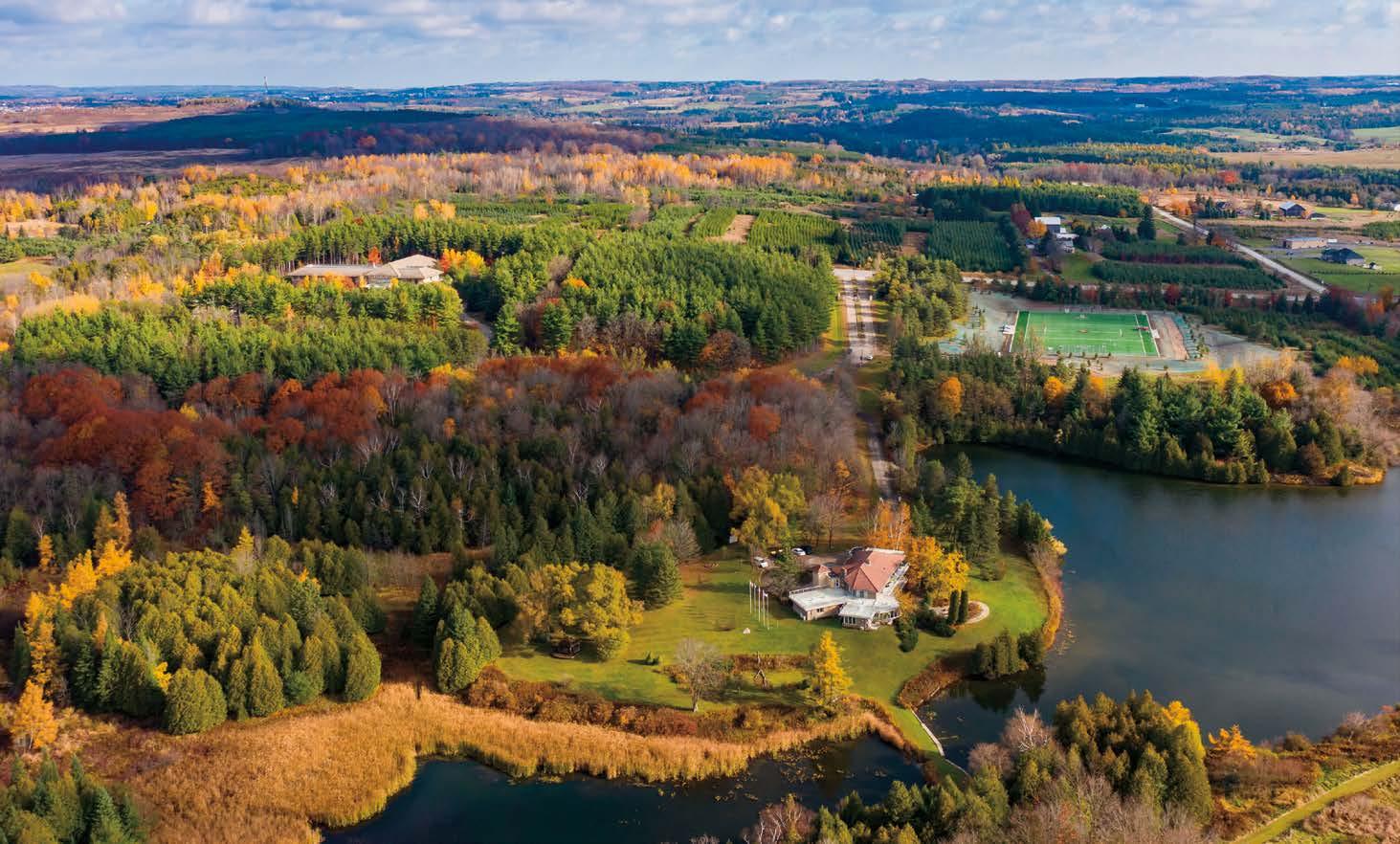










Poland with family. And like so many Ukrainian elders, she’ll eventually insist on returning to her home in Irpin, whatever the dangers. For Anna, though, the prospects in Poland seem limited – too many people looking for work. The road ahead beckons.
“I started to understand which country I can choose to work and earn some money, and I want to have a life,” she explains.
Twenty-three countries, countless stays with European hosts willing to take in displaced Ukrainians, endless broken conversations in myriad languages, and two Canadian visas later, Anna and her mother finally end up in Britain’s Isle of Wight. At some point along the way, Anna also finds that one important contact who will change everything. Ukrainianborn Rostyslav Khomyn immigrated to Hockley Valley from Ukraine 30 years ago. He is Anna’s Katya.
“He called me back in one minute,” remembers Anna of that first call to Ros from England. “He told me, ‘I have a place [for you] to work,’ because his daughter used to work for this place. He tells me to sell my car, to buy plane tickets.” And just like that, Anna has a plan. There are more twists and turns, but not long after, the two women board a flight to Toronto, en route to Hockley Valley. She doesn’t even know Ros’s last name.
Today, you’ll find Anna behind the counter of Hockley General Store. Her mother, Yuliia, works in the kitchen. They both live upstairs – for now, Anna says. She and Ros check in with each other weekly. “He’s like my second godfather,” she says.

“I’ve given help like this to more Ukrainians than I can count now,” Ros says. And like Katya, he answers every call.
For Anna, it’s all about what’s next, and she has big plans. She’s bought a used car to expand her prospects. She’s pushing her mother to get her driver’s licence and take English lessons. “I want to help my mother find her life, maybe find a boyfriend,” she chuckles. Anna is keen to rekindle her career
in construction and maybe restore their damaged home in Irpin. But her most pressing plan involves her grandmother’s big change of heart.
“Soon I will go back to Ukraine for a few weeks to pick up my grandmother,” she says with a broad smile.
“At last, I keep my family together.”
It’s hard to measure the impact of people like Katya, Ros and their generous community of friends and neighbours. Even their smaller gestures can make a profound difference.
Early in the war, at the height of unknowns, two other Ukrainian

to help? Here’s how
To learn more about ways you can help Ukrainian families landing in Headwaters, reach Katya at esundukova@gmail.com
Find out about hosting Ukrainians at icanhelp.host.



families arrive together in Toronto. They’ve met each other during their months-long odyssey. They have a final destination, a place to stay, a community waiting to support them. Even still, Katya reaches out. She knows what they’ve been through. She senses staying together gives them comfort and she insists they come to her home for a couple of nights – a brief respite before their final leg to Prince Edward Island.
The two mothers, Olena Poltoratska and Nadiia Pyvovarova, their four children and their dog join Katya, Jason and Sasha in their threebedroom home – mattresses on the floor and one bathroom for all. As always, Katya pitches in to navigate myriad challenges, including arranging a plane ticket for their dog. Still, there is something else about this brief stay that means even more.
“It was like magic what she gave us when we arrived in Canada, in your country,” says Olena, who is from Dnipro and now settled in Charlottetown. “We don’t know anything. And she gave us this feeling of being invited. She gave us two days of no worry. It was a feeling of home that we had already forgotten.”
Beatty is a freelance writer who lives in the Caledon village of Brimstone.

Spend a lovely day indulging in the savours, scents, sights, and sounds of Downtown Orangeville. From thoughtful menus featuring fresh, local ingredients, to fragrant hand-tied bouquets, beautifully crafted jewellery, and relaxing spa treatments, every moment enjoyed here will charm and delight.
“Be it fine art, photography, or shadow box, please make the investment with Tracey and give yourself the opportunity to bring her into your home.” –Brandon Muir
75 Broadway framedxdesign.com
519-940-3050
Interior Design
• Home Decor Furniture & Recovering
• Custom Drapery & Blinds Bedding
• Custom Woodwork
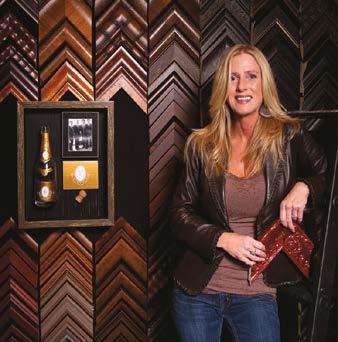
57 Broadway decor.solutions

519-940-4935
An exclusively AVEDA salon, specializing in all things hair. Come indulge yourself and leave feeling renewed.

193 Broadway henningsalon.com
519-942-4297
Fun, educational, inspirational classes. Ages 3 and up. Ballet, hip-hop, tap, jazz, adult classes, musical theatre, summer camps. Recreational and competitive classes. Celebrating 30 years!

133 Broadway academyofperformingarts.info
519-941-4103
Blending Portuguese and Italian traditions. We offer breakfast, lunch, breads, desserts, deli, including custom orders and catering. Place your order today at sonofachefbakery@gmail.com.


114 Broadway, Unit 3 @sonofachefbakery
519-942-3042
Raw and tumbled crystals, tarot and oracle cards, jewellery, smoke cleansing products, incense, crystal suncatchers, books, journals, salt lamps, pendulums, candles, essential oils, and herbs.
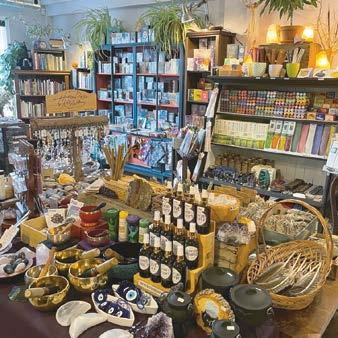
23 Mill Street healingmoon.ca
519-307-1112
Indulge yourself with a tasty tidbit, or surprise someone special with a delectable treat. Handmade chocolates and truffles. Gifts for any price range.

114 Broadway thechocolateshop.ca
519-941-8968
Your medical skincare specialists. Botox, fillers, skin rejuvenation tightening and resurfacing, IPL, laser hair removal, microneedling and peels, and body contouring.
75 Broadway
The Foley House Unit 203 skinappeal.ca 519-307-7546
Start a new tradition, shop local, handmade. All Canadian fine art and fine craft. Pottery, jewellery, glass, wood, and paintings. Visit our studio artists at work
189 Broadway dragonflyarts.ca
519-941-5249
Discreet personalized service. Specialty bra sizing from petite to voluptuous, classic to romantic. Come in for your free bra fitting today.

143 Broadway thescenteddrawerltd.ca 519-941-9941
Wicked Shop Local, Bakery & Marketplace is now open in Orangeville! We’re baking up delicious desserts and carrying your favourite local brands.

17 Armstrong Street wickedshoplocal.com 519-307-5400
Fine jewellery, custom designs, watches, repairs. Accredited Appraiser CJA, Goldsmith, Gemologist on premises. Since 1960.


163 Broadway facebook.com/korstenjewellers 519-941-1707
Suzanne Gardner Flowers is a European-inspired boutique with fresh florals, curated gift boxes, luxurious goods sourced from Europe, espresso, and much more.


131 Broadway sgflowers.ca
519-307-6500
An upscale thrift boutique with an eclectic selection of bargain priced treasures & clothing changing daily. All net proceeds buy equipment for Headwaters Hospital. QUALITY donations always gratefully accepted.

127 Broadway facebook.com/secondscount2
519-942-9309
Specializing in creating beautiful skin, enjoy a friendly atmosphere and professional aesthetic services from head to toe. Come in and discover the OxyGeneo 3-in-1 super facial.

10 Second Street skinntonic.ca

519-942-7546
Change lives, shop fair trade, enjoy our selection of jewellery, home accents, clothing, Giddy Yo Chocolate, wooden toys, art by Mary Scattergood, Planet Bean coffee and so much more! Come and visit.
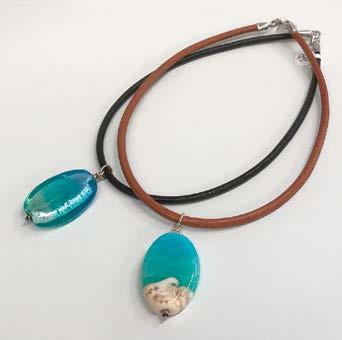
153 Broadway sproulesemporium.ca 519-941-3621

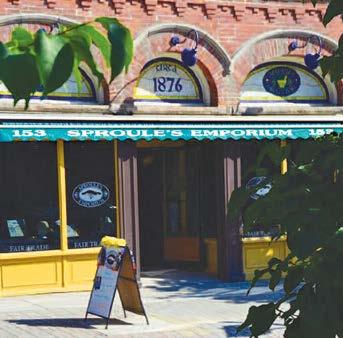
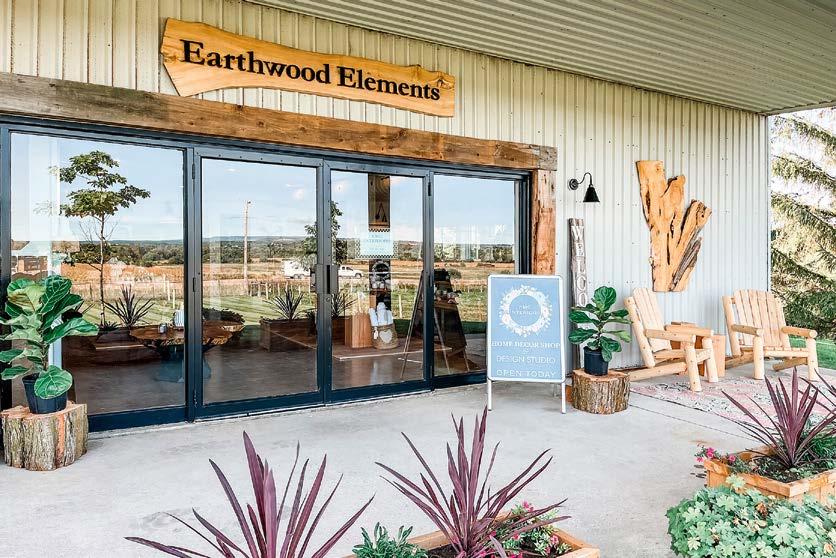






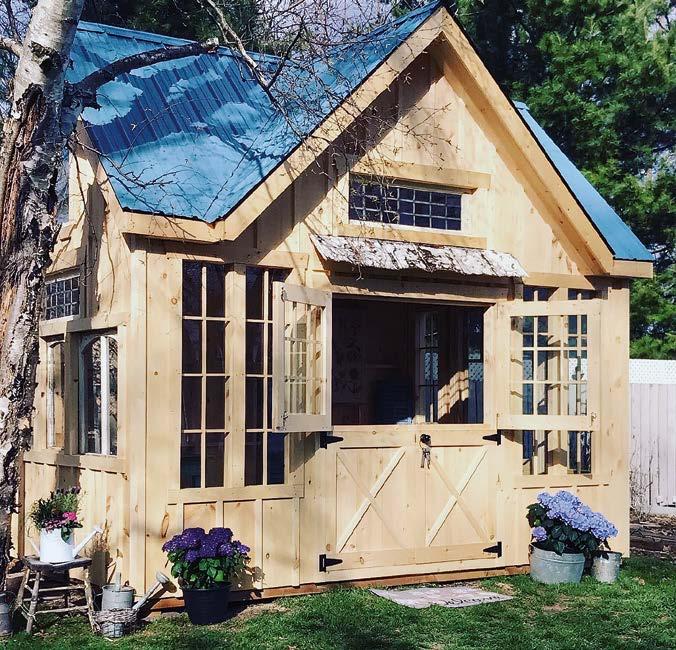



hen wild animals intersect with human activities, it’s most often the animals who pay the price. More than 12,000 wild animals collide with cars and trucks every year in Ontario alone. And those are just what the OPP know about – the actual toll is certainly several times higher. Add to that number animals that are poisoned, shot, orphaned, impaled on fences, or that fly into windows – and it’s clear the human world is a very dangerous place for wildlife. It’s against this onslaught that veterinarian Sherri Cox is determined to pit her considerable drive and skill.
With a ready smile and seemingly boundless energy, Cox is the cofounder of the National Wildlife Centre, a wildlife hospital and veterinary training centre under ambitious development in Caledon. For now, Cox’s home base is at the Glendale Veterinary Hospital on Charleston Sideroad, actually in the van that’s parked nearby. The van is a mobile hospital fully equipped for anaesthesia, X-rays and surgery, and it’s ready to be called out at a moment’s notice to come to the aid of a wild animal.

The van, however, is just the starting point. Cox has goals that cross Canada and have already extended into other provinces. The long-range plans for the centre will reach a milestone this year with the first construction phase of the project, a field hospital behind the Glendale clinic. It is the predecessor of a $6-million, 26,000-square-foot headquarters and training hub still in the works.
Twenty years ago, however, Cox’s career trajectory was very different. We sat down with her to talk about the inspiration behind her vision for the National Wildlife Centre.
CONTINUED ON NEXT PAGE
Bring your deck to life at night. Create your own personalized combination of railing styles and remote-controlled LED lighting options with Regal’s 3-step illuminated railing system. Leathertown Lumber is the complete home building and renovation source for do-ityourselfers and professionals and the leading retailer of lumber and building supplies.



IN THE HILLS : You were having considerable success in the corporate world, a vice-president of a Fortune 500 company, when you made a dramatic switch to veterinary medicine, focused on saving wildlife. When did you first realize your sympathy for injured wild animals?
SHERRI COX : I’ve always loved wildlife, nature and the environment. I was in a corporate job and enjoying it, but I really wanted to help wildlife. So in 2002, when the Prestige oil tanker spilled off the coast of Galicia, Spain, I took my vacation and volunteered to help. We were out one day doing a beach bird survey and I saw a beautiful northern gannet, a giant white bird, standing on the edge of the boat, shivering and covered in oil, and we couldn’t get to it. That bird, along with 300,000 other seabirds, died in that oil spill and I thought, “How can I possibly go back? How can I not go and help those animals that don’t have a voice?”
We are stewards of our environment. An animal that has a broken leg, or an animal that gets sick from eating lead shot, they will just suffer out there in the wild – we see so much suffering in the wild. I said, “That’s it, I’m going to dedicate the rest of my career to helping to right the wrong and try to help sick, injured or orphaned wildlife.” I went back to school and got the courses I needed to get into vet school.
ITH : Why is it important to try to save injured or orphaned wild animals?

SC : I think it’s important for a number of reasons. Look at the populations of animals that are becoming extinct or extirpated in Ontario. You know if it were your dog that was suffering, you would probably take it to a vet and get it some help. No one is there for wildlife. So I feel we need to help these animals that are suffering incredibly, sometimes at the hands of what we do. Look at the turtles. It can take 20 years for snapping turtles to reach sexual maturity, so every time we save a turtle, we’re helping the population.
ITH : You rushed off to Spain to help save animals caught in the oil spill. Now, as a veterinarian, you operate on injured bears, foxes, deer and such. Are you on call? How far afield do you travel?
We are a team of Traditional Chinese Medicine and Acupunturists trained in China with many years of university teaching & clinical practising experiences for natural herbal formulas and acupunture treatments We treat chronic rheumatoid arthritis, osteoarthritis, fibromyalgia, infertility, irritable bowel syndrome, sciatic pain, bell’s palsy and other chronic health problems.. for pain reduction, symptoms release and control

We also provide preventive treatments for other health related problems
www.leathertownlumber.ca www.ontariopainclinic.com


SC : We work seven days a week. We’re on call 24/7 and happy to be so. I recently went to Nova Scotia to work with my intern with some deer. It’s not uncommon for us to zip up to Huntsville or Rosseau. We also have rehabilitators who bring us patients from all over the province –from Sarnia, Ottawa, from Cochrane on down.
ITH : In the midst of all this, you’re continuing to develop the National Wildlife Centre, described as a centre of excellence for conservation, wildlife clinical research, wildlife medicine, training and education. Why is it important to have a national organization?


SC : It’s important because we want to build capacity. We feel the way we can do that is to be connected to wildlife centres across Canada. By doing that, more animals can get help. We hope to train more people, open more rehab centres, and they can train others. Now, instead of having just one intern here in Ontario, I have five interns across Canada. When we do our rounds call, we talk about unique cases: “What are you working on? Okay, let’s pull up the X-ray and take a look.” Everyone is learning, and so by having more centres we’re training more veterinarians, and wherever they go, they take that knowledge and hopefully train more vets and help more animals through that sort of ripple effect.
ITH : What is the overall goal of the National Wildlife Centre?














SC : We have four pillars. The first is education and conservation, and that’s educating the public, educating students, whether that’s vet students, biology students. Education is a big piece and we do that every single day.
The second pillar is around wildlife rehabilitation. And the third pillar is discovery – that’s where we want to disseminate our findings so others can take our work and they may want to advocate based on something we’ve done.
For example, I recently published a paper on bromethalin exposure. Bromethalin is a new type of rat poison. It’s a neurotoxicant and there’s no cure. So if non-target species eat it, they could die. We had a black



bear that ate bromethalin and it died. By writing this up, we’re hoping someone reads it and says, “Look, we need to do something about this.” It’s not necessarily going to be our focus here, but we hope by disseminating that knowledge, others can take it and go from there. The fourth pillar is the least developed so far, but it’s around emergency preparedness and response for a catastrophic event that’s affecting animals – whether it’s an oil spill in the Great Lakes or a catastrophic forest fire or drought. Once we get our centre, we’ll have the facility to handle a lot of animals.

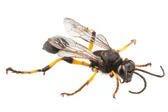


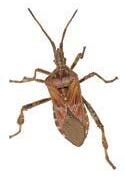
ITH : With the help of corporate donors, you are set to begin construction on the field hospital this year. That’s a big step forward in realizing your goals. Can you describe what other progress you’ve made so far?

SC : We started out with just this little van. It was just myself and my husband, Octavio Perez. Whenever we’d get a call saying, “Hey can you come take a look at this sick … fill in the blank,” we load up everything and go. Octavio and I were the cofounders. The founding board members were my family – one is a veterinarian as well. We started off as very much a tightknit family group. From that we now have an executive director and two new board members. I’ve been able to give up some of the administration to the new executive director so I can focus more on other things. Our goal is to build more capacity in Canada. I’m really pleased that we’ve gone from one little van to now being located in four provinces, Nova Scotia, Ontario, Manitoba and Alberta, and we plan to expand into all. We’ve trained at least a dozen veterinarians since we started in 2014.
ITH : What will the new building encompass? What will you be able to do there?
SC : We hope to have shovels in the ground for our field hospital very soon. This will allow us to start admitting sick and injured wildlife from the public. It’s about 2,800 square feet. It will have a small admissions or intake area where the public can come and drop off an animal. It will have surgery, X-ray, pharmacy, a lab, and some rooms for holding animals to recuperate postoperatively. At the same time,




we will build some conditioning cages for postoperative care of wild animals. For birds, after surgery and after they’ve healed and grown their feathers back, for example, they can go outside and learn how to fly again. That building’s sort of the stage one. We’re also planning a much larger centre, but it all comes down to funding.
ITH : What about funding? Your website makes reference to several corporate sponsors. Where do you get your financial support?


SC : I’m a volunteer, so I don’t get paid by the National Wildlife Centre. Everything we’ve done is voluntary. We don’t receive any government funding. The National Wildlife Centre relies on donations, public donations. We apply for grants, but it’s tough.



ITH : The centre will be constructed on a 100-acre site. How were you able to acquire the land?




SC : We were able to purchase the site thanks to a generous foundation that helped us acquire the land and is holding the mortgage. Glendale Veterinary Hospital sits on the property. So they pay rent to the National Wildlife Centre, which helps us pay our bills. We have the vision, but we need the money and, in the meantime, so many animals need our help. So we’re just going ahead with building the field hospital while we continue to fundraise for the bigger build.
ITH : Do you see things changing? Are there more people interested in helping wildlife?

SC : I am an assistant professor in the College of Biological Science at the University of Guelph, and we have hundreds of students interested in wildlife rehabilitation. I had to cap it at 250 students because there’s that much interest. I have given talks at Headwaters Nature, at the Rotary clubs, schools, guest lectures in other professors’ classes. I teach at the National Wildlife Rehabilitators Association symposium
CONTINUED ON NEXT PAGE











every year in the United States. Wherever we can we talk about the importance of wildlife, the problems we’re causing wild animals, and what we can do to help.
ITH : What stories stand out among the animals you have treated?
SC : It can be overwhelming because it really does take a village to help wildlife. It’s not just one person or two or three. I think about last summer when we had a black bear that was hit on the highway up in the Parry Sound area. The bear wasn’t moving, but instead of shooting it, the OPP wanted to help the animal and so they called Bear with Us run by Mike and Ella McIntosh. They went out and the bear was very much alive, but it had two broken forelegs. They brought the bear down to us and we were in surgery for seven hours repairing those legs. The bear just got released in November.
We had a surgery here on a trumpeter swan with a broken humerus –that’s the big bone in its wing – and our team of veterinarians performed the surgery. But because we don’t have a centre yet, we couldn’t keep that swan for its care and rehabilitation, so it’s been transferred to Shades of Hope in Pefferlaw where it will get care until we can take the pins out of its wing. Once we take the pins out, it will continue its rehabilitation there and hopefully get released back into the wild.
Another one I remember was a common merganser. It swallowed
If you find a sick, injured or orphaned animal, your best first step is to contact a wildlife rehabilitator. You can call the National Wildlife Centre at 416-577-4372. “We cannot admit animals right now, but we can certainly give advice,” says NWC veterinarian Sherri Cox. “Or you could call any wildlife rehabilitator by going to the Ministry of Natural Resources and Forestry.” See ontario.ca/page/ find-wildlife-rehabilitator.

Cox also advises, “Members of the public should not care for these animals on their own. It is not legal to do so. Wildlife rehabilitators have the training and expertise to properly care for wild animals. Feeding an improper diet or housing the animal without knowing the natural history of that species could lead to detrimental outcomes. Wildlife rehabilitators work with their veterinarian to obtain appropriate medications based on the animal’s ailment.”
Cox also says you should avoid speaking to the animal. “We have a rule in our hospital that if the animal
a fish hook. Birds aren’t like mammals; they don’t have a diaphragm separating the chest cavity from the abdominal cavity. They have air sacs and all kinds of weird things. When I went in surgically, I could actually feel the heart beating on my fingers. It was a long surgery, but the bird did great and was released.
Now we do more advanced surgeries on what normally would have been a death sentence for some of these birds. We had a turkey vulture with an old fracture that healed crookedly, so the bird couldn’t fly. We’ve had red-tailed hawks too. Now we can refracture, pin and heal. That vulture was flying beautifully after a couple of months. We have a lot of those stories.
SC : Well, honestly, the biggest thing we need right now is financial support to build this hospital. The sooner we can get a hospital, the more animals we’ll be able to help, whether it’s, you know, “I have found a baby bird” or “I just found an animal hit by a car.” We can help, but we need the hospital. That’s our greatest need. That’s what keeps me up at night.
Tony Reynolds is a freelance writer who lives in Orangeville.
The National Wildlife Rehabilitators Association offers a basic skills training course. Based in the United States, it is just beginning to offer the course in Canada, and Cox is authorized trainer.
“People can reach out to me directly at info@nationalwildlifecentre. ca,” she says. “NWRA does not license you to be a rehabber; rather, they provide training. Anyone interested in working in wildlife rehabilitation should also consider volunteering with a wildlife rehabilitator to get some hands-on training and experience.
is awake, nobody’s talking. Or if you must talk, whisper, because you don’t want to put more stress on the animal. Humans who care for animals want to talk to them, tell them it’ll be okay, but the last thing they want to hear is a human voice.”
And take care not to kidnap. While a fawn or baby rabbit may appear to be alone, its mother is likely nearby. Check back in an hour or two, and if the animal is still there, call a rehabilitator.
“From there, if someone is keen to start their own rehabilitation practice, they need to be authorized by the Ministry of Natural Resources and Forestry. They can contact the district office in their area to arrange a time to take the exam.”
To financially support NWC, go to www.nationalwildlifecentre.ca and click the “Donate Now” button.
 BY ELLIE EBERLEE
BY ELLIE EBERLEE
The day of the week is irrelevant – if it is past 5:30 in the morning, Glenn Carley is writing. Short stories, librettos, novellas, memoirs, and children’s fiction all take shape before a typical workday begins, brought into being in the busy writing nook of Carley’s spacious front living room in Bolton. Carley, a retired social worker and prolific author, types carefully but steadily, filling one virtual page after another on the screen of his sturdy desktop computer. He rests occasionally, settling his eyes on various curiosities assembled like stage props around his keyboard and on the upper shelves of his polished wooden writing desk: framed pictures of his wife, Mary, adult children, Nick and Adriana, and one-year-old granddaughter; a stack of jazz and opera CDs; and two sets of figures of Don Quixote with his steed, Rocinante, and squire, Sancho Panza.
BOLTON AUTHORWhen I joined Carley to hear about his life and work at 9:15 on a Tuesday morning last summer, the author had finished writing for the day. He met me at the door, dressed casually in shorts, sandals and a faded salt-and-pepper T-shirt advertising a local construction company. His hair, caught in intermediate stages of greying, stuck up in an orderly, rectangular mass above his evenly lined forehead; a dense mustache squatted atop his upper lip.
As I followed him up a few steps into a homey kitchen, the author gave no indication of having been out of bed – much less working vigorously – for hours. “Coffee?” he asked brightly, clasping large, kindly hands.
We settled at the kitchen table with our mugs, where Carley listened and spoke attentively. From the outset, his thoughts about writing, childhood and art poured forth in earnest, lyrical effusions. Later, when he performed the opening address from his auto-fictional libretto, Il Vagabondo: An Urban Opera , about marrying into an Italian family, that lyric quality became literally musical. “Come with me,” he sang,
to Garibaldi’s Court and I will tell you tales of gusto and enchantment. We will sing, dance, laugh, cry, and eat polenta at midnight, al fresco… We will work hard, and then we will rest.
Our conversation centred on Carley’s own hard work. The author took a sabbatical in 2007 to write and publish his first novel, Polenta at Midnight Between his retirement in 2016 and the morning we met, Carley signed contracts to publish an astonishing 11 books (two of which, Il Vagabondo and Good Enough From Here, the author’s memoir of the two summers he spent in his early 20s at Canadian Forces Station Alert on Ellesmere Island, are already in print). He also published ten short stories in Accenti Magazine.
Many of these works preview themes – grief, care, the passage of time – taken up in his latest book, published in October 2022. Most of the three-part, autofictional Jimmy Crack Corn, A Novel in C Minor unfolds through memories, recalling the narrator Jimmy’s childhood in the fictional town of Oncewuz during, in a phrase that echoes through the book, “the days before apps, when boys walk the earth.” Dedicated to Mary and “all those souls who protect innocence,” the novel also traces Jimmy’s subsequent career as a social worker. It portrays a man navigating the loss of his own innocence even as he dedicates his life to preserving the fragile capacity for joy and play in others. As such, Jimmy begets admiration not only for Carley’s considerable skills as a writer, but the deep, determined drive toward understanding and compassion the author has sustained over his lifetime. How, exactly, has he done it all?
When I posed that question to him, Carley explained with a smile that a 33-year social work career and full family life had taught him to make the most of whatever time he could carve out for “the privilege of creating.” His appreciation of that time manifests in the discipline he has applied to his writing since retirement, rising at four or five o’clock and working solidly for the next two-anda-half or three hours, producing anywhere from three to six pages in a day. “If a writer does that every day, within a month he’s got the bulk of book,” said Carley. He added that “finishing is everything. I don’t want to be haunted by half stories or quarter stories.”
Carley developed his “awe for the majesty of storytelling” as a kid growing up in Trenton, Ontario in the 1960s and early ’70s. Encouraged by his aunt – who sent Christmas gift boxes packed with Hershey’s chocolate and picture books –and his parents, the author “inhaled” children’s stories and comics. When they were older, he and his brother, Dean, raced to the local library, where each would check out six volumes of the Hardy Boys (the maximum number allowed at a time) to speed-read and swap.
In retrospect, said the author, some part of him always wanted to write. But life compelled him toward a career in social work when, undertaking a two-year liberal arts degree at Bryn Athyn College near Philadelphia, Carley worked part-

time for a professor promoting “reading recovery” (short-term, one-on-one literacy tutoring for struggling kids) at local elementary schools. After finishing the day’s program with one 10-year-old boy, the two would build Play-Doh figurines, draw, and chase each other around the school. The boy’s reading improved dramatically. Decades later, the experience provided the basis for the relationship between Jimmy ’s narrator and the various boys he is trying to help, whom he collectively and affectionately refers to as “Stinky.” At the time, Carley’s boss informed the then-undergrad that he had a natural propensity not only for working with children, but for “therapeutic play” – a method of encouraging self-expression and engagement with repressed experiences through play-based activity.
“That was the first genuine feedback I’d ever gotten from another adult,” remembered the author. “It was the start of a whole social work career.”
The ensuing decades saw Carley embark on a rich set of adventures, many of which are fictionally replicated in Jimmy. He followed a girlfriend from Bryn Athyn to Ames, Iowa, where he volunteered with young offenders and seniors with dementia and pored over theories of therapeutic play in the Iowa State University’s extensive libraries. Carley enrolled in the King’s School of Social Work at Ontario’s Western University two years later and, following graduation, served for 10 months as a youth worker or “playleader” in high-density, lowincome neighbourhoods in London, England. He subsequently spent two years as an intake protection worker with the Catholic Children’s Aid Society of Toronto, investigating the social, physical and sexual abuse of minors.
In 1985, while he was studying for his master’s in social work at the University of Toronto, Carley met his future wife, Mary, whose Italian background has supplied another vital mine of material for the writer’s work. The two married in 1986. They moved to Bolton to start a family and Carley settled into a job in the social work department of the Dufferin-Peel Catholic District School Board, where he served as chief from 1995 to 2016.






For Carley, the transition from social work to writing felt organic. His last major undertaking as a social worker was a storytelling endeavour called the Wisdom Project, through which older students recorded their experiences for future, potentially struggling students. And many of the skills and qualities which compelled Carley’s career – determination, a willingness to experiment, an ability to reconcile the particular and universal – translated into his current craft as a storyteller.
As in his career and personal life, in writing Carley is unafraid to experiment or seek out the unfamiliar, particularly where genre and style are concerned. He emphasizes the importance of a “willingness to just go to sea and write and see what happens,” adding that “form is everything.” The author has worked in and stretched the modalities of a number of forms of short and long writing. Such a devotion to craft compelled him to revisit the narrative underlying Polenta at Midnight, for instance, and transform it into his libretto, Il Vagabondo, replete with a “table of performances,” stage directions and intermissions.
Recently, a similar impulse moved him to combine his old recordings of “long stories” he had told Nick and Adriana on car trips or at bedtime with their childhood illustrations to create playful children’s adventure narratives including The Long Story of Mount Pester and The Long Story of Mount Pootzah, slated to come out this year. In Jimmy, his writing shifts fluidly from extended, almost disembodied dialogue to descriptive first-person narrative, weaving in lyric reflection and more immediate storytelling to place the past and present in nearconstant communication.
Just as he did during therapeutic play sessions, Carley draws on other mediums to propel and guide his self-expression. A lifelong lover of music (“I grew up in a house with an eternally-playing German Telefunken stereo”), Carley selects a “jazz muse” for each of his writing projects, immersing himself in a musician’s work and attempting to embody their creative spirit. Polenta , for instance, was influenced by John Coltrane; Good Enough by Miles Davis. And Jimmy Crack Corn, of course, draws on the traditional American folk song.
Carley also pulls from the visual arts. His writing nook is cluttered with small miniatures of suggestive figures: along with the Don Quixote characters, there is a whale which reminds him of Moby Dick and a group of horses at play. And in

In Jimmy Crack Corn: A Novel in C Minor, author Glenn Carley explores themes of grief, innocence and pragmatic compassion as they play out over the lifetime of Jimmy the Bleeder. The book’s first part, or “Chord I (my master’s gone away),” is told primarily through Jimmy’s recollections of his childhood in the fictional town of Oncewuz. In “Chord II (and I don’t care)” the narrative shifts from Jimmy’s “glacial acquisition of competence and freedom” to the start of his career as a social worker, or – to use the novel’s wry term – a Do-Gooder. Jimmy’s innocence withers amid his investigations of abuse and neglect which begin to bleed into one another and “repeat to infinity.” In “Chord III (the blue-tail fly)” the narrator finds some spiritual relief, if not quite redemption, through fatherhood and the final phase of his work as a Do-Gooder at a struggling high school.

In the following excerpt, a 21-year-old Jimmy is on a pilgrimage back to his hometown. En route his best friend from childhood, Fizzy Jack, materializes next to him in the car, along with three other members of their old crowd in the back seat. Soon enough Jimmy’s “memories replace the linear notion of time and how it ticks” – and the travellers are thrust back to their free-roaming boyhood on the main strip of Oncewuz in the late ’60s.
The centre of the cosmos in Oncewuz is actually defined by three corner stores. Three swirling nebulae, each one distinct but together they form a whole in the cosmic expanse. All reference points, on bike, on foot, later by car are taken from a strip of golden territory about eight hundred metres long, give or take.
…
Clarence goes into Phil’s Market to buy another popsicle. Like a raccoon, he fishes out two large pop bottles from the garbage drum, to make the deal. The clang of the bicycle rack splits his popsicle in two. The sound startles me.
“Want half?” he grins.
Phil’s atmosphere is nice. It is clean and run by a ma and pa, whose three daughters all have Little Orphan Annie cartoon-hair, tight and always in place. I predict each of them will be a doctor or a surgeon somewhere, well beyond Oncewuz. They are that smart. Mrs. Phil is well-liked by the entire block and runs the checkout. She is tall and blocks the view of the candy counter behind her. It cascades up, almost to
the ceiling. She makes a better door than a window. All you do is hand her a hastily scrawled note and some money: “Dear Mrs. Phil. Please give Bleeder two packs of Du Maurier Kings and a sack of honeymoons.” We feel the acceptance, the understanding and the warmth in that store. Everything is nice and orderly and they do not look at you twice if you come in five times a day with empty pop bottles. If there is a river watering the expanse of Eden, this is the variety store guarded by the fiery swords of cherubim. Now serving Little Pest number 23 and all that.
The Handy Dandy is different altogether. Of the three, the Dandy is the only joint that sells firecrackers on Firecracker Day. It is run by whoever is on duty. It is always somebody we do not recognize. Depending on who it is, we do not need a note to buy smokes, either. The firecrackers are stacked in plain view on the counter, in their red cellophane. We can touch them; crinkle the wrappers and lust after them. The candy is behind glass and the glass is smeared with the whorls of a thousand eager fingerprints. Yum. The pop is in a giant cooler in the middle of the store. On summer days, in our search for currency, we learn to
pull into the Dandy and mill about.
“Hey, Pinky, I think I’ll have a pop, want one?” someone might say.
This takes the pressure off to approach the cooler. I lift the hatch and run my hand along the tin-coated bottom. With cold water up to my elbows, I sweep for dimes and quarters. When anyone finds a dime: finders keepers, losers weepers. Still, there is something about the Handy Dandy that practically urges me to steal. It is part of the trapline in Oncewuz
“Hey, Arse-face. How much did you pay for that?”
“Nothing. It’s on sale. Five-finger discount, Bub!” is the local joke. There is as much going on outside as inside the Dandy. It is seated at a crossroads, unlike Phil’s which is on the way out of town. In the excitement of leaving the block, it is a comfort to rush into Phil’s, say hi-and-bye and head off into oblivion. At the crossroads, however, there is ample entertainment. We just come to watch sometimes. There are no signs to tell you not to loiter. All kinds of characters flow in from the north and the south, the east and the west. In the days before apps, when boys walk the earth, hanging around is a skill.
the beginning stages of a project, the writer takes a “meta-view” of narratives by literally drawing out their settings and constitutive components in pencil frescoes on large sheets of blank paper.
The essence of Carley’s work lies in its concentrated attention to the tiny, seemingly mundane particulars of day-to-day life. He refers to these as the “mosto in the mundane,” explaining that mosto in Italian winemaking is the sludge created after one or two pressings. Just as “the astute garage winemaker presses that sludge separately so that it ferments to become a beautiful wine vinegar,” so too does Carley “press” moments to see what they will produce.
This appreciation for the small moment is another vestige of Carley’s social work career, in which curiosity and scrupulous attention helped him connect with children (or, on more serious occasions, proved fundamental to uncovering neglect or abuse). Said Carley, “When you become a social worker and have to investigate some powerful things, you don’t want to get it wrong. Over time you start to notice more and more.” During his social work career and now as a writer, he said, “What should be just ordinary is really interesting to me. I find beauty in a lot of those small things.”
Although Jimmy Crack Corn is magic realist in form, it is grounded in Carley’s ability to conjure small, ordinary things in hyper crisp, full-bodied and often unexpected detail. Describing a tree from which Jimmy and his friends used to jump into the local river, the author writes:

“The tree does what all riverside willows must do. It defies gravity, bursts into the sky and sends cascades of leaves in spray after spray over the water. There is an unruly limb, sturdy as a telephone pole, that reaches twenty feet over the water. The laws of gravity threaten to snap it. In the days before apps, when boys walk the earth, some unknown genius shimmies out to the end and loops a thick nautical rope around the limb. The bark at this point is worn smooth like the rind of a wedding ring.”
Farther into the novel, he sketches a house Jimmy is called to on a Friday afternoon social work shift:





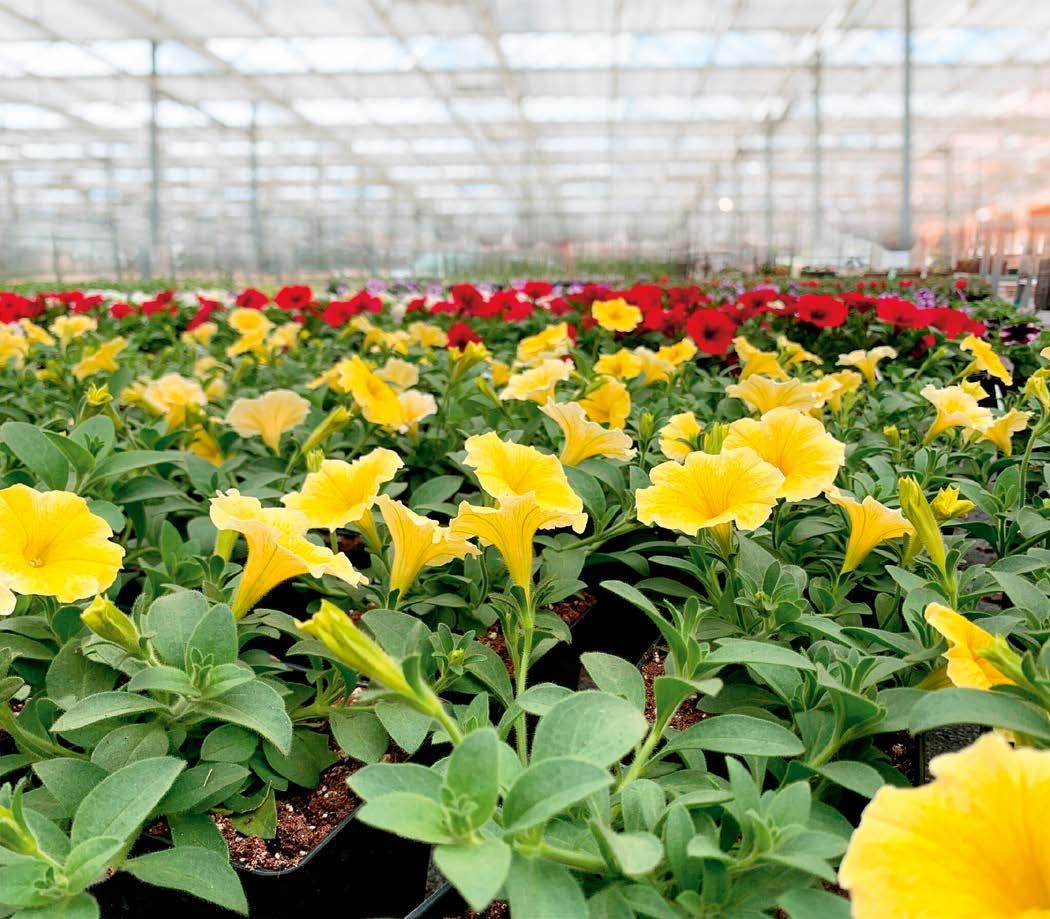
“A radio fades when I tap on the door. The door opens and stops at the chain. A woman asks me what I want, leaves and then I see a man’s face through the crack. I tell him somebody from the community worries about their baby. I ask the baby’s name and tell them my sister’s baby is Tina too. I don’t have a sister and I have no idea how I come up with the line, but it works. […] The chain rattles, the door opens and I walk in. The place is relatively clean. The usual small kitchenette, a living room and TV, hallway to one bedroom, bathroom off the side. I smell the cloying stink of steamed broccoli. There is a twelve-pack under the table and four are empty. It is just information and I compare that information with the fact that there is a twenty-four in the cupboard back at my apartment. They seem nice enough so we sit at the table and get to know one another.”

The same tenacious spirit which drove Carley’s initial self-education and pursuit of a career in social work – indeed, the same persistent passion which summons him from bed each morning – has served him well in the volatile world of writing and publishing. The writer speaks candidly about the challenges he has faced in bringing his work to audiences. In the days following the creation of apps, publishers’ and audiences’ attention can be difficult to capture.
Still, Carley remains undaunted. Just as he jokes self-effacingly about his humble adventures on the “high literary seas” and “Quixotean writer’s journey,” so too does he speak of future projects with undiluted creative vigour. As he professes his intention to keep writing, I am reminded of a quote from Don Quixote itself: “When life itself seems lunatic, who knows where madness lies? Perhaps to be too practical is madness. To surrender dreams – this may be madness.”
Our commitment is to provide an extraordinary real estate experience –while serving others in fulfilling their home ownership & investment dreams. We have the time, patience & expertise to understand our clients’ needs & enjoy helping them accomplish their goals.


 Artist Reed Cooper’s work was often inspired by the Mulmur landscape, as in “Hilltop View.”
Artist Reed Cooper’s work was often inspired by the Mulmur landscape, as in “Hilltop View.”
During his lifetime, artist Reed Cooper made an impressive contribution to the Headwaters arts scene. A founding member of Kame & Kettle Artists (kames and kettles are landforms left behind in these hills by receding glaciers), the artist showed his own accomplished works and those of other local artists at the Arielcroft Gallery in his Mulmur home. He taught printmaking; exhibited at the Museum of Dufferin and beyond, including the National Gallery; and he participated in studio tours, including the North of 89 Studio Tour held every fall.
And when Reed died in 2006 at the age of 75, he left a legacy that included not only an enduring body of work, but also a lasting gift of support for local artists, whom he befriended, taught, mentored, encouraged and advocated for.
Making art can be an unsettling and solitary pursuit, uncertain in appreciation, unrewarding financially and undermining of confidence.
Sometime a little means a lot. Reed was a quiet man. What he said mattered. Late in his life, he attended the opening of a solo show by an artist who was apprehensive about how her work would be received. Waiting until afterward, when the hubbub had died down, Reed quietly told her, “I like your work. You need to keep on doing what you’re doing.”
That artist was Christine Rogers. And in 2007, she became the first to receive a
$3,000 Reed T. Cooper Bursary in Visual Arts, which was instituted by Reed’s widow, Jane, under the auspices of the Dufferin Arts Council.
Bermuda-born and McMaster University-educated, the lifelong artist started as a weekend painter who was able to devote himself fully to painting, and later printmaking, only after retiring early from his position as an economist with the Ontario government.
In the 1990s, Reed and Jane moved permanently to Mulmur, where they had maintained a weekend home since 1970. There, the two established and operated the Arielcroft Gallery. Reed looked after the artistic side while Jane tended the business end of things.
Reed’s abiding love was landscapes, in oil and watercolour, and later, serigraphs, or screen prints. He drew inspiration from the Mulmur landscapes around him, as well as the rugged country farther north in the Killarney area and regular visits to England.
Even when his later work ventured into the abstract, “he always jumped off from landscapes, inspiring and uplifting” in which he felt “the hand of God,” says Jane. “The last 20 years of his life were probably the happiest. He was doing what he loved and those around him were doing the same thing. It was a wonderful community of artists and neighbours.”
For Jane, a highlight of the history of the bursary was the exhibition of a large body of work mounted at the Alton Mill Arts Centre by Linda Jenetti, the Coopers’ friend, near neighbour in Mulmur and 2012 bursary recipient. What Jane saw was a gratifying display of excellence – stunning oils portraying the landscape of Italy, where the bursary had helped send Linda to study, paint and grow.
Dufferin Arts Council now offers a Linda Jenetti Travel Award to honour Linda, who died in 2019.
A river meanders through Mulmur, pretty and slow. At a spot on its banks not far from the Cooper home, Reed painted one of his final watercolours, Pine River Winter, in the last year of his life.
“It is semi-abstract,” notes Jane, “but you could identify the spot.” The painting still hangs on her wall, along with others by her husband, and remains “something I could never part with.”
It is pleasing to think of the legacy of Reed Cooper – the artists and peers he befriended and inspired, and those he continues to encourage through the Reed T. Cooper Bursary – as a pebble in a secluded shallow of that same Pine River. A pebble that continues to send out ripples.
As an artist myself, I was grateful to receive a Reed T. Cooper Bursary in 2018. This meant that Darlene Hassall, the other 2018 recipient, and I sat on the 2019 judging panel, giving us a bird’s-eye view of the process.

The experience inspired me to check in with other bursary recipients, some of whom I had come to know, and ask them to comment on their own artistic journey and how the bursary influenced their work. Here’s some of what they had to say.


Ricky Schaede
Orangeville
Media: oil, acrylic, ink
I became an artist when I was living in a very small town – Alton. That might have affected the nature of my art. With nothing else to do, I dove into art. I’m glad I had that period. It made me appreciate the quiet of small-town life. In the city, I’d be socializing more, have to work more, have less time and mental space for art. Art is exploring the imagination. New things. New worlds.

Ann Randeraad
Amaranth
Media: clay
I knew Reed Cooper. He lived in a very quiet spot, making beautiful paintings. The beauty in the landscape and in the region is a fantastic inspiration for me and for many artists. The region is also very supportive of its artists, people drawn to the beauty of the area who also appreciate art. People looking for beauty in all areas of life.
2018
Anthony Jenkins


Mono (now Brockville)
Media: oil, acrylic, ink
The Reed Cooper Bursary pushed me to grow artistically. And when I participated on the panel awarding the bursary for the following year, I was able to tell Reed’s wife, Jane, and daughter, Sheila McCutcheon, that their family’s generous award had made another fundamental difference. I had come to know of Reed Cooper, to admire his work and spread word of it.
Harvey Kolodny, lithograph All MeDarlene
Shelburne




Media: oil, acrylic

Darlene died in 2022, but these words about her art appear on her website: I see things differently, that’s what I want to show. I want to cause the viewer to pause and reflect. To consider that there may be another way to look at something.




2017
Lucky for us being in this area. Even the Dufferin Arts Council lunches ... how moving and inspiring being with peers and people who are so interested, committed and supportive. The effort, the volunteerism, the sincere support of the arts and artists. It’s a gift! The bursary is an extension of that, the icing on the cake.

THE BURSARY IS AVAILABLE TO MIDcareer professional visual artists who live in Dufferin County and are members of the Dufferin Arts Council. Eligible media include painting, drawing, printmaking, sculpture, ceramics, fibre arts, glass, wood, photography and digital art.
“Mid-career” refers to artists who have been professionals for at least five years, excluding those at either end of an artistic career: novices, hobbyists and dabblers, and well-established artists.

Two bursaries can be awarded every year – or none, at the judges’ discretion. (No bursaries were awarded from 2020 to 2022,
either because there were no applicants or they didn’t meet requirements.)
Bursary application forms (four copies) require a detailed written proposal for a project that will advance the artist’s talent, work or career. The project may include study or travel, mounting a themed show or exploring new ideas, techniques or media. Terms such as advancement, development and artistic growth loom large in application guidelines.
The bursaries are not awarded lightly and a well-thought-out application that clearly sets out the project’s goals is crucial. The application must include a detailed outline
of projected expenses and revenues, as well as the artist’s resumé and photographs of current work.
Entries are judged on the basis of benefit to artistic growth, chances of success, measurable results and, importantly, benefit to others and to the community through an exhibition, publication, presentation, lecture or teaching of a course.
The judging panel looks for an artist who “displays unique talent and a potential for excellence.”
September 30 is the deadline for 2023 bursary applications.

To develop and move forward as an artist, you have to listen to yourself, to what you have inside you since that’s where the art should be coming from. You can get lots of reactions to your art, but those reactions shouldn’t really affect what you are doing. That’s how you get to the next stage on the journey, not just by listening to what other people are saying about it, but by listening to where the art is coming from. That’s how you’ll know where to go from there.
Debbie Ebanks
Schlums
Mulmur
Media: glass, installation art
The Reed Cooper Bursary allowed me to explore how glass could tell a story of migrations – my own migration and, in their own words and creative expression, the migration of the Syrian community that first landed in the area.


Artists are considered to be our social conscience. They can be spokespeople for greater causes, sometimes working in response to environmental, political or social issues. A community may not owe artists anything, but they are well equipped to help artists in mutually beneficial ways. The health of a community is reflected in the vibrancy of its arts.


Pat BurnsWendland
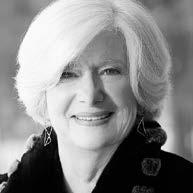


Mulmur
Media: textiles









The bursary gave me confidence in my work. It encouraged me to keep going, to push further with my work and to encourage other artists to do the same in their respective fields.
I’m not finished learning. I’m still taking courses in order to push the boundaries of my own work and to encourage the next generation to consider all that the arts have to offer.
Mulmur

(now Toronto)

Media: sculpture, metal

There can sometimes be a competitiveness among artists. Artists who are protective of their work, their clientele, their success. “Look at my success, but don’t muscle in on it!”
When I moved to Headwaters, I found it completely different – full of people who wanted to see the arts thrive. They wanted to work together and share to achieve that. It was a positive, collaborative community from the get-go.

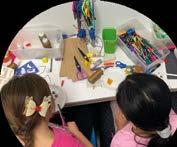




With all the uncertainty in the markets, it’s understandable to be concerned about your investments. We’re here to help. Our complimentary second opinion service is designed to help you gain greater peace of mind with clear, practical insights into how your current financial strategy aligns with your goals. We’ll objectively analyze your current plan and provide you with a detailed evaluation to help answer your most important questions – with no pressure.
Some of the areas we can advise on include:





• Investment management

• Tax minimization
• Funding a loved one’s education
• Protecting your family’s financial security
• Planning for retirement



• Charitable giving and legacy creation

If your current plan is properly structured, we will gladly tell you so. If we feel you could benefit from any changes, we will make specific recommendations. Most importantly, we’ll help you gain the confidence of knowing you’re on track to achieve your goals.
To schedule your complimentary, no-obligation review, please contact us at 519-941-4883 or steve.roud@rbc.com.

Linda Jenetti
Mulmur
Media: watercolour, oil
Linda died in 2019. Her words are drawn from her website: Cross-pollination also enlivens creativity, leading us to find meaning in other forms of art.

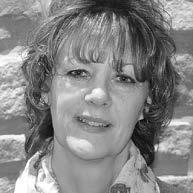
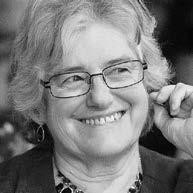
Roslyn Levin
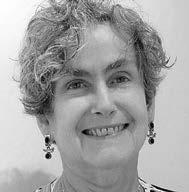
Shelburne

Media: sumi-e
I knew Reed and am both pleased and proud that his wife, Jane, has a few of my paintings in her collection alongside his work. Like Reed, I am both an artist and a teacher of art. He would be pleased that I won the bursary to write my book, The Brush Dances, and that I continue to share what I know, both personally and through my book, so that others can also follow an artistic path. Everyone is creative. Their creative paths will vary, but all have something unique to share.
The Linda Jenetti Travel Award is a one-time $5,000 prize available to a Headwaters artist and current member of the DAC.


Three $2,500 scholarships from the Anne Laurier Scholarship Fund are awarded annually to Dufferin County Grade 12 students who display “exceptional talent” in visual, literary or performing arts, and who are preparing to study the arts at an accredited university or community college.
DAC’s Community Grants program offers quarterly grants to a maximum of $500 to help artists or arts groups initiate activities that enhance the arts in Dufferin County.
For more information on Dufferin Arts Council awards and grants, explore “DAC programs” at www.dufferinarts.com.
Anthony Jenkins is a freelance writer and illustrator.

Bridget Wilson
Mono
Media: glass
As a three-dimensional glass artist practising in what is considered a dying art form, it is important to educate people on the materials and techniques required to create unique works of art. The bursary enabled me to learn and to share processes in local schools. So, with hands-on opportunities, students are able not only to be creative but also to learn the relevance of the science. There is art in science and science in art.
Peter Adams Mulmur (now Collingwood)
Media: oil
Artists reflecting on their surroundings, on their life, trying to figure out ways of expressing their thoughts, feelings and observations in an artistic way, is of great benefit to society.
Likewise, people seeing, reading, listening to, pondering and discussing those artistic acts is equally beneficial to society.
River Impressions








HOW LOCAL TEA LOVERS ARE GROWING AND REIMAGINING AN ANCIENT DRINK FOR MODERN TIMES
 BY JANICE QUIRT
• PHOTOGRAPHY BY ELAINE LI
BY JANICE QUIRT
• PHOTOGRAPHY BY ELAINE LI
There are no plowed fields, bank barns or other signs of traditional farming on Joey Lemieux’s Mono property, but like many of his neighbours, Joey has been planting, tending and harvesting crops for years. Instead of potatoes or soy, however, he grows and forages plants and fungi from his natural meadows and woods to make herbal teas.
Joey’s line of more than 50 teas includes ingredients such as the “healall plant” (Prunella vulgaris), wild bergamot and chaga mushrooms – all of which he dehydrates and tucks into unbleached wood pulp tea bags to sell under his Escarpment Gardens label at the Orangeville Farmers’ Market, online and in local shops. Joey’s teas meet the standards of the New Jerseybased Certified Naturally Grown group and he is working toward organic certification.
“This year we’re planting hundreds more birch trees, which chaga grows on, so that our chaga harvest can be even more sustainable in the future,” says Joey, who leaves about an inch of each mushroom behind on the tree to reproduce. The superfood, known for

its antioxidant properties, stars in his Chaga Chai. Other offerings include Cedar Pine and Lemon Pear, the latter mimicking a first bite into juicy fruit.




Joey has been producing herbal teas – or tisanes; some purists will say only black tea is tea, so tisane is the correct term – in Mono since 2015. He’s part of a small but dedicated industry of local growers and purveyors who have created enough herbal, black and other tea blends to keep us all brewing for years.
Fellow Mono tea lover and gardening expert, Julia Dimakos, captures the momentum in her recently released DIY guide called Tea Gardening for Beginners, with tips for planting, growing and drying tea ingredients.
For Joey growing, creating and drinking herbal tea go well beyond those acts themselves. “It can deepen our relationship with the natural world.” Indeed, whether you’re just reflecting on the landscape outside your window or getting your routine Earl Grey caffeine hit first thing in the morning, you’re tapping into a horticultural and cultural tradition
dating back thousands of years to China. Black, oolong, white and green tea all derive from the leaves or leaf buds of two varieties of the Camellia sinensis plant and are left to oxidize for different lengths of time. Black tea is left to oxidize the longest, resulting in a rich flavour and longer shelf life, says Maggie Morrison of Clearview Tea Co., which she founded in Creemore in 2012 with her mother, Rebecca Brown.

The tea plant isn’t hardy enough to grow in our Zone 5, so professional and amateur tea growers focus on a range of other plants. Those who create blends based on black and other teas derived from Camellia sinensis source those tea leaves from Canadian and international growers. While Julia Dimakos does shares tips for growing Camellia sinensis in her new book (her publisher is in California, where it is possible to grow it outside), local readers can turn to more than two dozen other plants anyone with a sunny plot or windowsill can propagate.
Lavender is one of those plants showing up in local teapots, thanks to
a mini-boom in lavender farms across Headwaters. At Stonewell Lavender


Farm outside Erin, Lee Anne Downey has been creating teas using English lavender (Lavandula angustifolia) buds harvested from her fields since 2019. After being hung to dry for two weeks, the buds are separated from the stem and are ready to add to her gingerpeach, hibiscus-rosehip, and Earl Grey recipes. (For anyone concerned the flavour may be too floral, Lee Anne recommends steeping for a short time to start.)
“In the summertime we recommend an iced tea version made by steeping, removing the herbs and pouring over ice cubes.” Lee Anne also suggests various add-ons, including sparkling water and fruit syrup – for mocktails or even cocktails.





For those inspired by Joey and Lee Anne to nurture their own teas from the ground up, Julia’s guide is divided into sections on leaves, flowers, fruits and seeds, and roots commonly uses as teas. For her, growing these ingredients for tea was the next logical step as she tended to her family’s 7,000-square-foot kitchen garden. “I thought if I can grow my own food, why not grow plants that can be used for tea?” she says. “I started with mint and chamomile, and then increased from there. I expand my tea garden each year, adding new ingredients.”

Julia starts annuals such as roselle (also known as hibiscus), lemongrass, lemon verbena, holy basil and chamomile from fresh seeds each year. Mint, lemon balm, red clover, anise hyssop, sweet violets and strawberries are perennials and have no trouble growing in our climate. Julia has an orange tree that she grows indoors all winter, and then moves outside for the summer. “With some creativity you can grow just about anything,”
If starting plants from seed, Julia recommends doing so indoors in January or February to give them a head start on spring, placing them under a grow light or in a sunny southwest-facing window. Starter plants can be purchased at a nursery too. Her one major caveat: “I recommend growing mint in a large pot or it will take over your garden.

“Ever since I started growing my own herbs, I discovered there is more than one way to brew tea,” writes Julia Dimakos in her book Tea Gardening for Beginners
Julia shares the following tips on black and herbal tea brewing. If you want to experiment with the slight temperature variations she suggests, consider using a standard or electric kettle with a built-in thermometer.
GREEN TEA
Green tea can taste bitter if you steep for too long in too-hot water. Steep for less than a minute at 80C to 85C.

WHITE TEA
Steeping at 80C to 85C will result in a floral and fruity flavour. At 90C to 95C you’ll notice a woodsier flavour. Steep for three to four minutes.
OOLONG TEA
You want to brew oolong at a higher temperature, just below the boiling point, at 90C to 97C. Brew for one or two minutes.
BLACK TEA
At lower temperatures, 80C to 85C, the tea will be fruitier and lighter. At 90C to 100C you’ll get a more woody, spicy drink.
HERBAL TEAS
Place denser dried plant material like roots in a saucepan and cover with water. Bring to a boil, then simmer for at least 20 minutes.
INFUSIONS
Pour boiled water between 95C and 100C over dried leaves, flowers or fruit
and steep for at least four or five minutes. Some plants contain tannins. Lowering the heat to between 90C and 94C, and steeping for five to 15 minutes, will prevent tannins from taking over.
COLD BREWING
Add two or three tablespoons of the tea blend to a large glass canning jar or pitcher. Fill to the top with water. Close the lid and place in the refrigerator. Leaves take at least eight hours, roots need 24 hours, and flowers, fruits and seeds fall somewhere in-between. This produces a sweet, gentle tea.
— ADAPTED FROM TEA GARDENING FOR BEGINNERS
may help safely lower blood pressure, and mullein leaf is recommended to alleviate upper respiratory congestion.
Or, if you have the space, designate a garden for it and let it run free.”
CONTINUED FROM PREVIOUS PAGE to get from the tea. If I’m looking for an energy boost, I like to create a tangy, lemony tea or a refreshing blend with mint. If I’m feeling under the weather, I choose more medicinal plants. I rarely drink a single herbal tea.”
Julia dries plant material for anywhere from 12 to 24 hours in a dehydrator, set at a low temperature for leaves or flowers, or higher for plants that contain a lot of moisture, like fruit and roots. Another option is to hang the leaves to dry or lay them out on drying racks. This method is not recommended for fruit as it may attract insects or start to mould.
After those steps, the tea is ready. So, what flavours does Julia reach for?
“I prefer to create tea blends on the go, based on my mood, or what I’m hoping
For some, like Joey, those medicinal properties are what drew them to tea production. Joey sees himself as part of an ancient and enduring practice. “Throughout history people have steeped plant material in hot water,” he says, “with a belief in its power to improve many physical and emotional issues without side effects.”
For instance, he says, ginger is known to ease stomach upset, hibiscus
Mikayla Stinson, who founded Kenneth Ave Co. in 2020, says the healing potential of tea inspired her foray into the business. “When I was growing up in Erin and dealing with stomach issues, my Oma used to always make me a cup of peppermint tea to soothe my stomach,” she says. “I hold those memories close to my heart.”
Mikayla named her company after the street in Erin where her grandparents lived. And that mint now appears in her Yoga tea, along with rosehip, calendula and osmanthus petals.
Naomi Higenbottam, of Bloom Naturally in Caledon, is on the same
wavelength. Her family’s British roots meant black tea was a household mainstay when Naomi was growing up. Now, as a lactation consultant, nurse and holistic nutritionist with an expertise in herbalism, she is a herbal tea booster.
Naomi developed her line in 2014 to support common conditions her clients faced such as gas, bloating, skin irritations and breast milk supply problems. Her most popular tea is the Relieve Digestive Tea, specially formulated to help soothe the stomach, reduce bloating and aid in digestion. A sip reveals strong notes of ginger and mint, with a hint of chamomile and fennel – the 100 per cent organic mix, sourced wholesale
from Toronto’s Honest Leaf – is also visually appealing, evoking a field of wildflowers dotted with chamomile heads.







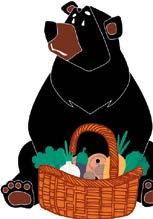

While all local tea makers offer herbal and soothing brews, many also dabble in playful culinary blends. Caledon’s Amanda Luthra crafts a range of savoury South Asian spice blends under her ChillyPaste brand (see page 84 for more) – and she’s given the same level of care to her masala chai blend, which builds on Assam black tea leaves with 12 aromatic spices.
At Kenneth Ave Co., now headquartered in Guelph, black tea is a base for fanciful dessert flavours. “Our brand is about unique and fun blends of tea,” Mikayla says. Imagine the taste of cookie dough, birthday cake or caramel folded into a tanninrich base tea. Custom and seasonal blends are also available – watch for one inspired by Cadbury Mini Eggs in spring. The company’s green tea lineup includes Mango Matcha and its rooibos, a reddish, smooth and naturally caffeine-free tea, is mixed with chocolate and caramel.
A similar penchant for alchemy is behind Maggie Morrison’s Clearview Tea Co. The company is best known for their Creemore Market Blend, a black tea with touches of vanilla and bergamot (the floral hit in Earl Grey) notes. Ivory Cable-Knit Sweater marries black tea with vanilla and pinky rose petals. Two years ago, they opened a tea and gift shop in Schomberg, complete with a blending room. Maggie and her husband, Ian Morrison, have largely taken over the business (after Rebecca decided to follow her passion and complete architecture school in Nova Scotia).
Like her fellow tea growers and blenders, Maggie can’t imagine a day without a steady supply of tea in near-infinite varieties. “Black tea is my favourite; I always start my day with it and switch to herbal teas or rooibos by the afternoon.
“Tea is so versatile, there is a tea for any mood.”
From pop-art macarons to meltin-your-mouth maamouls, these bites will sweeten your day.

Jamie Raffles started Jane and Joy Confections in Bolton during her maternity leave – realizing her childhood ambition of being a pastry chef in the process. To challenge herself, she started with oft-fiddly macarons in bright pinks, mint greens and purples. The Crayola colours were inspired by Jamie’s two daughters, whose middle names
make up the business moniker. Jamie also whips up madeleines, adorable minicakes (one decorated like a watermelon) and South American alfajores (soft shortbread cookies with a creamy dulce de leche filling). Perfect for spring entertaining.
April 22 marks Eid al-Fitr, (aka the Festival of Sweets). This threeday festival occurs at the end of Ramadan, a month of dawn-
to-sunset fasting for Muslims.
“Eid is a festival of charity and self-introspection,” says Shah Mubeen Irfani, on behalf of the Dufferin Muslim Centre in Shelburne. “Eid al-Fitr has a deep spiritual significance for all.”
Islam Salamah, who works with her family at Orangeville’s Rasmi’s Falafel food truck, often makes a date maamoul cookie for Eid, traditionally eaten in Syria and Lebanon. Other common dishes prepared across the world on Eid day include baklava, nougat, sheer khurma (a sweet vermicelli dessert) and kanafeh (phyllo dough with white shredded cheese).
Growing up in an Italian family, Amanda Gervasi is well versed in the importance of food and its power to bring people together. Now she and her husband, Mike Lalonde, are sharing this love of food via their Palgrave business, Amore Cheesecake Jars, which they started six months ago.
“We create exceptional cheesecakes made with simple, high-quality ingredients – no fillers,” says Amanda of the decadent single-serving jars.
Options range from chocolate bar blends to tart berry varieties – try a few with a mixed six pack. Dave’s Butcher Shop and Déjà vu Diner in Orangeville stock the sweet jars, or contact Amanda for local delivery and pickup.
A kaleidoscope of macarons by Jane and Joy Confections in Bolton.What is chef Denis Jaricot of The Vista Restaurant in Caledon’s Mount Alverno Resort dreaming of this season? Denis says with the negative effects of climate change, food price increases and supply chain woes, it is reassuring to live in Caledon where spring produce flourishes.





“We’re surrounded by farmers who care so much about food,” he says. “Owl Dream Farm [in Orangeville] supplies us weekly with microgreens that we use to enhance several dishes. I also love using local mushrooms wherever possible, including in French mushroom and onion soup, foraged mushroom ragoût vol-au-vent, mushroom and potato pie, mushroom pasta and our portabella mushroom ciabatta sandwich.”

Caledon’s Amanda Luthra grinds herbs and spices with a mortar and pestle while making her butter chicken paste, here used in a risotto. Near right, ChillyPaste products are available to purchase online.


Caledon’s Amanda Luthra knows the struggles of preparing tasty, healthy food while working full-time and raising children. Although in the past she, like so many of us, relied on takeout and store-bought sauces, that changed in 2019 when Amanda leaned into her family’s brain trust and developed easy-to-use kits which take the guesswork out of several South Asian dishes. She launched the ChillyPaste website in August 2022 to sell directly to customers.
Amanda’s two-step meal kits feature a base sauce, paste or marinade plus finishing spices. The tandoori marinade elevates any protein, finished with a tangy masala. Craving butter chicken? Makhan masala is your go-to. Bhuna masala features onions, ginger, garlic and tomatoes for a deep curry flavour. “I love building balanced savoury tastes in dishes,” Amanda says. She also offers vegan options. Pickup is available in Caledon.

Brothers Vincenzo and Antonio Molinaro opened the doors of their new Bolton spot, the Fratelli Molinaro Ristorante, in mid-September 2022. The drool-worthy menu ranges from authentic pasta and gnocchi to wood-burning oven pizzas with toppings galore. The fried calamari are tempting as an opener, but do save room for desserts such as pistachio cheesecake and tiramisu.
Shelburne’s D-licious Shawrama opened in midJanuary to the delight of local students and adults alike. The chicken shawarma is a favourite, and owner Chintankumar Rana recommends the house special shawarma platter for those who can’t decide. It features a variety of halal meats and sides. Students have made the $6.99 lunch deal, with meat, rice or fries, salad and a drink an early hit. Don’t miss their flaky classic baklava for dessert.






yThe Horning’s Mills Community Hall Easter Brunch on Sunday, April 9 is part of a slate of highly anticipated happenings at the muchloved, archetypal town hall and community hub. As one of the longestrunning events – this is its 27th annual – this Easter Brunch features pancakes, sausages and fruit, followed by an outdoor Easter egg hunt for your little bunnies.
The final two instalments of the 2023 Winter Harvest Dinner Series, organized by the nonprofit Headwaters Food and Farming Alliance, takes place in Mono: March 23 at Mono Cliffs Inn and April 21 at Adamo Estate Winery. Pull up a chair to support HFFA’s inspiring vision of a productive and sustainable local food system, and sup on courses prepped with locally sourced ingredients. At Mono Cliffs, the menu includes spanakopita and either brisket tacos or pork ragu. At Adamo, menu details are to come, but possible dishes include squash soup, stuffed chicken supreme and mascarpone potato mash. Vegan and vegetarian options are also available.





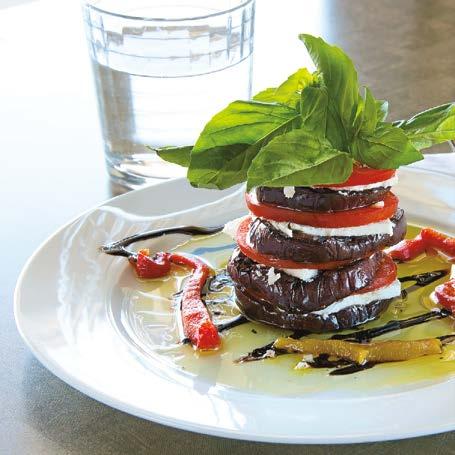





How professional welder Courtney Chard uses the tricks of her trade to craft intricate, often delicate sculptures.

 BY JANICE QUIRT
BY JANICE QUIRT
COURTNEY CHARD BENDS metals to her will – and to her creative vision. A pressure pipe welder by day and metal artist by night, Courtney relies on decades of experience in the trade to sculpt flora, fauna, magical beings like Lord of the Rings’ Gandalf the Wizard, and other, more sentimental items.
“I enjoy making memorial pieces because they can be a part of the healing process,” Courtney says. Common themes are birds, butterflies and dragonflies.
Courtney received extensive formal training via Mohawk College and an apprenticeship at UA Local 46 in
Toronto, and taught herself metal art. She’s doubled down on this creative outlet over the past three years. “Before that, I would make sculptures and leave them on my mom’s porch. Her hairdressing clients loved buying them.”
Along the way, Courtney has tapped into a collaborative group of metal artists on Instagram and YouTube.
“When I was working on a turtle, a fellow artist in Texas, who created a lot of sea life, advised me to start with the shell to get the proportions correct. I did that and it turned out wonderfully.”
Locally, Courtney got the word out at country fall fair competitions.
“I love that at the Erin Fall Fair we
represent three generations of skills –my mom for her baking, me for metal art, and my 10-year-old daughter in the kids’ competitions.” Courtney, who lives on the border of Erin and Halton Hills, is part of a supportive artistic community in Erin and nearby surroundings, and mentions Stonewell Lavender Farm and the Alton Mill Arts Centre as two key connections.
When it is time to create, Courtney heads to the barn-like shop on her country property, complete with her tools, workspace and a loft above.
Courtney outfits herself in protective gear; her helmet is called a sugar scoop, used by pipe welders. It’s emblazoned
CONTINUED FROM PREVIOUS PAGE
with stickers related to her local union and trade, revealing Courtney’s pride in being a skilled trades worker.
Courtney mostly works with carbon steel, stainless steel and occasionally copper – and a wide array of tools. First, she cuts the metal, often into intricate shapes, using a plasma cutter.
To heat or bend thin metal, she grabs her oxygen acetylene torch. To bend thicker round or square stock metal,



such as railway spikes, she heats them in her small forge and hammers it out when red-hot. To fuse two pieces of metal together, she reaches for one of three types of specialty welding machines. After she has layered and welded metal pieces to meet her overall vision, she wields an angle grinder to cut, sand down or grind off excess metal, as well as to polish.
Courtney’s process differs depending on the piece. Today she’s building a swaying tree, a commissioned work, using epoxy to mount its round-
For her koi fish sculpture, Courtney used carbon steel for one fish and stainless steel for the other. A recently completed piece (below) depicts a windswept tree.


bar tree trunk to a rock base. (The bars she uses for the piece comes in different diameters – ½ inch, ¾ inch, 5⁄8 inch and so on.) As Courtney gets close to her vision for the trunk and branches, she adjusts by grinding, bending and shaping the material. To achieve the look of bark, she layers weld metal onto the trunk. Rope-like wire sling left over from construction rigging serves as the pine needles. Some projects, like a recent koi fish carbon- and stainless-steel sculpture, require a 3D wire frame outline onto which the various metal pieces are placed, held together by welds.
Now it’s time for the finishes. Courtney eschews paint in favour of more natural patinas and oils. For the pair of koi fish, motor oil helped achieve a darker colour on the carbon steel of one fish in contrast to the lighter stainless steel of the second; the sculpture represents yin and yang, she says. Vinegar, salt and hydrogen peroxide help rust metal and a blowtorch creates spectacular blue and purple effects on stainless steel.
The final step is oil or a clear coat to preserve the finish. Courtney can complete a small piece in a weekend. Larger, more intricate sculptures take weeks or months.
When asked to describe her personal style, Courtney lets out a warm laugh and admits she doesn’t know. “I’m a chameleon. I don’t have any one particular style. When I work on a client’s piece, I’m a conduit for their visions.”
She may not hew to a particular look, but she has honed a singular philosophy around making art.


“Try to listen to your inner voice – it’s not easy, because the world is flashy and loud, and often values convenience over creativity,” she says. “Be quiet and still, and you may learn the path for you.”
Find Courtney on Instagram at Courtney Chard Cre8tive Welding
“Repurposing salvaged wood into decorative or functional bowls is my way of extending the life and personality of the trees,” says Caledon’s Sam Meandro. Beyond that, Sam decides whether to leave the bark on or not, whether to keep the bowl’s edge naturally ragged or to smooth it — and how to otherwise incorporate imperfections. “I usually have an idea in mind when I begin a bowl, but I always let the wood speak to me.” (Bowl prices vary, approximately $10 to $15 per inch in diameter, Woodturning by Sam Meandro, Design By Nature)

It’s spring and the mushrooms are calling, at least to outdoorsy Glen Huron illustrator Fisher Monahan. He likes fungi so much, he sketched several varieties as wearable art on T-shirts and sweatshirts, available at Creemore’s new Tierra Hermosa Local Market (tees only on Fisher’s website). He says he decided to make the tops due to the popularity of his mushroom graphic on his social media channels, but also because the earthy feel of the illustrations “captures my ethos.”

(Sweatshirt, $80, Tierra Hermosa Market)
Wood Turning by Sam Meandro, Caledon.

FB WoodturningbySam
Fisher Monahan, Glen Huron. www.fishermonahan.com
Tierra Hermosa Local Market, 2 Francis St. E., Creemore. 416-819-9375. www.tierra-hermosa.ca
Emily Taylor Illustration, Toronto. www.cabinjournal.ca


Emily Taylor finds much inspiration in the spectacular purple hills of Mulmur where she grew up and is looking for a home. Emily, a surface pattern designer, channels several countrified motifs, including vintage-looking maple sugar tins, cozy cabins and local flora and fauna into the art prints and cards she sells from her small stationery and printgoods company, Cabin Journal. The tea towels pictured here feature blue and white milk glass kitchenware pieces and pink retro barware. Rendered in bright, yet soft hues, they’ll definitely add spring cheer to your towel rack. (Tea towels, $20, Cabin Journal)










No matter what your goal – adding shade and beauty to your property, attracting wildlife or fighting climate change – planting trees is a good idea.
BY EMILY DICKSON • ILLUSTRATED BY RUTH ANN PEARCEOF ALL THE PLEASURES OF SPRING, SPOTting a tree’s emerging leaf buds is among the best. Those first tiny hints of colour prove that winter is indeed in the rearview mirror and that a canopy of leaves will grace the landscape once again. And if you’re wishing for more of this wonder and promise on your property, put tree planting on your agenda.
Whether you’ve got acres of land or a small urban yard, planting trees comes with a long list of potential benefits. Trees can add beauty and shade to a garden, support biodiversity, attract wildlife, prevent soil erosion, protect rivers, provide barriers against blowing snow and, ultimately, help offset climate change by sequestering carbon.
Here’s a quick guide to the species to look for and incentive programs that encourage us to get planting.
Planting a tree is a long-term investment, so it’s important to choose one that will thrive in your local soil conditions, one reason experts recommend native species. Though nurseries are a great resource, consider contacting your local municipal office or conservation authority for advice. Many offer tried-and-true varieties of seedlings and saplings at a discount.
Mike Dunmore runs the town of Mono’s heritage tree and seedling program, which has been selling native species, including maple, birch, oak and pine to Mono residents at affordable prices for more than 20 years. “We sell 18 native species that grow naturally in Mono,” Dunmore says, adding that these species can handle severe weather and have evolved with the local ecosystem, making them resistant to pests.
The Maple Leaves Forever Foundation, by comparison, focuses exclusively on native Canadian maples. It was founded in 1997 by Mulmur resident Ken Jewett, who recently won a Forests Ontario award for supporting the planting of more than 130,000 maples. “Not only do maples grow well in the area,” says MLF’s executive director Deb Pella Keen, “but maple trees are a symbol of national pride and identity, and an icon of southern Ontario.”

Many incentive programs help landowners pay for and plant trees, especially on rural properties. Like the Mono program, the Town of Caledon’s tree seedling program is very wallet friendly: a bundle of 10 white pine seedlings, for example, is just $8.50, and a larger potted tree, such as a silver maple, is $12.20. Wellington County’s Green Legacy Program distributes free seedlings to residents and may provide volunteers to help plant larger orders of 500 seedlings or more. Check with your municipality about ordering deadlines.
If you’re fond of maples, Maple Leaves Forever partners with nurseries, including Triple J Tree Farm in Creemore and Not So Hollow Farm in Mulmur, and offers a 25 per cent rebate to landowners for planting along rural roadsides, hedgerows, property boundaries and laneways.
Conservation authorities such as Credit Valley Conservation offer subsidies that cover up to 100 per cent of the costs and will also help plant seedlings and potted stock. “Now is a great time to plant because there are a lot of resources out there. And we want
to help you get that funding,” explains Lisa Brusse, manager of landowner engagement and stewardship at CVC, which also offers alternative programs for promoting biodiversity on rural properties. “Planting trees is one of the best things people can do for the environment. But sometimes there are barriers –financial or knowledge barriers,” says Brusse. “We want to help people so they can manage their property in a way that contributes to environmental health.”
Reforestation on a large scale has financial benefits too. If your plans qualify for Ontario’s Managed Forest Tax Incentive Program, you’ll enjoy a property tax credit. If you have at least half an acre of open land and plan to plant at least 500 seedlings, you may qualify for Forests Ontario’s 50 Million Tree Program, which can cover up to 90 per cent of your costs and assist with planting.
Proper planting begins with proper planning, says James Godbold, owner of Mulmur’s Hill’N Dale Landscaping. “It’s beneficial to have a plan that will help you achieve your long-term vision for your landscape.” This includes knowing your planting zone, and the size and canopy of your chosen trees at full maturity. Are they, for example, for a windbreak or focal point? Do you want to attract birds or create great fall colours?
Spring and fall are the best seasons to start digging. Followup care and maintenance are crucial, adds Godbold. He recommends websites such as Landscape Ontario for planting and aftercare instructions to give your new trees the best chance of reaching maturity.



As the earth begins to thaw, the vegetable patch beckons. For inspiration before you dig, meet a few remarkable local gardeners reaping what they sow.
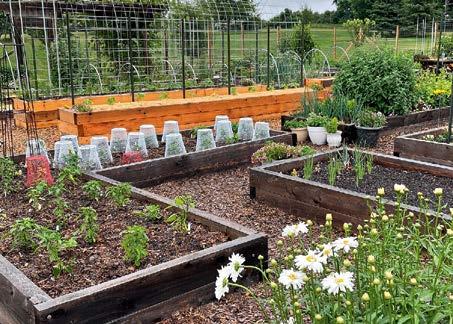
After a long winter, there’s nothing like getting outside and breathing deeply. This is the year to try trail running, forest bathing and paddling – visit inthehills.ca to learn more.
Spring robins. Magical merlins. And, if you’re lucky, a spotted salamander. The creatures of spring are back, and naturalist Don Scallen shares where to find them.
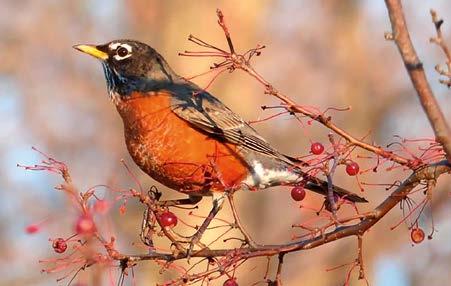
This loop follows a sandy path through lovely woods, ponds and wetlands in Albion Hills Conservation Park. The farther you go, the more deeply you travel into nature, solitude and peace. Look for ephemeral flowers in April, May and June, when they like to show off. Watch for cyclists also using the park’s trails.

YELLOW LADY’S SLIPPER (Cypripedium parviflorum)

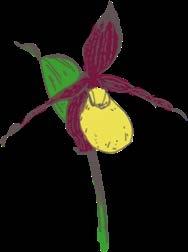
Park entrance 16500 Regional Road 50 Park fees in effect
Park in Grove 1 parking area near trailhead map. Walk toward Grove 2 parking area and look for red arrow and cross bridge.
DUTCHMAN’S BREECHES (Dicentra cucullaria)


SQUIRREL CORN (Dicentra canadensis)
HIKING ETIQUETTE Hike only on marked trails. Obey all signs. Carry out all litter, including dog poo. Keep dogs leashed. Don’t disturb people, animals, plants or trees.
americanum)
WHITE TRILLIUM (Trillium grandiflorum)

BLOODROOT (Sanguinaria canadensis)


A long but easy 9km, 3 hour hike
Numbered post marker


Albion Hills Loop
Caledon Trailway
Albion Hills Conservation Park
NICOLA ROSS IS THE AUTHOR OF THE BESTSELLING LOOPS & LATTES HIKING GUIDE SERIES
Julie Broadbent spends her days tending to her herd of 10 fuzzy, rambunctious characters.
BY JANICE QUIRTOWNING A SMALL HERD OF alpacas was part of Julie Broadbent’s life plan. But the 10 wide-eyed female alpacas, currently taking turns loping over to monitor our chat, showed up in her life a little earlier than she’d envisioned.
Growing up in Toronto and Mississauga, Julie always hoped to live on a farm surrounded by animals –especially alpacas – but filed the notion away under “retirement plans,” as she pursued a career as a commercial and wedding photographer. Then Covid
brought weddings to a screeching halt in 2020.
After much research and volunteering with alpacas, Julie was given two – friendly reddish Ginger and stately white Serena – by an alpaca outfit she worked with. She promptly started her business, Jolly Zee Alpacas, in 2021 on a property in Caledon, offering experiential tours, walks, picnics and other pandemicfriendly activities. In 2022 she moved her herd to merge with another herd of more than 100 at the 40-acre
Mimosa Springs Alpacas farm in Hillsburgh. The farm is run by Julie’s “barn family,” Anna and Michael Dehn (Michael also happens to be the mayor of Erin), and the trio shares the work, taking shifts with the animals. Julie lives in south Acton, a quick 20-minute commute.

And now that weddings are back in full force? Julie says shovelling manure and helping with shearing now take priority, but she still accepts some wedding and portrait clients – especially those looking for
rustic settings that come with a few unconventional, yet darling co-stars.
9 A.M. Julie is out the door and on the road to Hillsburgh before the alpacas expect breakfast.
It’s wakeup time for the alpacas –well, some of them. Alpacas, who live outdoors, don’t all sleep at the same time. As herd animals, some are always awake, instinctively taking turns keeping watch. “They say you should always have at least three alpacas,” Julie says with a laugh. “One to look
ROSEMARY HASNERleft, one to look right and one to sleep.”

Though alpacas – members of the camelid family that originated in the Andes – have only been in North America for less than 40 years, she says, they’ve made their mark. “People are really taken with them,” says Julie. “Like dogs, alpacas show empathy and are often friendly.” As if on cue, the brown, buck-toothed Lily, her youngest and most affectionate, comes over for a quick hello.
The alpacas, naturally vegan, are excited for their breakfast of feed pellets, hay and, as a special treat, alfalfa. Heads down and fluffy alpaca rumps in the air, they home in on their individual feed buckets.
10 A.M. It’s free time – for the alpacas. At Mimosa Springs, there are separate fenced-off areas for babies (called crias) and nursing moms, young males, older males, females and rescue animals; the farm takes in about one every month, usually because an owner can’t take care of it.
“You really need to do your research before getting an alpaca. They’re herd animals, so they’ll be lonely on their own. Unless you are set up to breed, getting just a male and a female is not a great idea,” says Julie, because you’d have to separate them. And they need pasture. “An alpaca’s favourite thing to do is graze.” Six alpacas typically require a half to full acre.
While the alpacas graze, Julie is on poop patrol. “Alpacas each poop four pounds a day. When the manure isn’t frozen over the winter, I’m shovelling for three to four hours a day from the communal dung piles.” (Thankfully, the manure makes a rich compost for gardening.)
1 P.M. It’s time for a welcome break. Come summer there will be no such luxury because the farm is likely to be hosting one of multiple daily tours. These are Julie’s domain while Anna is the specialist in alpaca care and fibre. Plans are underway to build a fibre mill on site. Not only is alpaca fibre incredibly warm, but it is also hypoallergenic and antimicrobial, she says.
Watching the alpacas run and play provides high entertainment. The term “pronking” describes the playful, bouncing run that provokes giggles from visitors. Even better is the soft, whiskery nuzzle of an alpaca nibbling pellets from an outstretched hand.
The hour-long tour includes cuddly bunnies, leaping goats and other farm mates.


3 P.M. It’s time to clean the feed pans and water troughs. On summer Saturdays Julie is booked for wedding photography and her mother, Linda, takes over the tours. “She’s been so much help,” Julie says. “She also assists when all hands on deck are required, like for shearing, vet visits, vaccinations, nail clipping or teeth filing.”
What was that, ask the alpacas? Yes, teeth filing. (Teeth filing is necessary because alpacas’ only teeth, bottom teeth, continue to grow in adulthood.) None of these activities are fun, so the alpaca farmers try to bundle the tasks. It’s a four-day event at the end of May or early June. An experienced shearer visits the farm. Julie and the Dehns perform the vaccinations at the same time. They were trained by their largeanimal vet. “It’s a bit stressful. We don’t look forward to this time of year, but it’s a necessary evil for the animals’ health and wellness.”
4 P.M. Julie works with her two original alpacas, Ginger and Serena, walking them with a harness and lead. These two came to Julie as therapy animals and walk on the lead for visits to hospitals or seniors’ centres. “Serena has been in elevators and cars, travelling to various locations,” she says. “Alpacas have an incredible ability to calm people and bring them happiness.”
Julie plans to expand her mental health-related services this year. She speaks from personal experience. Six-and-a-half years ago her infant daughter died, and Julie found herself struggling. “I wanted to learn everything I could about alpacas. I knew they would help me.”
6 P.M. It’s dinner, which means more fresh water, pellets and lots of highquality hay to last all night long. The nights are still cold, so Julie may put horse blankets on the alpacas that are very young or old, or those with thinner coats.


7 P.M. After saying goodnight to all the animals, Julie heads home, where she often enjoys a quiet evening in. She is finally where she always hoped she would be – in the country, surrounded and fulfilled by her animals and a new farm family.

 BY BETHANY LEE • ILLUSTRATION BY SHELAGH ARMSTRONG
BY BETHANY LEE • ILLUSTRATION BY SHELAGH ARMSTRONG
AS THE WILD WINTER STORMS WIND DOWN and slushy piles gather on our driveways, kids shake off the blahs and get springy in their steps. They become puddle jumpers on their way home from school – it can’t be avoided, so we encourage them, and maybe take a little leap of our own.
Some of my favourite photos from my son Adrian’s childhood are of him on the go, running and jumping over and into puddles. I captured him mid-splash on several occasions. Something about the warmer temperatures makes you feel like rushing forward into new adventures. As Adrian grew, his adventures became more about after-school bike rides, or lingering in the schoolyard to throw some hoops, or practising rail slides in the scooter park. And now, with a
It’s never too early
New to parenting or caregiving a young child? It might be time to seek out your local EarlyON Child and Family Centre. EarlyON centres offer free programs for your child, newborn to age 6, including storytimes, singalongs, games – and support for you as a caregiver from caring professionals who can provide guidance and advice, and connect you to important
driver’s licence, he’s heard the call of the open road. I also loved the open road at his age, ready to take on new adventures, towns and cities. You start to compile a mental road map – first of local destinations, the wicked winding of the Forks of the Credit and Hockley roads, sneaky corners and dead ends for getting up to who knows what. Then bigger, faster roads – other towns burgeoning into cities, trips to Toronto, so different from where you grew up and so much more exotic.
The mental maps crystalize, and eventually you can make the Highway 10 route south, to 410, to 401, to 427, to the Gardiner Expressway – smoothly and at cruising speed. The CN Tower rises into full glorious view and for the small-town kid in us, the sexy,
programs. You will also meet likeminded parents and caregivers, and bond with others if that’s something you’re looking for. Use the interactive map to find the EarlyON centre near you. www.ontario.ca/page/findearlyon-child-and-family-centre
The Orangeville Community Band’s mantra is simple: Encouraging Musical Enjoyment.
People new to musical instruments (age 9 to 99) can join OCB’s Beginning Band, with a new session coming together in September. The Beginner Band spends time growing their playing and music theory skills in a friendly environment, and participates in two performances with the main band. For over 15 years, OCB has been growing musicians here in the hills, at reasonable
electric skyline can feel scary and alluring all at once. And after that? The extended road trip.
Some of my first road trips were with friends and my now-husband, Derrick. With friends, crossborder shopping in the ’90s was the best. We bought Chuck Taylors at sports stores for a fraction of the price, saw Niagara Falls from the U.S. side, and drove with the music blaring.
I drove with Derrick to Virginia to discover the history of the area. We drove back via Washington to visit The Capitol, see the White House and Arlington Cemetery, where Jacqueline Kennedy Onassis had just been laid to rest alongside former President Kennedy. We watched the tiny eternal flame flicker and the flags flap above us in the quiet calm. What
rates ($75 to join; bring your own or rent an instrument).
Whether you or your young one are new to playing a musical instrument, this could be the opportunity to learn more.
www.orangevillecommunityband. ca/beginning-band
Cue the teenage drama …in the best way! Theatre Orangeville’s Drama Young Company is prepping now for
auditions for their summer program for youth in Grades 7 to 12. Working toward a full-scale production, this is an immersive opportunity for up-and-coming actors in a safe, respectful environment. Successful candidates will spend four weeks, Monday to Friday, practising their craft and learning from the best. The Theatre Orangeville rehearsal hall is located just west of Orangeville.
we didn’t know that day, when we made the decision to drive home straight through, was that in the hours ahead we would meet a wild storm on the hilly roads of Pennsylvania.


The rain started lashing as the sun went down. The Pennsylvania hills loomed to the left and right of us, and the highway was narrowed by pylons where construction crews had cut away the shoulders. The rain pounded down harder. We couldn’t drown out the sounds of the deluge as we anxiously shifted side to side in the rivers of water. Transport trucks in front, behind, and to the side of us met with more than a few unlucky animals trying to escape the hills as the mud, rocks and debris poured down. With shallow breath, I gripped the handle above my head in the passenger seat. We were stuck – no exits, nowhere to pull over, and no slowing down as transports ten times our size bore down. A shift too far to the left and we would drop into construction pits. With my fightor-flight response at peak level, I screamed that we needed to stop; we were going to be killed! My husband lashed out. He yelled at me to “Be quiet! Be quiet! Be quiet!” so he could concentrate. I started to cry in earnest.
Needless to say, the romance of our road trip had evaporated. I buried my head and cried it out for an hour until the storm finally began to let up and the sun peeked over the horizon. We crossed the border in silence. We took the highway home in silence. We said one word to each other, “Goodbye,” and stayed in silence for days.
Over the years, the adventure has become part of our shared history, and in hindsight we’re still glad we made the trip. I took other road trips with my friend Ingrid down to the southern states and we had fun times together. There were no storms to battle, and we shared the long hours of driving, making the best of Interstate rest stops and our meagre budget until we hit the ocean.
This past winter, having had the luck to do some driving around California, Adrian declared he wanted to take a road trip on his own, with some buddies, to drive right across the U.S. It’s far – over 4,000 kilometres from here to southern California. When the day comes, I know I’ll be scared as he heads out the door, but I also know the call of the road and the thrill he’ll feel as he expands his own mental maps and memories.
Bethany Lee is a freelance writer who lives in Mono. www.theatreorangeville. ca/academy-programs/ drama-young-company
On our minds


Our mental health and that of our kids has never been more at the forefront of our minds. For help in building the knowledge toolkit to support one another, check out the UNICEF campaign, #OnMyMind: Better mental health for every child. It seeks to
empower and educate families and youth on mental well-being.


The startling fact, according to UNICEF, is that half of all mental health conditions start by age 14, but most conditions go undetected and untreated.
Use the online materials to start conversations, create safe and secure environments, and bring the mental health conversation into the open.
www.unicef.org/on-my-mind
LET’S TALK ABOUT TECHNOLOGY. ARE WE seniors comfortable with the ways communicating has transformed since we were kids? Have we been able to stay in sync with our circle of friends and family while sorting through new and ever-evolving devices and the unique language of technology? Or have we been hopelessly left behind?
A friend recently emailed invitations to a luncheon she was planning. Time went by and only one person had responded. Come on … we’re retired, and not that busy. It eventually occurred to her that only a few of her invitees use email. Of those few, one had a new email address and had dropped her old account, and one is a technophobe who never uses email, preferring to communicate via her ancient landline. The others rely primarily on texts.
It was so simple at one time. You picked up the phone, which was anchored by a cord and therefore always in the same place, dialled the number and waited for an answer. When someone picked up, the conversation was two-way – just you and the person you called. Not anymore. In my experience, phone calls have become public events. Most people carry their mobile phones in a pocket or purse, and as often as not, they talk on speaker.
This means that, in addition to the person called, others in on the conversation often include their
spouse, kids and pets – or the rest of their bridge club or golf foursome on the third green, as well as strangers sitting in a doctor’s waiting room or passing on the street. Plus, along with the iffy reception of a cell phone (“I’m losing you … you’re breaking up!”), there’s the dexterity problem of trying to hit the correct buttons on the minuscule on-screen keyboard. The tiniest tremor causes a miss-hit. Delete, retype, oops, retype again.
On the other hand, driving into the city would be much more complicated without my cell’s map app, providing me with easy verbal door-to-door directions.
Yes, evolution teaches us that adapting is the key to survival and that flux is the nature of life, but does the plugged-in world enhance our lives as seniors?

For a while now I’ve been dithering over whether to buy a smart speaker. Would having one make my day brighter, or at least easier? Yes, I’d be able to ask Alexa about the weather even before my feet hit the floor in the morning. I would no longer need to search for both my glasses and my phone to make a call (“Alexa, call the drugstore”). And with a mere voice command, “she” could instantly handle lowering the music volume when the doorbell rings. That all sounds good.
But one of the things holding me back has been whether I’d be able to figure out how to set it up. Perhaps this is when I’d seek help from a 10-year-old.
In the meantime, I was recently asked to install a messaging app before leaving on a group trip. I had always sidestepped the messaging world, but suddenly tackling it became unavoidable. The app is called Telegram (550 million users monthly, compared to Facebook Messenger at 1.38 billion, WhatsApp, which is also owned by Meta, Facebook’s parent company, at 2.24 billion and iMessage at an estimated 1.3 billion).
The tour operators chose Telegram primarily because it has a reputation for being a relatively secure

FOR CAROL
was once a “sidebar activity” in a jam-packed life dedicated to raising a family, running her own business – and volunteering.
The 66-year-old, who grew up in Don Mills, attributes her propensity for volunteering to being “voluntold” by her mother at an early age. She recalls joining her family to help at Toronto Boxing Day dinners for people who were homeless, and she was a Brownie and a Girl Guide. She also spent Saturday mornings dressed in the “dorky blue-and-white-striped outfit” of a “volunteen” at North York General Hospital. Here in Headwaters and beyond, Carol has served on many boards and committees, including Caledon’s Environmental Advisory Committee and the Mississauga Humane Society. She remains on the board of Albion Hills Community Farm and is past president of the board of the Gestalt Institute of Toronto. And during her many years with the Bolton and
District Horticultural Society, her Caledon property hosted the society’s annual plant sale. Carol and her husband, Doug Prince, took up residence in the property’s distinctive octagonal heritage home nearly 30 years ago.
As a young woman, after earning a BSc in chemistry at Queen’s University, followed by an MBA at York University, she launched her professional career. But when her two sons, James and William, were youngsters, she earned certification as a professional facilitator and started her own consulting firm, specializing in corporate team building and strategic plan development. The Art
Former corporate consultant Carol Good turned to writing poetry later in life. See her poem “Five Ways of Looking at Birds” on page 41. PETE PATERSONIt can be a struggle to make friends with new technology.
app (messages can be programmed to self-destruct!), and because at the end of the trip it could be deleted completely, leaving no residual trail. No harm, no foul.

The app lets you message other Telegram users, create group conversations, call contacts, make video calls and send files and stickers. (What the heck is a “sticker”?) We were also told that, unlike Facebook, Google, Amazon, etc., Telegram protects our data from being tracked by third parties (i.e., marketers and advertisers). Well, okay, if I must!
It took less than two minutes to download the app and answer a few questions. And voila! I had a messenger app ready for my trip. Far from home and immersed in a different culture, Telegram’s friendly ping was useful when plans changed or a new bistro was discovered, and for the comforting knowledge that my group was close by. But now that I’m home, it’s just another app, and I’m already dealing with too many of those.
I admit I’m often frustrated with rapidly changing technology, and dealing with it can definitely poke a hole in my good humour. Even so, although I’m far from the front of the pack, my success with the new app helped me feel as if I’m still in the race – at least until the next upgrade.
Gail Grant is a happily retired senior who lives in Palgrave.
Gallery of Ontario and Caledon Community Services were among her clients.



Operating the business “made it easier for me to determine my own hours and allowed me to help out more at the boys’ schools,” she says.
Her career also led her to writing, though mostly of the technical sort – reports, proposals and the like. Then, in the 1990s, she joined a writing group and began writing poetry, crediting the precision and pithiness required by technical writing with inspiring the spare, direct style of her poems. She went on to work with the Massachusettsbased Amherst Writers & Artists, and during the pandemic, facilitated online workshops for writers.
Carol recently published a book of her own poetry, Alive & 65: A Celebration, and is now focused on growing as a creative writer.
Of her journey so far, she says, “I don’t know where life is taking me, but I try to take advantage of interesting opportunities as they emerge.”
WITH ITS STEEPLY GABLED cedar-shake roof, stone and barnboard façade, and striking timber-framed front porch, Ann and Jim Magee’s Caledon home could be a sketch for a tale by the Brothers Grimm. Indeed, after the home cast its spell on the couple, who moved here in 2018, they came to learn that the neighbours had dubbed it the Fairy Tale house.
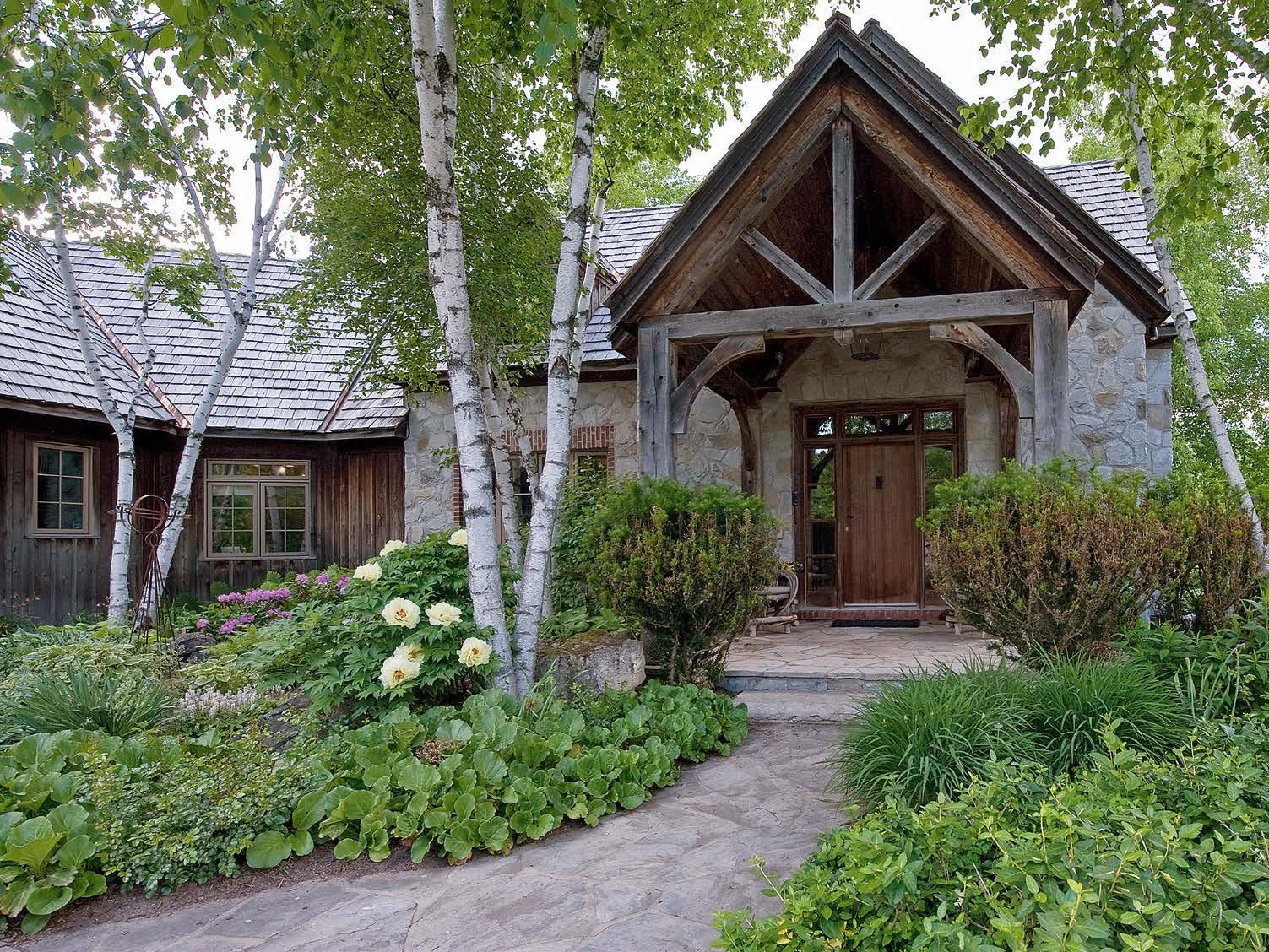
Constructed in the 1990s, the home’s original owner was an interior designer
who lingered on every detail. The construction included wood she had salvaged from the farm she grew up on, including the barn beams used in the kitchen, and the original wood floors from the piggery now in the kitchen, living room and master bedroom. She designed the home with oversized windows that allow natural light to flood in, and she favoured open spaces, soaring timber ceilings, fresco walls and fireplaces – four of them. But then
sudden illness forced the owner to sell the property, complete with all its furnishings and antiques. This is where the Magees enter the narrative, happy to honour the former owner’s vision.
At the time, Ann, a retired interior designer herself, and Jim, a retired American lawyer, were splitting their time between Toronto, Muskoka and Florida. Ann has three adult kids, two of whom live in Toronto, one in British Columbia, and five grandchildren. The
Caledon Ski Club became a spot where the Toronto-based families could congregate every weekend.
“One night when I was in Florida, I Googled homes in the area and found this incredible property for sale nearby which I fell in love with,” Ann says. “I flew in on a Sunday, went straight to the ski hill where I met with the realtor at 4 p.m. to see the house. The moment I walked in, I knew I was going to buy it. I came back the following day and
When Ann and Jim Magee happened on a hidden gem in Caledon, they snapped it up and created an idyllic year-round country retreat for their sprawling family.
put in an offer, then called Jim and said, ‘We bought a house!’”
But Ann and Jim are no strangers to spontaneity. From the moment the couple first met 17 years ago, change has been a constant and exciting variable in their life. A mutual love for new horizons drew them together while Ann was living in Toronto and Jim was living in California. Jim was looking for sailing companions and Ann answered the call to join him
on a nautical journey that started in Panama. This sailing trip would be the start of a life of adventure for the peripatetic pair, who married in 2008.
In Caledon the duo immerses themselves in country life. “The area is so peaceful. There’s no traffic, and endless roads. We love to just go out and get lost,” says Jim. “Every time we walk through the door, the first feeling is a big exhale. This is a place that just hugs you and everyone
feels this when they come in.”
According to Jim the driveway is a “special something that truly sets the mood.” To reach the house, visitors traverse a winding kilometre that twists through forested areas, over a small bridge and running stream, and by breezy fields and hiking trails.
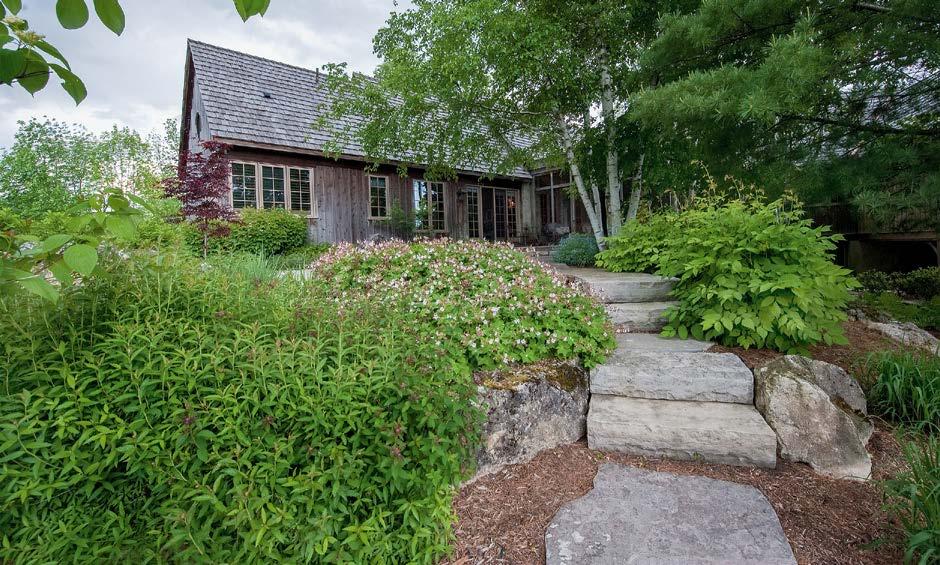
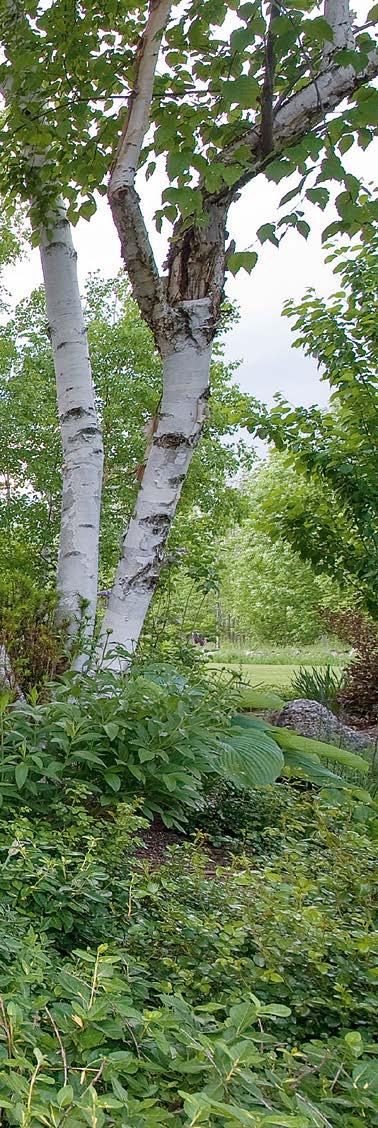
Once inside the front door, the home’s large stone-floored foyer is framed on the right by tall windows, reading nooks and built-in bookcases.
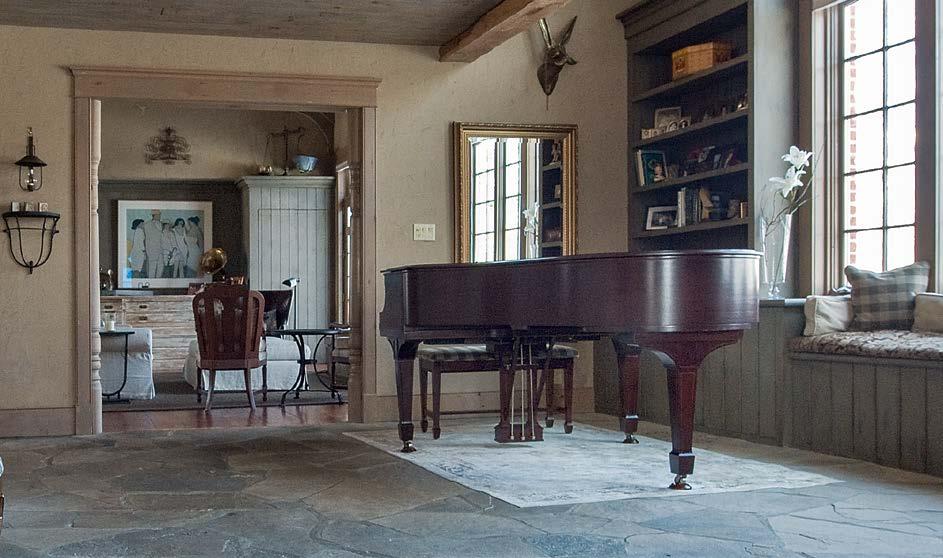
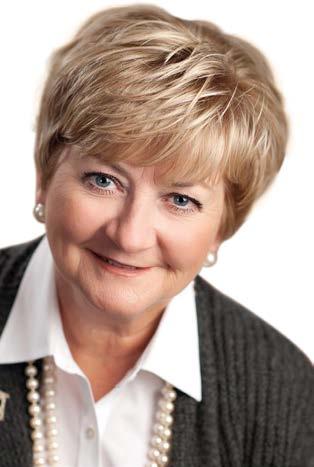


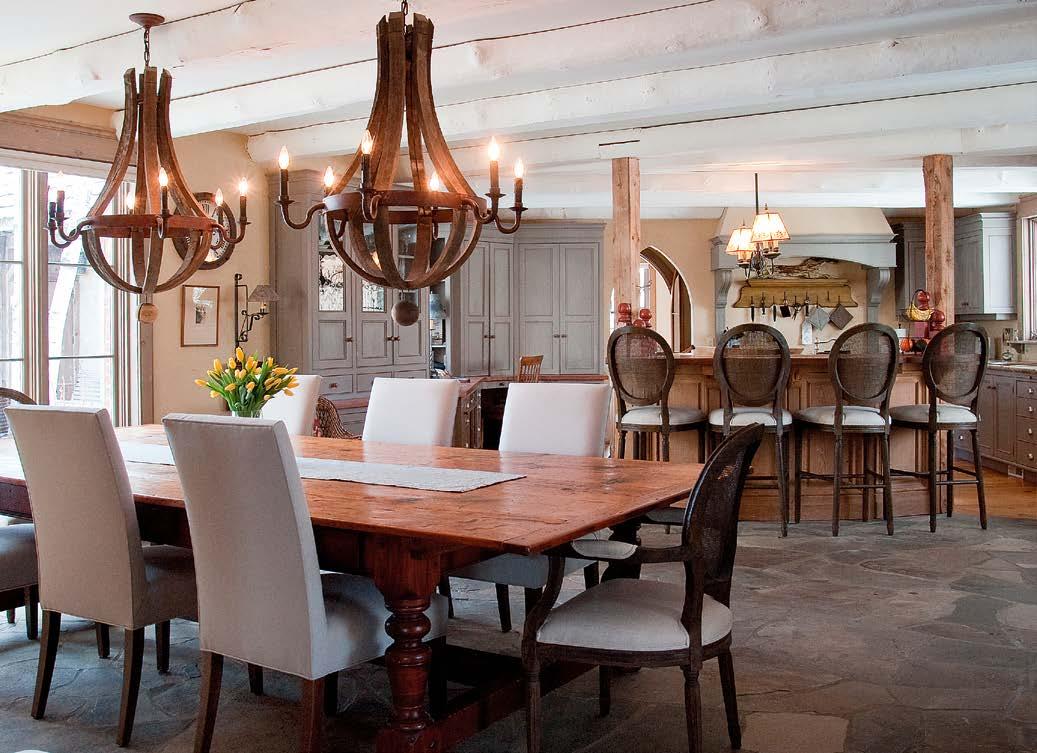

PAGE
On the immediate left is a staircase leading up to the upper loft area, home to a guest bedroom and office space. The star of the foyer is an heirloom 1921 Steinway grand piano that once belonged to Jim’s mother. “The original owner of this house also had a piano in this spot, which is just one of the many common threads I discovered between her and ourselves,” says Ann. “When I first toured the home, I opened the built-ins around the piano area and found tons of sheet music, and the music of David Foster was on the very top – he just happens


to be a close friend of ours.”
Past the piano lies the living area, dominated by an enormous beige linen sofa facing a tall, handsome fireplace. The couple says this is the hub of family activities, particularly at Christmas when they install a nine-foot tree thanks to the room’s two-storey height (part of the loft opens to the living room below). The principal bedroom is situated behind the living room with another fireplace, an expansive ensuite and magical garden views. Everywhere the colours are muted tones of grey, pale greens and yellows with an occasional hit of soft vintage red – nothing to overtake the warm, relaxed patina of vintage
CONTINUED www.jdccustomhomes.ca www.celticcarpet.ca









CONTINUED FROM PAGE 103


wood pieces and an eclectic array of landscape, abstract and figurative artworks.


Back through the foyer to its left sits the kitchen and dining area. The expansive space with its giant island is the heart of the home. This is where Ann has her office and the kids do arts and crafts at the massive harvest table, a grand piece left by the previous owner. Above the table are two enormous light fixtures, another example of the treasures Ann and Jim count themselves fortunate to have inherited with the house.
Though the home needed little interior tweaking, Ann and Jim did build an addition out from the kitchen area shortly after moving in to make room for everyone in the family. “I turned a three-bedroom house into a six-bedroom with the addition and basement renovations,” Ann explains. “Our kids and five grandchildren come almost every weekend and everyone has their own space.”
Their garden, designed by Amaranthbased Whispering Pines Landscaping, features elegant stone pathways lined with lush perennials including ferns and hostas – a soothing verdant backdrop for the occasional pop of pale yellow peonies or blue forget-me-

nots – while flowering ground cover meanders above the rich mulch.


Ann also created a pond at the top of the hill that flows down to a smaller pond, a goal she had heard the original owner shared. Later Ann came across the original landscape plans, and lo and behold, there it was: the same plan for two connecting ponds. “I felt like it was fate,” she says.

The transformation of the garden won Whispering Pines awards from Landscape Ontario, including the new Green Stamp Award for projects that exemplify green practices – such as native plantings, water conservation and permeable paving – in sustainable landscapes.

CONTINUED FROM PREVIOUS PAGE
Helping you make the right move
sigriddoherty.com

www.sigriddoherty.com
sigrid@sigriddoherty.com



direct 416-274-1592
office 905-584-2727
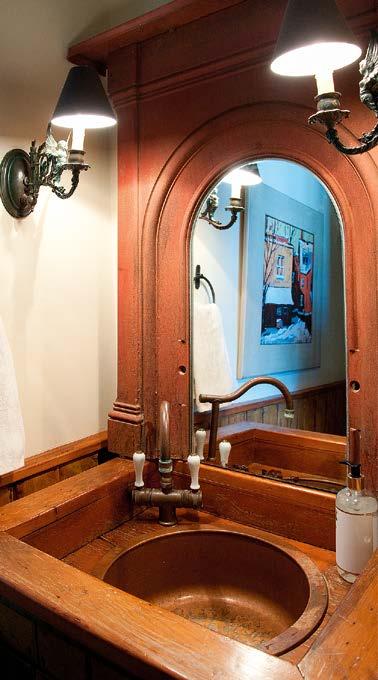
Outside the house Ann and Jim built a romantic stone “ruin” where they placed their hot tub. “It’s like a little microclimate in there,” said Ann.

“And at night you can see a million stars.” Sitting there the couple reports seeing wildlife including coyotes, deer, wolves, rabbits and wild turkeys crossing the property.
On the way in the drive, visitors pass two striking life-sized cast-iron horse sculptures (which wear blankets in
the winter!) – a shoutout to Caledon’s equine roots. When the couple bought the property, it had a vast crisscross of horseback-riding trails that were completely overgrown. They cleared and opened the original trails and riders can once again pass through.
Ann and Jim are pleased to have found other connections to their neighbourhood. They do their shopping in Erin and other nearby small towns. “Caledon really is one of the prettiest places in Ontario,” says Ann, “And we love coming home.”


—with files from Emily Dickson


 Broker
ABOVE LEFT The pantry beside the kitchen is decorated with art made by Ann and Jim’s grandchildren.
ABOVE RIGHT A copper sink is the star of the powder room off the foyer.
ABOVE A stone “ruin” was built to hold the couple’s hot tub.
Broker
ABOVE LEFT The pantry beside the kitchen is decorated with art made by Ann and Jim’s grandchildren.
ABOVE RIGHT A copper sink is the star of the powder room off the foyer.
ABOVE A stone “ruin” was built to hold the couple’s hot tub.
This fabulous Dutch Masters built equestrian centre is situated on nearly 90 acres in south Erin Features include a 16-stall barn 80x180 indoor arena, heated viewing room, tack room, office and blanket room Double grooming stalls, wash stall and outdoor sand ring Beautifully upgraded and maintained main residence Detached 4-car garage Original bank barn with 7 stalls, numerous paddocks, 30-acre hayfield and miles of hacking trails $4,250,000



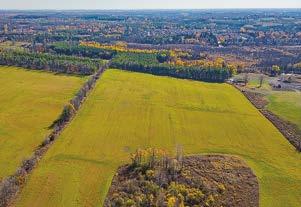
17228 Mississauga Rd, Caledon



Located in Grey County, this exceptional property features a beautifully maintained brick bungalow with walkout basement on 25 glorious acres Multiple outbuildings including a separate garage/workshop, coverall arena for all your toys and a 3-year-old 4-stall barn with attached 80x100 indoor arena and attached hay storage area Fully fenced property with multiple paddocks and large run-in shed Above-ground pool and so much more $2,999,900
Sturdy stone home on over 100 acres near Freelton 60 acres workable plus forested land Renovate the existing 3-bedroom home for yourself or build your dream home and restore the existing home as a guest house You decide the dream – farm life, getaway, lavender farm, weekend retreat Large parcels convenient to the city are a rare offering $2,750,000
Over 100 acres fronting on 2 roads w/ no severances taken Spectacularly reno’d 7-bdrm main residence w/ 40-stall equestrian centre w/ indoor arena & staff apts Earn an income as your investment grows or simply enjoy estate living located nr Georgetown Equestrian operation separate from main home Main home includes lrg entertaining spaces, home theatre, bdrms w/ ensuites self-contained in-law suites; all w/ top grade finishes Priv setting $7,500,000

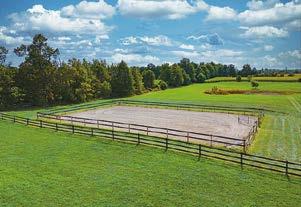

Beautifully renovated Victorian reproduction farmhouse on 15 flat and fenced acres with pond and barn High speed fibre internet for the work from home crowd There s not a hair out of place on this beauty 3 bedroom upstairs and lower level set up for private space and gorgeous main floor family room with walkout to patio

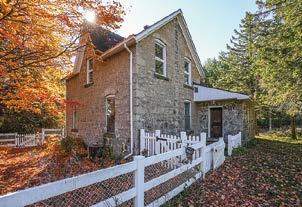


60 acres convenient to Georgetown and Erin Pride of ownership with frontages on 2 roads, geothermal heating Sun-filled 4-bedroom home with high ceilings and wood fireplace Finished lower level with walkout to patio Approx 1400 sq ft garage/shop with heat and hydro Pond farm fields and bush Everything you need!
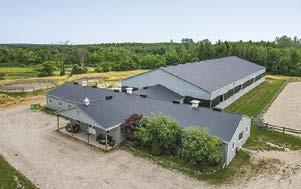

Modern, stylish bungalow Large open-concept living/dining combo is filled with gorgeous natural light 2 bedrooms on the main floor with a bonus office den or nursery Recently finished basement opens to more space with a large rec room and 3rd bedroom

This sensational home was completely renovated right down to the studs in 2018 Open-concept living with lovely finishes 3 bedrooms and 3 bathrooms all graced with large triple-pane windows Plus, a 16x32 heated inground saltwater pool


Warm and welcoming custom-built country home designed with farmhouse in mind
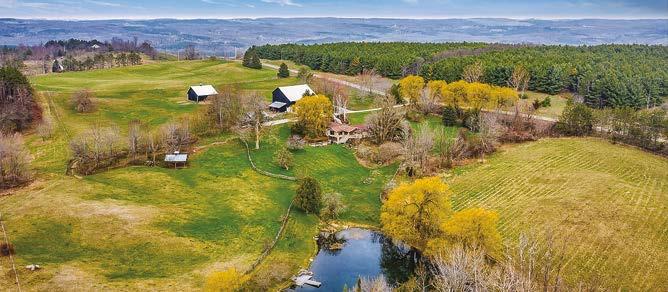

Meticulously maintained, and set well back from the road Massive detached garage is home for all your toys and hobbies



This exquisite home is beautifully positioned on
lovely acres, with sensational views from every window The stylish open-concept layout has

bedrooms 3 bathrooms 9-foot ceilings custom millwork, engineered hardwood floors and modern fixtures


2 bedrooms plus office/den 2 bathrooms and even 3 parking spaces Over 1600 sq ft of living space and a great layout there is so much to love here Large primary bedroom complete with a walk-in closet and 4-piece ensuite
Retirement living at its finest! The Village by the Arboretum is southern Ontario's most sought after 55+ adult community 1532 sq ft 2-bdrm plus

Spectacular 65 acres located in the heart of picturesque Mulmur Rolling open fields, hardwood forest bank barn 7 stalls beautiful run-in and trails throughout the property Custom design chefs’ kitchen with large island, natural stone countertops, dining room and living room with cathedral ceilings and plank flooring Very private and peaceful setting with a view over the pond and dock Lots of amenities at your doorstep, skiing, biking, golfing, Bruce Trail and farmers’ markets $2,950,000
Great location on huge 69’ x 233’ lot on First Street with lots of parking! Perfect opportunity to own your own building and be your own landlord or add to your investment portfolio! Property offers approximately 1477 sq ft of space allowing for multiple uses including professional office, aesthetics, treatment rooms, etc Turn-key Bright with high ceilings and natural light Main level with reception, large studio, and additional workspace Second level with 3 offices and a 4-piece washroom $1,049,000
Outstanding C5 zoned property


Moffat Dunlap*, John Dunlap**, Murray Snider, Nik Bonellos, Elizabeth Campbell, Courtney Murgatroyd, Sean Wynn, Mark Campbell***, David Warren****
*Chair man, **Broker of Record, ***Sales Representative,****Broker
Opportunity knocking Future development land Outside of Niagara Escarpment Commission & Conservation One farm away from Burlington Airport Easy access to Highway 401/407 Fantastic investment for expansion of urban development boundary Currently a very manageable 6-stall equestrian facility Few remaining land banking opportunities


Charming 5-bedroom main house and 2-bedroom coach house overlooking the Nottawasaga River


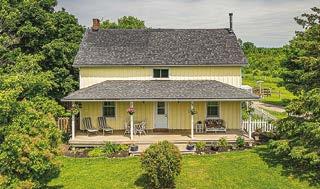





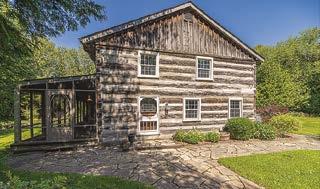


sauna Large workshop 50 acres $4,200,000

25 private acres surround this 6000 sq ft modernist masterpiece 4 light-filled bedrooms 4 bathrooms Nearby access to golf clubs, skiing, hiking $5,250,000



As featured in film productions, most recently CBC's Anne with an E, this is a storybook setting! Belain Farm has been a working farm since the 19th Century, whose long-term protection has been secured under The Ontario Farmland Trust Lined by mature sugar bush maples, a 4-bedroom, 3 5-bathroom, plus main floor in-law suite, Italianate brick home sits stately with breathtaking views over the rolling countryside and whimsical 2+ acre pond with gorgeous weeping willow There is a 10-stall end-drive barn 5 paddocks with run-in shelters a sand ring 3-car garage large drive shed a separate 1-bedroom apartment, plus an unfinished studio building About 40 acres are being farmed There are approximately 35 acres mixed conifer and hardwood forest with majestic trails 45 minutes to Toronto and Pearson International Airport A once-in-a-lifetime opportunity! $5,800,000




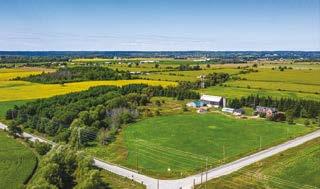


Charming 1-1/2 storey, 4-bdrm, 2-bath century home in the gothic revival style in Belfountain, set on a half-acre lot surrounded by trees & perennial grdns w/ stream small pond screened-in gazebo





Gingerbread trim, pine & hrdwd flr, stamped tin cladding in the kit, Eastlake-style covered verandah
A 1-bdrm detached timber frame coach house w/ sep septic & hydro is potential for in-law rental income, or studio/office Mins from Caledon Ski Club, Forks of the Credit, golf, cideries, breweries & more! Walk to coffee shops, public school & the Conservation Area 45 mins NW of TO $1,398,000

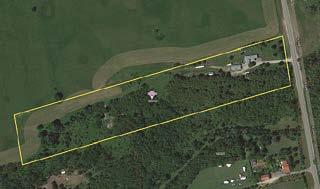
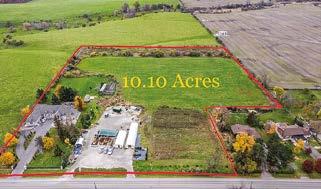
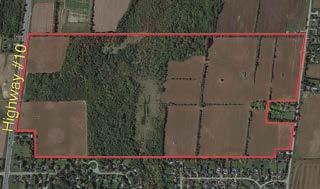
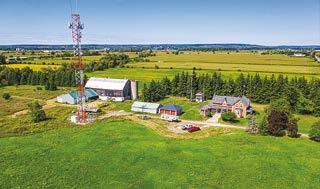
in-law/income potential Legal non-conforming


















exitwithsuccess.ca


3000+ sq ft ranch bungalow with 4 bedrooms, 4 bathrooms Main barn has an attached 2-bedroom apartment, 16 stalls, office, 2-piece bathroom and heated feed room 2 80x80 ft buildings (6400 sq ft) 10 paddocks, 35 acres of good hay, 4000 sq ft implement building with 4 roll up 12'x 14' doors Home and property exude pride of ownership Soil is sandy loam Currently set up as a thoroughbred breeding facility $4,995,000
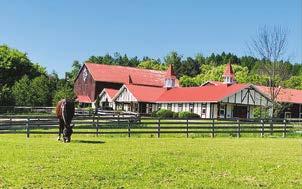
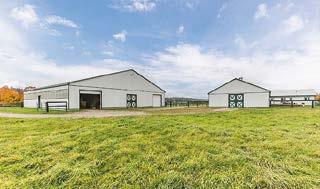
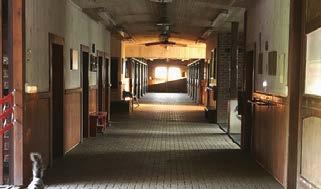

Over 7500 sq ft of living space with 4+2 bedrooms, 4 bathrooms, in sought-after cul-de-sac Enjoy the lifestyle with an entertainer s kitchen opens to the family room and a walkout to no maintenance Deck that stretches across the back of the home overlooking the pool area and cabana Finished walkout basement, oversized 3-car garage, and cobblestone Unilock driveway

Follow the gated and curbed paved driveway to this sprawling stone & stucco executive home with approximately 4000 sq ft of living space Features 2000 sq ft second home with 2-car garage, 3000 sq ft shop with office Extensive landscaping and stonework, outdoor kitchen and fireplace Only 35 minutes to downtown Toronto and 30 minutes Pearson Airport


-



Set amongst executive farms and homes Incredible property with rolling picturesque views Features include a custom renovated 5000 sq ft farm home with multi-use fully serviced secondary building Spring-fed pond and large pole barn for storage

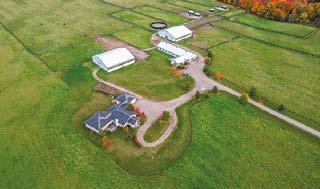




water shoreline nestled amongst mature trees 4 bedrooms, 2 5 bathrooms with amazing lake views from every room Separate bunkie and Arctic swim spa included Short drive to Barrie or Orillia, golf courses, and approximately 1 hour from GTA





Exquisite 4633 sq ft home, sweeping views, world-class equestrian facility, 24 stalls, indoor arena, viewing lounge, heated wash stalls, outdoor sand ring, guest home, artesian spring-fed pond, 39 acres hay, forest, trails, multiple barns, 10 paddocks, separate gated drives to house and facility The property is 2 individual deeded lots – 80 acres has buildings 20 acres clear 20 minutes to Caledon Equestrian Park and 45 minutes to Pearson A rare countryside retreat $4,950,000
Features site specific automotive repair zoning on portion, located in developing area of Tottenham Barns, shops, storage areas, office trailer, 5000 sq ft insulated heated shop with large access doors operating as automotive and large machine repair shop Home features engineered hardwood flooring and custom kitchen with a large island Oversized deck overlooking forest $6,500,000
H I D D E N T R E A S U R E
5 bdrm nestled on cliff blending into nature
Overlooks hills of Hockley Main floor prim bdrm Sunrm, pool, hot tub & koi ponds w/ waterfalls Open land trees trails brook & long views 3-car grg w/ heated 2nd lvl loft $3,299,000 Wayne Baguley 519-941-5151


A sought after area Move in ready bungaloft, w/ in-law suite Hrdwd flrs soaring ceilings tons of natural light 3 bdrms on main floor, upper lvl loft Fin’d lwr lvl walks out to manicured backyard Dead end road, close to trails $2,049,000 Wayne Baguley 519-941-5151


1936 log home w/ addition 1 34 acs w/ the Nottawasaga River running thru Watch trout in spring from kit or step down to the river & enjoy salmon in the fall 3 bdrm, 1 bath, liv rm, bright eat-in kit w/ w/o to the deck & river



$859,000 Wayne Baguley 519-941-5151
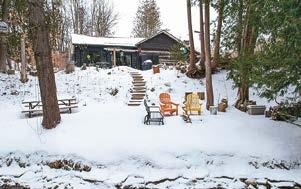





F E A T U R E D O N T V S H O W 10+ ac 3 ponds waterfall Secret doors 7 bdrm, 13 baths, 2-storey library, karaoke room, theatre/recording studio, indoor firing range, indoor pool, solarium, 5-car garage with nanny suite above $6,799,000 Wayne Baguley 519-941-5151
9 - A C C O U N T R Y E S T A T E 4-bdrm 3-bath board & batten home with rock gardens & mature trees Pond, stream & bush Bank barn w/ lower level stalls & fin, insulated upper level being used as an office Inground pool & hot tub Mins to Hillsburgh $1,799,000 Wayne Baguley 519-941-5151
Y O U R
O

N R E S O
1 0 - A C E S T A T E O N G R A N D
PM Page 1 112 / IN THE HILLS

V I N G D R E A M 4500+ sq ft, 5 bdrm, 5 bath, spacious kit/din, great rm, bsmt workshop, indoor pool, 3-car garage, 45 acres with 5 km trails, bordering Grand River Rolling hills, pond, shed (30'x50') with insulated shop greenhouse $2,799,000 Wayne Baguley 519-941-5151


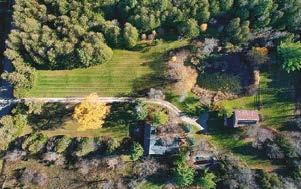
C O U N T R

This truly is a special country property with stunning views, scenic walking trails, waves of lavender rows in the field, rolling hills, mature trees, natural ravines, and an abundance of wildlife Original bank barn with a private pool area in pristine condition An ideal building site for your dream home Call today for your appointment to view with Jason Haist, Broker of Record 519-942-9499 MLS


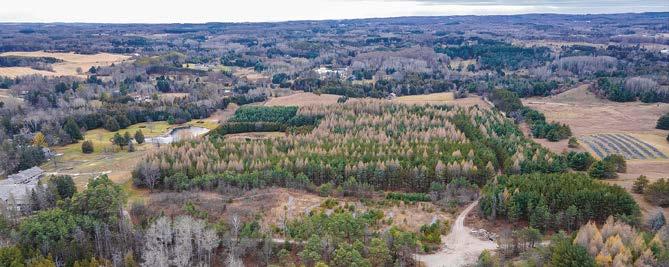

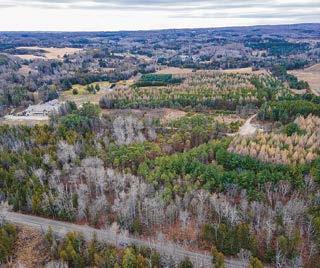
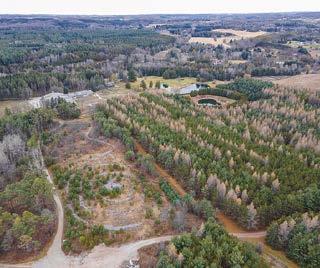
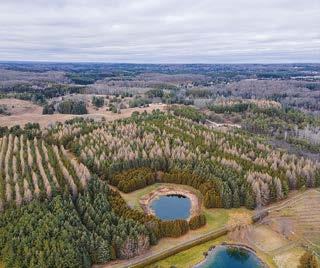

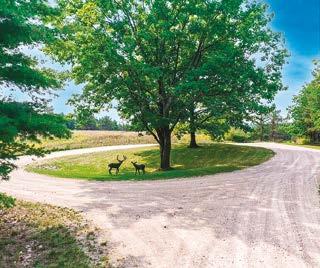
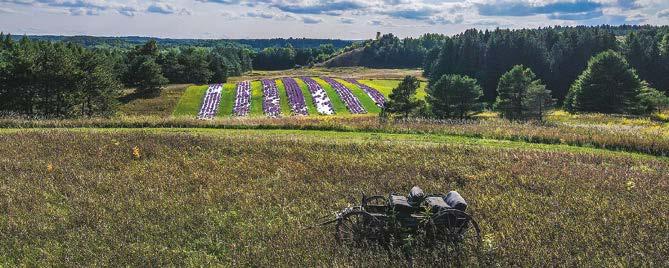
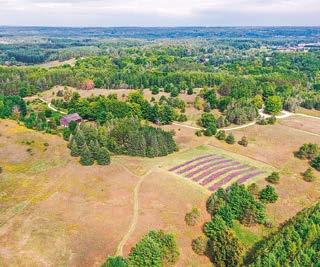
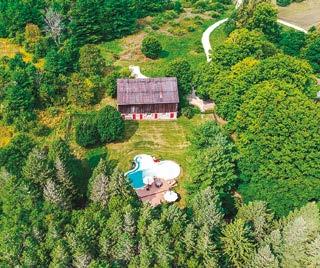

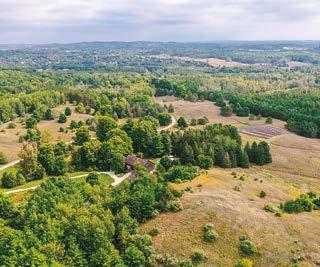

5-bedroom, 4-bathroom, 2-storey home sits on a wonderfully private setting with approximately 3 acres of lawn area around the house included for use by the tenants Finished lower level, multiple walkouts, 2-car garage No short term options 4830 Charleston Sideroad $4500/month


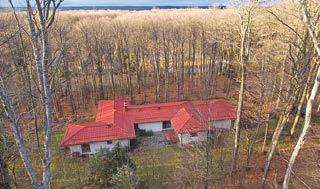




Lovely private 1-acre parcel – treat as “vacant lot” with well and septic Land value only – 1969 2-storey house in deteriorated condition being sold “as is” Will require a complete renovation or more likely a new build Easy access to Airport Road




Storybook setting, stone home with high baseboards, original pine floors on 2nd level, stone accent walls and deep windowsills Most of the land is arable with 60 acres in crop, 20 in hay and 6 acres of paddocks Outbuildings include a solid bank barn with 7 stalls and 1 5-car garage/workshop, a drive shed, and a 70’x128’ indoor arena There’s also a sand ring, a hot tub an above-ground pool and hard-wired generator A versatile farm with many possibilities located near Angel Stone and Palgrave $4,199,000



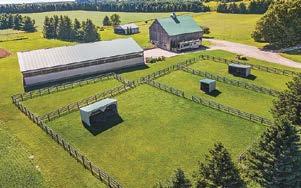


65 acres of rolling hills views and privacy Paddocks barns riding ring 7 stall-bank barn



S E R E N E & P R I V A T E
27 acres of beautiful mature trees with walking trails, located at the top of a large hill







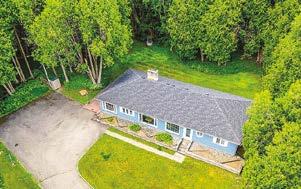

L U X L
S O L D Schild spr23_Layout 1 23-03-02 3:56 PM Page 1 E Q U E S T R I A N ’ S D R E A M

C O U N T R Y H O M E
E N D L E S S O P P O R T U N I T I E S
9 78 acres of vacant land with mixed brush and open meadows Wonderful privacy in a quiet area on a paved road Currently under conservation land tax incentive program $350,000

8 6 acres of beautiful land in Mulmur located on unmaintained portion of quiet road
The Bruce Trail passes by the driveway Towering hardwoods gorgeous ravine stream and private location Hydro and septic on property $600,000
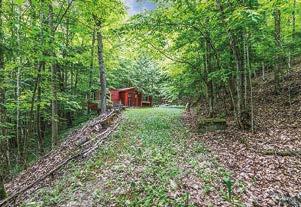
I V I N
This secluded & wooded 8 4-acre property provide a private oasis where you can relax next to the babbling stream, skip stones across the pond, or trail through the cedar forest Follow the winding driveway to a quaint 3-bdrm bungalow with bright kitchen, separate dining room & 2 wood-burning fireplaces! Call Caledon home & explore all the hiking, cross-country skiing, biking, fine restaurants & breweries in the neighbourhood Enjoy easy access to Orangeville, Caledon East & 45 mins to the Airport Book a showing and bring your ideas $1,289,900
A central downtown Orangeville location offering you the convenience of lock & leave ! Floor-to-ceiling windows in the living room allow for lots of natural light plus a walkout to the open balcony, perfect for summer BBQ s and early morning coffee The main floor has a spacious family room, 3-piece bathroom, dedicated laundry room and storage closet The second level showcases 2 bedrooms, both with walk-in closets and ensuite baths Did we mention the 2 underground parking spaces? $699,900 B R I C K B E A U T Y

1 23-03-02 10:01 AM Page 1 SPRING 2023 / 115



COMPILED BY JANET KERR DIMOND • ILLUSTRATIONS BY JIM
NOW – MAR 29 : OUR STORY: PAST & PRESENT Indigenous artworks from Josh Morley, Sharon Rigby, Josy Thomas and Janice Toulouse. Tue-Sat 11am-4pm. Dufferin County Community Resource Circle (DCCRC), Museum of Dufferin, Airport Rd & Hwy 89. 1-800941-7787; dufferinmuseum.com
MAR 21 : TECH HELP @ THE LIBRARY:
CPL MOBILE APP The whole library in your pocket! 6:30pm. Free. Caledon Library, 150 Queen St S, Bolton. 905857-1400 x22; caledon.library.on.ca
MAR 21, APR 18 & MAY 16 : ORANGE
THREADS Share your passion for reading and all things fibre arts. Orangeville Library, 275 Alder St, Orangeville. 519-941-0610; orangevillelibrary.ca
MAR 22 – APR 19 (WEDNESDAYS) :
DRAWING ON YOUR GRIEF: ADULT
GRIEF SUPPORT GROUP Integrate loss into your new normal through art. No talent required. Free, register with Louise at lsallese@bethellhospice.org; 905965-2534. 7-8:30pm. 15835 McLaughlin Rd, Inglewood. bethellhospice.org
MAR 22 – APR 23 : WILD & FREE
Headwaters Arts members exhibit their best expressions of flora and fauna. Wed-Sun 10am-5pm. Free. Alton Mill Arts Centre, 1402 Queen St, Alton. 519-943-1149; headwatersarts.com
MAR 22 : EMWF BOOK CLUB: IN THE UPPER COUNTRY Debut author Kai Thomas in conversation with host Bee Quammie. Virtual with closed captioning. 7-8pm. Free. Eden Mills Writers’ Festival, 519-341-4320; emwf.ca
MAR 25 : FACING CLAUDE CAHUN & MARCEL MOORE: EXHIBITION CELEBRATION & PANEL DISCUSSION Exhibition curator Michelle Gewurtz leads a discussion with artists August Klintberg, Cara Tierney and Laura Taler. 2-4pm. PAMA, 9 Wellington St E, Brampton. 905791-4055; pama.peelregion.ca
APR 13 : PRIDE BOOK CLUB (16+) Discuss books with LGBTQ+ themes. Skye Falling by Mia McKenzie. To read it, go to the library’s catalogue and place a hold. Free, register. 7-8:30pm. Free. Caledon Library, 905-8571400 x228; caledon.library.on.ca
APR 15 – JUN 24 : KEIGHT MACLEAN: ORDINARY WOMEN Historical female portraits with experimental additions from this Queer, disabled, female, award-winning artist. TuesSat 11am-4pm. Airport Rd & Hwy 89. 1-877-941-7787; dufferinmuseum.com
APR 16 : HEALING THROUGH
ART: PAINTING WITH BROKEN TABLE TALKS (13+) Explore mental health through an artistic and creative lens. All supplies provided. Free, register. 2-3:30pm. PAMA, 9 Wellington St E, Brampton. 905791-4055; pama.peelregion.ca
APR 18 : AN EVENING WITH SAMANTHA BAILEY Best-selling author discusses her works. Zoom. 6:30pm. Free. Caledon Library, 905857-1400 x228; caledon.library.on.ca
STEWARTAPR 25 : EMBROIDERED CANVAS ART Combine painting with embroidery. No experience required. 6:30pm. Free. Caledon Library, 225 Dougall Ave, Caledon. 905-8571400 x228; caledon.library.on.ca
APR 26 – MAY 28 : CONVERGE Mono artist Emily Escoffery examines the intersection of patterns and grids through colour and nonobjective subject matter. Wed-Sun 10am-5pm. Free. Alton Mill Arts Centre, 1402 Queen St, Alton. 519-943-1149; headwatersarts.com
APR 29 – SEP 3 : ਸ਼ੀਸ਼ੇ ‘ਚ ਤਰੇੜ | SHEESHE ‘CH THARE Ṛ | A CRACK IN THE MIRROR Multimedia work by young Punjabi-Sikh Canadian artist Simranpreet Anand. PAMA, 9 Wellington St E, Brampton. 905791-4055; pama.peelregion.ca
APR 29 – SEP 3 : PAMILA MATHARU: SOME TOTAL Interdisciplinary artist of Sikh Panjabi heritage Pamila Matharu’s journey of self-discovery. PAMA, 9 Wellington St E, Brampton. 905-791-4055; pama.peelregion.ca
Be a part of our 30th season announcement at our Starlight Gala on April 28th. Check out The New Canadian Curling Club, from April 26th to May 14th. Stay tuned for more exciting details about the reprise of our Summer Arts Festival. Our Young Company will be putting on a production of ‘Puffs’ this summer – a story about a young wizard, no relation to the one in England.









MAY 3 – 28 : FACES & SPACES, FIGURATIVELY SPEAKING
Photography, fine art, arts and cultural performances and presentations. Part of the the Scotiabank CONTACT Festival. Also in Helson Gallery, Georgetown. Wed-Sun 10am-5pm. Free. Alton Mill Arts Centre, 1402 Queen St, Alton. Studio By Design, 647-466-1896; studiobydesign.ca
MAY 4 : INTERGENERATIONAL
STORYTELLING: WRITING & STORYSHARING WORKSHOP (18+)
Share a brief written story with someone from a different generation. Free, register. 7-8:30pm. Jeyolyn Christi, Brampton Library, PAMA, 9 Wellington St E, Brampton. 905791-4055; pama.peelregion.ca
MAY 11 : BEAUTIFUL NATIVE
PLANTS & ART WORKSHOP WITH BRAMPTON LIBRARY & TRCA (ALL AGES) Decorate pots to take home with a free plant. All children with an adult. Free, register. 6:30-8:30pm.
PAMA, 9 Wellington St E, Brampton. 905-791-4055; pama.peelregion.ca
JUN 3 & 4 : GLEN WILLIAMS GLASS
SPRING SECONDS SALE Hand-blown glass prototypes, old stock and secondquality items at excellent prices. 11am5pm. Free. Glen Williams Glass, Williams Mill Creative Arts Centre, 515 Main St.Glen Williams. glenwilliamsglass.com
FARMERS’ MARKETS
APR 29 & JUN 17: ROSEMONT 10am4pm. Rosemont Hall & Store grounds, 9237 Hwy 89, Alliston. Facebook: Rosemont General Store
MAY 6: ORANGEVILLE Saturdays, 8am-1pm. Orangeville Town Hall, 87 Broadway. orangevillefarmersmarket.ca
MAY 20: CREEMORE Saturdays, 8:30am-12:30pm. Creemore Station on the Green, 10 Caroline St E. creemorefarmersmarket.ca
MAY 22: ALLISTON Saturdays, 8am-2pm. Centre St & Victoria St. allistonbia.com
JUNE 22: ERIN Thursdays, 3-6:30pm. Erin Fairgrounds, 184 Main St. villageoferin.com
NOW – APR 30 : WE ARE HOCKEY Celebrate Canada’s unsung people of colour hockey heroes. PAMA, 9 Wellington St E, Brampton. 905791-4055; pama.peelregion.ca
CCS
Caledon Community Services
CPCC
Caledon Parent-Child Centre
CVC
Credit Valley Conservation
DCAFS
Dufferin Child and Family Services
DCCRC
Dufferin County Community Resource Circle
DPSN
Dufferin Parent Support Network
EWCS
East Wellington Community Services
MOD
Museum of Dufferin
NVCA
Nottawasaga Valley Conservation Authority
OAS
Orangeville Agricultural Society Event Centre
PAMA
Peel Art Gallery, Museum and Archives
SBEC
Orangeville & District Small Business Enterprise Centre
$20; snack, lunch and prizes. Call to register. 9:30am-2pm. Caledon Seniors’ Centre, 7 Rotarian Way, Bolton. 905-951-6114; caledonseniors.ca
MAR 22 – APR 26 (WEDNESDAYS) : BETHELL HOSPICE CAREGIVER
MAR 24, APR 28, MAY 26 : CALEDON SENIORS’ CENTRE MONTHLY DINNERS Dine-in or take-out. Pick-up 4:30-5pm. Dine-in 5:30 pm. Proof of vaccination or negative test required. Mar 24: lasagna. Apr 28: shepherd’s pie. May 26: BBQ hamburgers and hot dogs. $15, local delivery, $2. Call two days prior to order. 7 Rotarian Way, Bolton. 905-951-6114; caledonseniors.ca
MAR 25 : INDIGENOUS SERIES: KAIROS BLANKET EXERCISE Build understanding about our shared history as Indigenous and non-Indigenous peoples in Canada. Zoom. 1pm. Free. Brampton Caledon Community Foundation, Caledon Library, 905857-1400 x228; caledon.library.on.ca
MAR 25 : MOD MINDS: CLIMATE CONVERSATIONS – INDIGENOUS PERSPECTIVES Learning with Indigenous Community Elder Karen Vandenberg and Skye Vandenberg.
1-2:30pm. $10. Museum of Dufferin, Airport Rd & Hwy 89. 1-877-9417787; dufferinmuseum.com
MAR 26 : SALON SUNDAY AT CHATEAU WINDRUSH – IVANA & JAN
MAY 24 : ELIZABETH SCAVETTA TEEN
WRITING VIRTUAL WORKSHOP & LECTURE SERIES: AUTHOR TANYA
BOTEJU Strategies to overcome writer’s block. 6-7:15pm. Free. Caledon Library, 905-857-1400 x228; caledon.library.on.ca
MAY 28 : PAMA TALKS: JEWISH MODERN & CONTEMPORARY ARTISTS WITH JOSH HEUMAN A light-hearted kibitz with special focus on Jewish artists in and from Canada. 2-3pm.
PAMA, 9 Wellington St E, Brampton. 905-791-4055; pama.peelregion.ca
MAY 31 – JUL 2 : A ROUND THE SQUARE ART SHOW Works created on a 12" square or 12" diameter media, including 3D work. Wed-Sun 10am-5pm. Free. Alton Mill Arts Centre, 1402 Queen St, Alton. Headwaters Arts Gallery, 519-943-1149; headwatersarts.com
NOW – MAY 15 (MONDAYS) : EXPLORER’S BIBLE STUDY (18+) In-depth Bible study of I & II Timothy and Titus! Online discussion available. 7-8pm. $60. tabitha.ebs@gmail. com; ebsbramptonontpm2034. churchcenter.com
NOW – JUN 30 (FRIDAYS) : ALTON
LEGION – FRIDAY NIGHTS FUN
DARTS (19+) Drop-in darts for new and experienced players. Everyone welcome. $5/week. Cash prizes. 7:309:30pm. Alton Legion Br 449, 1267 Queen St W, Alton. altonlegion.ca
NOW – ONGOING : BEYOND THE BARS: THE HISTORY OF THE PEEL COUNTY JAIL Thoughtful and compassionate approach to those who spent time there. PAMA, 9 Wellington St E, Brampton. 905791-4055; pama.peelregion.ca
MAR 18 : BID EUCHRE TOURNAMENT & LUNCH Sign in 9:30am, tournament play 10am. Lunch follows. Proof of vaccination or negative test required.
SUPPORT GROUP Drop in to share thoughts and connect with peers. Must be a Bethell Hospice client, consent required. 1:30-2:30pm. Free. 15835 McLaughlin Rd, Inglewood. bethellhospice.org
MAR 22 : SENIORS’ HEALTH & WELLNESS FAIR Speakers, lunch and services to keep you independent and healthy. 8:30am-3:30pm. Free. Orangeville Seniors’ Centre, 26 Bythia St. orangevilleseniorscentre.com
MAR 22 : LOCAL SPECIES AT RISK
PRESENTED BY ONTARIO STREAMS (18+) Kat Lucas speaks on how to protect our environment. Zoom. 6:30pm. Free. Caledon Library, 905857-1400 x228; caledon.library.on.ca
MAR 23 & APR 21: HFFA WINTER
HARVEST DINING SERIES An exquisite dinner prepared with locally sourced ingredients. 6:30-8:30pm. Mar 23: Mono Cliffs Inn, 67006 Mono Centre Rd, Mono. Apr 21: Adamo Estate Winery, 793366 3rd Ln EHS, Mono. Headwaters Food and Farming Alliance, hffa.ca
BENDA How to understand cultural differences between the West and China. 3-6pm. $60, wine and cheese reception, and bottle of Windrush wine. Proceeds help empower underserved kids through youthLEADarts.com. Windrush Estate Winery, 3100 Con Rd 3 Adjala. 905729-0011; windrushestatewinery.com
MAR 27 : ORANGEVILLE BLOOD
DONOR CLINIC Every donation counts. Please book now. 2-7pm. Best Western, 7 Buena Vista Dr, Orangeville. Canadian Blood Services, 1-888-236-6283; blood.ca
MAR 27, APR 24 & MAY 29 : STIR
THE POT Enjoy wine and dinner while you prepare soup for our local food bank and shelters. $60, includes wine, dinner, and soup ingredients. 6:30-9pm. Lavender Blue Catering and Café, 125 Broadway, Orangeville. 519-939-3663; soupsisters.org
MAR 30 – APR 20, APR 27 – MAY 18 : SENIORS CONNECTING THROUGH COOKING Learn recipes and enjoy lunch with new friends. No experience required. Some standing, but accommodations can be made. 11am. Free. Caledon
Meals on Wheels, Palgrave United Community Kitchen, 34 Pine Ave. 905-880-0303; palgravekitchen.org







MAR 31 – APR 2: ORANGEVILLE
LIONS HOME & GARDEN SHOW
Renovating, building, decorating, retirement living, artisans and more. Free parking and admission. OAS Event Centre, 247090 5 Sdrd, Mono. 519-942-6341; orangevillelions.org
APR 1 & MAY 6: CALEDON SENIORS’ CENTRE FUNDRAISING PANCAKE
BREAKFASTS Dine-in or take-out. Dine-in at 9am or 10:30am. Pick-up
10-10:30am. Proof of vaccination or negative test required. Apr 1: Scrambled egg, sausage. May 6: TBD. $12; children 12 & under $10 (smaller quantities). Call to reserve.9am-noon. 7 Rotarian Way, Bolton. 905-951-6114; caledonseniors.ca
APR 5 – MAY 3 (WEDNESDAYS) : BETHELL HOSPICE ADULT BEREAVEMENT SUPPORT GROUP (19+)
Explore events, thoughts and feelings associated with grief. Zoom option available. Free, register at sjanzen@ bethellhospice.org; 905-866-2015.
7-8:30pm. Inglewood Community Centre, Inglewood. bethellhospice.org
APR 5 : CALEDON SENIORS’ CENTRE
EASTER SPECIAL LUNCH Take-out or dine-in. Pick-up 11:30am-noon. Dine-in noon. Proof of vaccination or negative test required. Ham. $10; local delivery, $2. Call by Apr 3 at 3:30 to place order. 11:30am-1pm. 7 Rotarian Way, Bolton. 905-951-6114; caledonseniors.ca
APR 6 : TRCA PRESENTS THE MAGIC OF RAIN BARRELS (18+) Install a barrel and use rain to your advantage. Beginner-level information. Zoom.
6:30pm. Caledon Library, 905-8571400 x228; caledon.library.on.ca
APR 9 : HORNING’S MILLS COMMUNITY HALL EASTER BRUNCH & EGG HUNT Brunch features pancakes, sausages and fruit, and an outdoor egg hunt. 9:30am. $10; children $5. 14 Mill St, Horning’s Mills. 705-481-7548; Facebook/HorningsMills
APR 12 : TECH HELP @ THE LIBRARY: LANGUAGES AT THE LIBRARY
Explore our multilingual collections, ESL supports, translation options and language-learning tools. Zoom.
6:30pm. Free. Caledon Library, 905857-1400 x228; caledon.library.on.ca
APR 13 : CALEDON GARDEN CLUB – DEVELOPMENT OF FRIENDSHIP GARDENS, HEADWATERS HEALTHCARE Chief gardener Lynn Sinclair Smith shares her experience. 7:30-9pm. $3. Cheltenham Fire Station, 14190 Creditview Rd. Caledon Horticultural Society, 905838-3541; gardenontario.org
APR 13 & MAY 11 : PROBUS CLUB OF ORANGEVILLE MONTHLY MEETINGS
Apr 13: Susan Dunlop – Wellington House of Industry and Refuge. May 11: Melissa Kovacs – Dufferin Recycling. The Salvation Army New Hope Community Church, 690 Riddell Rd, Orangeville. Probus Club of Orangeville, 519-9388934; probusorangeville.club
APR 15 : CALEDON SENIORS’ CENTRE OH HELL & BRIDGE TOURNAMENT & LUNCH Sign in 9:30am, tournament play 10am sharp. Lunch follows. Proof of vaccination or negative test required. $20; call to register. Includes snack, lunch and prizes. 9:30am-2pm. 7 Rotarian Way, Bolton. 905-951-6114; caledonseniors.ca
APR 20 : SHELBURNE JOB FAIR
Recruit the best candidates for your organization. Email edc@shelburne. ca for info. 1-7pm. Free. Centre Dufferin Recreation Complex. 519925-2600 x 239; shelburne.ca
APR 20 : GIBSON CENTRE FUNDRAISER Taste of the Town 2023. 5:30-8pm. The Gibson Centre for Community, Arts and Culture, 63 Tupper St W, Alliston. gibsoncentre.com
APR 20 : POST TRAUMATIC GROWTH: LOSS & HEALING THROUGH THE LENS OF THE PANDEMIC Experience personal development, and a sense of renewal and growth with Steven Janzen. In-person or Zoom. 7pm. Free, register. Bethell Hospice, Caledon Library, 225 Dougall Ave, Caledon. 905857-1400 x228; caledon.library.on.ca
APR 29 : ST. ANDREW’S HILLSBURGH MOTHER’S DAY INDOOR MARKETPLACE & BAKE SALE
Homemade crafts, small business vendors and our famous homemade goodies. 10am-1pm. 83 Trafalgar Rd, Hillsburgh. 519-855-6216
APR 29 : CALEDON HORSE TACK
SWAP – SPRING 2023 New and used horse equipment in two buildings. Vendor fees for sellers. 10am-3pm. Free. Caledon Village Place and Caledon Fairgrounds, Caledon Village. Caledon Agricultural Society, 519-925-3461; caledonfair.ca
speaks on his internationally acclaimed photography books. 7:30-9pm. $3. Cheltenham Fire Station, 14190 Creditview Rd. Caledon Horticultural Society, 905-838-3541; gardenontario.org
MAY 12 : AN INTIMATE EVENING WITH SPIRIT Stefanie Kalan connects with Spirit to provide evidence our souls continue in the afterlife. 6-9pm. $60, nonrefundable; includes intimate group reading, snacks and beverages. Hereward Farm, 141051 15 Sdrd, East Garafraxa. 226-779-4973; herewardfarm.com
MAY 13 : MOTHER’S DAY SPRING EXTRAVAGANZA Preorder plants, yard sale items, home baking, auction. 519925-2397 or primroseuc@gmail.com for info. 8am-noon. 486281 30 Sdrd, Mono. 519-925-2233; shelburneprimrose.com
MAY 13 : SPRING FESTIVAL & PLANT SALE Transplants, perennials, food and fun. 10am-3pm. 16555 Humber Station Rd, Caledon. albionhillscommunityfarm.org
MAY 17 : CALEDON SENIORS’ CENTRE SPECIAL LUNCH Take-out or dine-in. Pick-up 11:30am-noon. Dine-in noon. Proof of vaccination or negative test required. Menu TBD. $10; local delivery, $2. Call the centre by May 15 at 3:30pm to place order. 11:30am-1pm. 7 Rotarian Way, Bolton. 905-951-6114; caledonseniors.ca
APR 15 – JUN 24 : KEIGHT MACLEAN:
ORDINARY WOMEN Historical female portraits with experimental additions from this Queer, disabled, female, award-winning artist. TuesSat 11am-4pm. Airport Rd & Hwy 89. 1-877-941-7787; dufferinmuseum.com
APR 16 : WHOLE VILLAGE ORIENTATION Tour the farm and eco-residence. 1pm. $10. 20725 Shaws Creek Rd, Caledon. 519-941-1099; wholevillage.org
APR 19, MAY 17 & JUN 21 : CREEMORE HORTICULTURAL SOCIETY MEETINGS
Apr 19: Joanne Rochfalowski – All about Dahlias. May 17: Julia Dimakos – Successful Vegetable Gardening. Jun 21: Joan Nieman-Agapas – Pruning for the Faint of Heart. Spring Flower and Vegetable Show. 7-9pm. Free. St. Luke’s Anglican Church Hall, 22 Caroline St W, Creemore. gardenontario.org
MAY 7 : HIGH TEA & HIGH HEELS
Preorder your High Tea box with vintage tea cup and treats to enjoy at home. Proceeds to Erein-Wellington Community Services. 11am-1pm. 519-833-9696; ew-cs.com
MAY 8 : CALEDON SENIORS’ CENTRE AGM Soup and sandwich lunch at noon. Everyone welcome! 1-3pm. Free. 7 Rotarian Way, Bolton. 905-951-6114; caledonseniors.ca
MAY 9 : CONNECTIVITY THROUGH HUMOUR WITH KATE DAVIS Find balance and resilience with this 12-time Canadian Comedy Awards nominee. 11:30am-2pm. $25. Monora Park Pavilion, 500 Monora Park Dr, Mono. SBEC, 519-941-0440; orangevillebusiness.ca
MAY 11 : CALEDON GARDEN CLUB –TURTLE ISLAND & ROYAL BOTANICAL GARDENS, HAMILTON Mark Zelinski
MAY 17 : DEAR JOURNAL: USING A WRITTEN DIALOGUE TO COPE DURING STRESSFUL TIMES Natalie Talma shares how to channel strong feelings into healthy and productive internal fuel. Free, register; in-person or Zoom. 7-8pm. Bethell Hospice, Caledon Library, 225 Dougall Ave, Caledon.
MAY 20 : HILLSBURGH HORTICUL -
TURAL SOCIETY & GARDEN CLUB
SPRING PLANT SALE Please bring trays to carry your purchased plants. Rain or shine. Proceeds to the club’s community beautification projects and educational programs. Cash only. 8:30am-1pm. St. Andrew’s Presbyterian Church, 83 Trafalgar Rd. Hillsburgh Garden Club
MAY 27 : FRIENDSHIP GARDENS
PERENNIAL PLANT SALE Great prices and plant experts on site. Plant donations are welcome up to one week before the sale. Free parking, cash and debit accepted. 8:30-11am. 140 Rolling Hills Dr, Orangeville. 519-942-6341; instagram.com

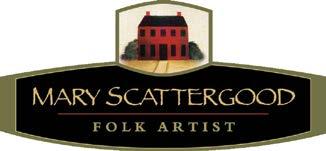







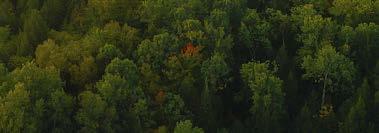
Pet a pony. Meet a unicorn. Laugh out loud! Learn, play, shop. Go home happy.
Saturday
May 27, 2023
Erin Fairgrounds
184 MAIN ST., ERIN
accompaniment. 2-3pm. Register. PAMA, 9 Wellington St E, Brampton. 905-791-4055; pama.peelregion.ca
MAY 27 : GRAND VALLEY LIONS
DUCK RACE Over $20,000 in prizes. Race 2pm sharp. Live music, children’s activities, food. Noon-4pm. $10. Hereward Park, Grand Valley. 519943-5471; grandvalleylions.com
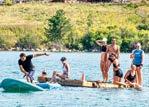

JUN 3 – ONGOING : IRON WILLED:
WOMEN IN STEM Recognition for the crucial role of women in Science, Technology, Engineering and Math. PAMA, 9 Wellington St E, Brampton. 905-791-4055; pama.peelregion.ca
MAR 21 : TEEN BOOK COVER BINGO
Live Bingo and prizes. Zoom link emailed during registration. 7pm. Free. Caledon Library, 225 Dougall Ave. 905-8571400 x228; caledon.library.on.ca
MAR 23 : THE UGLY DUCKLING (4+) Lightwire brings a classic tale to life. 6:30-8pm. Rose Theatre, 1 Theatre Ln, Brampton. 905-874-2800; rosetheatre.ca
Tickets: ticketscene.ca, 519.216.4562 $5/child, $10/adult, $25/any 4
Rain or shine, it’s fun for the whole family! horsedayerin.ca In

Private and group settings. Family safe environment.
Want to know more about our memberships, programs and lessons?
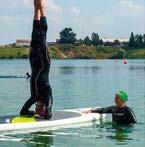


JUN 3 : CREEMORE HORTICULTURAL SOCIETY PLANT SALE Plants donated from our members’ gardens. 8:30amnoon. Free. Station on the Green, 10 Caroline St E, Creemore. creemoreHort@ gmail.com, gardenontario.org
JUN 3 : ST. ANDREW’S HILLSBURGH CRAFT & BOOK, PUZZLE & GAME
SALE Books and games for the cottage, homemade items. 10am-1pm. 83 Trafalgar Rd, Hillsburgh. 519-855-6216; pccweb.ca
JUN 8 : CALEDON GARDEN CLUB –ANYTHING BUT GRASS An evening with In The Hills’ writer and naturalist Don Scallen. 7:30-9pm. $3. Cheltenham Fire Station, 14190 Creditview Rd. Caledon Horticultural Society, 905838-3541; gardenontario.org
JUN 17 : CALEDON DAY Kids’ activities, vendors, entertainment with four-time Juno Award winners The Sheepdogs. 2-11pm. Caledon East Community Complex, Caledon East. Town of Caledon, 905-584-2272 x4376; caledon.ca
JUN 22 : AN EVENING UNDER THE STARS Cocktails, dinner, music and dancing at a private country property in Mono. Proceeds to Dufferin Community Foundation. 5:30-11pm. $200. Dufferin Community Foundation, 519-938-0780; dufferincommunityfoundation.ca
NOW – JUN 26 (MONDAYS) : ORANGEVILLE CUB PACK Scouting program for 7- to 10-year-olds. 7-8:30pm. $120. Mono Amaranth Public School, Hockley Rd, Mono. BPSA, 519-940-4738.
MAR 18 : WHAT IF: A SCENTED EXPERIENCE WITH TRACY
PEPE (7–13) Feel and smell happy with essential oils. Adult
APR 1 – 30 (SATURDAYS & SUNDAYS) : PAMA FAMILY FUN ACTIVITY Drop in to create art! All children with an adult. 1-4:30pm. PAMA, 9 Wellington St E, Brampton. 905791-4055; pama.peelregion.ca
APR 10 : CELEBRATE SPRING (4–12) Drop in and create art using inspiration from archival images. All children with an adult. 10am-3pm. PAMA, 9 Wellington St E, Brampton. 905-791-4055; pama.peelregion.ca
APR 11 : FAMOUS CHARACTERS
TRIVIA NIGHT Family-friendly virtual trivia night. We will be using Kahoot, so two devices with Internet access needed. Zoom link and info emailed on registration. 7pm. Free. Caledon Library, 905-857-1400 x228; caledon.library.on.ca
APR 14 : TEEN CAFÉ: TEEN KARAOKE NIGHT Sing solo or as a group. Snacks and drinks provided. 6pm. Free. Caledon Library, 150 Queen St S, Bolton. 905857-1400 x228; caledon.library.on.ca
APR 27 : TRCA PRESENTS TURTLE TALLY (6–99) Creative strategies to support turtles. Beginner-level info for all ages. All children with an adult. 6:30pm. Free. Caledon Library, 150 Queen St S, Bolton. Caledon Public Library, 905857-1400 x228; caledon.library.on.ca
APR 30 : SUNDAY FUNDAY (4–12)
Drop in and create art inspired by the We Are Hockey exhibit. All children with an adult. 1-4:30pm. PAMA, 9 Wellington St E, Brampton. 905791-4055; pama.peelregion.ca
MAY 4 : MAY THE FOURTH BE WITH YOU! Visit a planet far, far away, do a scavenger hunt and more! Costumes encouraged! 6-7:30pm. Free. Caledon Library, 150 Queen St S, Bolton. 905857-1400 x228; caledon.library.on.ca
MAY 6 – 28 (SATURDAYS & SUNDAYS) : FAMILY FUN ACTIVITY (5–12)
Tour Pamila Matharu: SOME TOTAL, create your own artwork. All children with an adult. 1-4:30pm. PAMA, 9 Wellington St E, Brampton. 905791-4055; pama.peelregion.ca
MAY 10 : FAMILY SPRING BINGO! Animal-themed bingo with prizes! Zoom link emailed on registration. 7pm. Free. Caledon Library, 905-8571400 x228; caledon.library.on.ca
MAY 11 : TEEN CAFÉ: TEEN TRIVIA
NIGHT! Everything from pop culture, sports, music, and anything in-between with prizes! Cellphone or tablet needed to participate. 6pm. Free. Caledon Library, 905-857-1400 x228; caledon.library.on.ca
MAY 13 : MOTHER’S DAY WEEKEND
TEA (10+) Celebrate with treats and sweets from Totally Tea, and a botanical art workshop. $45, register. 12:30-2:30pm. PAMA, 9 Wellington St E, Brampton. 905791-4055; pama.peelregion.ca
MAY 30 : CRICUT CRAFTS: CUSTOM
TOTE BAG Design in Cricut Design Space. No experience needed. All supplies provided. 6:30pm. Free. Caledon Library, 150 Queen St S, Bolton. 905857-1400 x228; caledon.library.on.ca

MAR–JUN: LIVE MUSIC AT ROSE
THEATRE All performances at 8pm unless noted. Rose Theatre, 1 Theatre Ln, Brampton. 905-874-2800; rosetheatre.ca
MAR 17 : CLASSIC ALBUMS LIVE: U2,
JOSHUA TREE Considered one of the greatest albums of all time.
MAR 18 : THIS IS BRAMPTON: BLUEBIRD
BRAMPTON Johnny Rivex curates an acoustic country music night.
MAR 24 : BACHMAN & BACHMAN Randy Bachman and his son tell stories and perform.
MAR 25 : THE ROSE ORCHESTRA –
OPENING NIGHT AT THE OPERA Overtures and arias, the quintessential essence of opera. 7:30pm.

APR 4 : BIG WRECK A celebrated back catalogue while pushing into some unexplored sonic territory.
APR 11 : JAZZ @ LBP HOSTED BY
JAYMZ BEE: OAKLAND STROKE
The greatest horn hits of the ’70s! Lester B. Pearson Theatre.
on now
Peel County Jail
Generations Lost: Healing the Legacy of Residential Schools
APR 15 : REGGAE ROOTS: TORONTO
SYMPHONY ORCHESTRA – ALL
AGES Vocalist Jah’Mila finds her groove with Daniel BartholomewPoyser and the TSO. 2pm.
APR 15 : THIS IS BRAMPTON:
DRIVEWIRE SounDrive Records is Brampton’s 1st indie record label.
APR 20 : RE-IMAGINED: A THEATRE CONCERT Join Darryn de Souza for an evening of music with bespoke arrangements.
APR 24 : THE JESSE COOK LIBRE TOUR Music and songwriting as an escape from the uncertain outside world.
APR 27 : RED BARAAT A merging of hard-driving North Indian bhangra with elements of hiphop, jazz and raw punk energy.
APR 29 : A ROSE FESTIVAL A triumphant season of exquisite orchestral entertainment. 7:30pm.
NOW – JUN 1 (THURSDAYS) : BEGINNER BAND – HOSTED BY THE ORANGEVILLE COMMUNITY BAND (9–99) Theory, weekly practice sessions. Buy or rent your instrument. 6:30-7pm. $75, register online. The Salvation Army New Hope Community Church, 690 Riddell Rd, Orangeville. orangevillecommunityband.ca
NOW – JUN 9 (THURSDAYS) : ORANGEVILLE COMMUNITY


BAND Make music and be an active community member. 7-9pm. The Salvation Army New Hope Community Church, 690 Riddell Rd, Orangeville. orangevillecommunityband.ca
NOW – JUN 26 (MONDAYS) : FREE SANDHILL PIPES & DRUMS
LESSONS Free lessons for beginners or those who wish to play again. 6-7pm.
Sandhill Pipes and Drums Practice Hall, 13899 Airport Rd, Caledon. 519215-8569; sandhillpipesanddrums.ca CONTINUED ON PAGE 135
opens April 29
Pamila Matharu: SOME TOTAL
| sheeshe ‘ch tharer | a crack in the mirror
pama.peelregion.ca
ower), 2019
MAR 19 : CLASSICAL CONCERT
SERIES – XITING YANG (PIANO)
A pianist who fundamentally values expressivity and communication in performance. 2:30pm. $32. The Gibson Centre for Community, Arts and Culture, 63 Tupper St W, Alliston. gibsoncentre.com
MAR 22 : FAMILY & FRIENDS
CONCERT Join us before our first Sweet Adeline Regional Contest since 2019. 8-9pm. Free. Westminster United Church, 247 Broadway, Orangeville. Orangeville Show Chorus – Sweet Adelines, osc.choirgenius.com
MAR 24, APR 21, MAY 12 & JUN 23 : CROSSCURRENTS CAFÉ Community musical concerts held in an intimate setting. Mar 24: Robert Maciag & Friends. Apr 21: Manuel & Kevin Boredo. May 12: A Thing for Swing. Jun 23: New General Store. 7:30pm. Donations only; no tickets necessary. Bolton United Church, 8 Nancy St, Bolton. crosscurrents2022@gmail.com, Facebook
APR 1 : CALEDON CHAMBER
CONCERTS PRESENTS GUITARISTS
ADAM CICCHILLITTI & STEVE COWAN
The benchmark in the world of classical guitar. 7:30-9:30pm. $40; 16 & under free. St. James Anglican Church, 6025 Old Church Rd, Caledon East. 905-8380888; caledonchamberconcerts.com
APR 2 : CLASSICAL CONCERT
SERIES – JOONGHUN CHO (PIANO)
This Korean-American pianist has given performances around the world. 2:30pm. $32. Family Dental Care, The Gibson Centre for Community, Arts and Culture, 63 Tupper St W, Alliston. gibsoncentre.com
APR 13 : MUSIC NIGHT FEATURING
THE BRAMPTON FOLK CLUB
Enjoy the musical talents of local artists and explore PAMA’s historic spaces. 7-8:30pm. PAMA, 9 Wellington St E, Brampton. 905791-4055; pama.peelregion.ca
APR 16 : CLASSICAL CONCERT
SERIES – CAROLINE KIM (CELLO)
Canadian cellist Caroline Kim has performed around the world. 2:30pm. $32. The Gibson Centre for Community, Arts and Culture, 63 Tupper St W, Alliston. gibsoncentre.com
APR 16 : SALON SUNDAY AT CHATEAU
WINDRUSH – EXPRESSIONS
OF LOVE Singer-songwriter Kelly Walker, award-winning poet David Stones and mezzo-soprano Breanne Dietrich perform. $90, includes wine and cheese reception, and bottle of our wine. Proceeds help empower vulnerable kids at youthLEADarts. com. 3-5pm. Windrush Estate Winery, 3100 Con Rd 3 Adjala. 905-7290011; windrushestatewinery.com
APR 29 : CALEDON CHAMBER
CONCERTS PRESENTS MADAWASKA
STRING QUARTET Sarah Fraser (violin), Jeewon Kim (violin), Amber Ghent (cello), Caitlin Boyle (viola). $40; 16 & under free. 7:30-9:30pm. St. James Anglican Church, 6025 Old Church Rd, Caledon East. 905-8380888; caledonchamberconcerts.com
MAY 1 – 3, 15 : ORANGEVILLE
DISTRICT MUSIC FESTIVAL
An adjudicated, noncompetitive festival followed by a Gala Concert May 15 at 7pm. Register on website until Mar 30. Westminster United Church, 247 Broadway, Orangeville. 519-941-4334; odmf.ca
MAY 5 : SUSAN AGLUKARK – VOICES
JUN 2 – 4 : ORANGEVILLE BLUES
& JAZZ FESTIVAL A celebration of outstanding music with over 90 acts on multiple stages and venues. Downtown Orangeville, orangevillebluesandjazz.ca
JUN 2 : ELVIS: ALOHA FROM HAWAII Favourites with Bruno Nesci and Eric Evangelista. Proceeds to CPL’s new Memory Station. $25; children 13-17 and seniors 65+ $22; children 12 & under $17, at CPL’s Albion Bolton branch or online. 7:30-10pm. Albion Bolton Community Centre, Bolton. Caledon Library, 905857-1400 x228; caledon.library.on.ca
JUN 11 : SALON SUNDAY AT CHATEAU WINDRUSH – SARA
PAPINI AND ROMULO DELGADO
Two stars of the classical and popular repertoire. $90, includes wine and cheese reception, and bottle of our wine. Proceeds help empower vulnerable kids at youthLEADarts. com. 3-5pm. Windrush Estate Winery, 3100 Con Rd 3 Adjala. 905-7290011; windrushestatewinery.com
MAR 11 – 19, 25, 26, 31, APR 1 & 2 : MAPLE SYRUP AT THE PARK – TERRA
COTTA Maple Syrup in the Park: Mar 11-19, 25 & 26 (all ages). Maple Syrup by Lamplight: Mar 31-Apr 1 (ages 19+).
Sap to Syrup: A Maple Syrup-Making Experience: Apr 1 & 2 (18+). Register online. Terra Cotta Conservation Area. CVC, 1-800-668-5557; cvc.ca
APR 22 : MAKE MONO SHINE Help us clean up Mono! BBQ, guided nature interpretation walks and live music. 9am1:30pm. Free. Mono Community Centre, Mono. 519-941-3599; townofmono.com
MAY 7 : HIKE FOR BETHELL HOSPICE
In-person (May 7) and virtual hike (anytime in May). Donations accepted until May 31. 8am-3pm. $25. Bethell Hospice Foundation, 905-838-3534; foundation.bethellhospice.org
MAY 7 : BRUCE TRAIL PREDICTION
HIKE CHALLENGE Hike 7km or 18km. Predict your hike time. Proceeds to trail maintenance and development in the Caledon Hills Bruce Trail section. Register for hike schedule, starting March 30. Hike Schedule starting Mar 30 at 7am. $30; children & students $10. 8:30am-2pm. Mono Community Centre, Mono. Caledon Hills Bruce Trail Club, caledonbrucetrail.org
MAY 13 : CREEMORE SPRINGS
BREWERY – TURAS MOR BIKE RIDE
Explore the rolling hills around Creemore and celebrate our community. Rain or shine ride 139 Mill St, Creemore. 705466-2240; creemoresprings.com
MAY 13 & 14 : DUFFERIN HI-LAND
TWO DAY END-TO-END 56km hike in hilly terrain over two days, supported by checkpoints. 8am5pm. Dufferin Hi-Land Bruce Trail Club, dufferinbrucetrailclub.org
THAT CARE
An evening benefitting the Room 217 Foundation, Care for the Caregiver featuring Susan Aglukark and other Canadian artists. 7pm: hors d’oeuvres and cocktail reception. 8pm: performance. ESG Concert Hall, 35 Lytton Blvd, Toronto. voicesthatcare.ca
MAY 6 : ACHILL CHORAL SOCIETY’S SPRING CONCERT – SING YOUR SONG
Beautiful selections celebrating the joys in life. $30; youth $15, on the website. 2-3:30pm. Westminster United Church, 247 Broadway, Orangeville. achill.ca
MAY 14 : SALON SUNDAY AT CHATEAU WINDRUSH – MOTHER’S
MAR 16 – 19, 25, 26, 30, 31, APR 1 :
MAPLE SYRUP AT THE PARK – ISLAND
LAKE Maple Syrup in the Park: Mar 16-19, 25 & 26 (all ages). Maple Syrup by Lamplight: Mar 30-Apr 1 (ages 19+). Register online. Island Lake Conservation Area, 1-800-668-5557; cvc.ca
APR 22 : PINE RIVER NATURE
MAY 27 : JACK RIDE 2023 Familyfriendly bike ride (plus runners, hikers, swimmers) in support of youth mental health. 8am-3pm. Caledon Ski Club, 17431 Mississauga Rd. jack.org, 416-425-2494; jack.org
MAY 27 : ISLAND LAKE ROWING
CLUB COME & TRY DAY (11+)
Tour the boathouse and have an introductory training session. Must be able to swim and tread water. See website for camps and programs. 8am-1pm. Free. islandlakerowing.com
JUN 8 : SHELBURNE EDC/ROTARY
Stay tuned for special announcement. $90, includes wine and cheese reception, and bottle of our wine. Proceeds to youthLEADarts. com. 3-5pm. Windrush Estate Winery, 3100 Con Rd 3 Adjala. 905-7290011; windrushestatewinery.com
DAY TRIBUTE
RESERVE – COMMUNITY CLEANUP (ALL AGES) Help the earth, wildlife and future generations. Park at 2nd line and 15 Sdrd. Walk along 15 Sdrd. 10am-5:30pm. Orangeville Dufferin Hi-Land Bruce Trail Club, dufferinbrucetrailclub.org
GOLF CLASSIC Reception, shotgun start at noon, 18 holes of golf, dinner. 10am-8pm. Tickets from EDC and Rotary members, and eventbrite.ca. Proceeds to enhance recreation, fun and accessible parks in Shelburne. Shelburne Golf & Country Club, 516423 Cty Rd 124, Melancthon. 519-2784578; shelburnerotaryclub.com
PEST CONTROL
58 Environmental Pest Control
PET SUPPLIES & SERVICES
11 Global Pet Foods
PHOTOGRAPHY
30 F-Stop Foto & Framing
PONDS
41 Pond Perfections
42 Silvercreek Aquaculture
POOLS & SAUNAS
4 Blue Diamond Pools & Landscaping
60 D&D Pools & Spas
40 New Wave Pools & Spas
PROFESSIONAL SERVICES
37 Carters Law Firm
REAL ESTATE & HOME INSPECTIONS
92 Bosley Real Estate
Velvet Alcorn
57 Century 21 Millennium Inc.
Mary Klein, Kaitlan Klein
110 Century 21 Millennium Inc.
Mary Klein, Kaitlan Klein
58 Chestnut Park Real Estate
Sue Collis, Sarah MacLean
111 Coldwell Banker, Ronan Realty
Britton Ronan, Marc Ronan, Sarah Lunn
102 Coldwell Banker Select Realty Brokerage
Verona Teskey
113 Cornerstone Realty Brokerage
Jason Jaist
64 Cornerstone Realty Brokerage
Nancy Urekar
110 Exit Realty Hare (Peel) Brokerage
Stephen Dignum, Eugene Dignum
109 Moffat Dunlap Real Estate
Moffat Dunlap, John Dunlap, Murray Snider, Nik Bonellos, Elizabeth Campbell, Courtney
Murgatroyd, Sean Wynn, Mark Campbell, David Warren
112 ReMax In The Hills
Chris Richie, Karen Caulfield, Carmela Gagliese-Scoles, Sean Anderson, Dale Poremba, Jennifer Unger
108 ReMax Real Estate Centre
Ann Shanahan, Brandie
Kirk, Betty Hunziker
106 ReMax Realty Specialists Inc.
Sigrid Doherty
88 Royal LePage Credit Valley
Rita Lange
90 Royal LePage Meadowtowne
Realty
Denise Dilbey
107 Royal LePage Meadowtowne
Realty
Paul Richardson
28 Royal LePage RCR Realty
Barwell Real Estate
67 Royal LePage RCR Realty
Doug & Chris Schild
115 Royal LePage RCR Realty
Doug & Chris Schild
114 Royal LePage RCR Realty
Jacqueline Guagliardi
108 Royal LePage RCR Realty
Matt Lindsay
114 Royal LePage RCR Realty
Roger Irwin, Dawn Bennett
21 Royal LePage RCR Realty
Suzanne Lawrence
115 Royal LePage RCR Realty
Suzanne Lawrence
107 Royal LePage RCR Realty
Victoria Phillips & Janna Imrie
19 Royal Le Page RCR Realty
Wayne Baguley
112 Royal Le Page RCR Realty Wayne Baguley 114 Sutton-Headwaters Realty Jim Wallace SCHOOLS
CONTINUED FROM PREVIOUS PAGE
JUN 8 : BRIGHTER TOMORROWS
CLASSIC CHARITY GOLF
TOURNAMENT In memory of Bradley Ough. Registration 11am, tee off 1pm. Best ball format, shotgun start. $200 per golfer, includes green fees, cart, dinner; $80 dinner only, register. Proceeds to Special Olympics Ontario and Community Safety Partners. 11am-11pm. Hockley Valley Resort, 793522 3rd Line Mono. brightertomorrowsclassic.com
JUN 11 : HIKE FOR HOSPICE DUFFERIN & BUTTERFLY RELEASE Remember loved ones with a day in nature. Proceeds to palliative care patients in Dufferin County. $25 or more donation, register. Team or individual. 9am-2pm. Monora Park Pavilion, 500 Monora Park Dr, Mono. hospicedufferin.com
JUN 17 : VELOCITY RIDE Choose from 10km or 25km family-friendly trail routes, 50km and 100km road routes, or virtually. Proceeds to Caledon seniors’ programs and services. 905-5842300 x269 for info. CCS, ccs4u.org
JUN 17 : DUFFERIN HI-LAND 1 DAY END-TO-END A 56km hike in hilly terrain supported by checkpoints. Dufferin Hi-Land Bruce Trail Club, dufferinbrucetrailclub.org
JUNE 24 : MONO POLLINATOR
GARDEN FESTIVAL In The Hills nature writer Don Scallen speaks on attracting beneficial birds and insects to your garden and CBC garden expert Paul Zammit speaks about gardening in a changing climate. View displays and stroll the gardens at Avalon Lavender Farm in Mono. 2pm. Free, register. Watch for details at townofmono.com
MAR 17 – APR 2 : THE BLUFF · WORLD
PREMIERE The ghosts of the past may not be the only thing haunting. Thu Fri 8pm. Sat 7pm. Sun Wed 2pm. Mar 17: 8pm, opening night. Mar 30: 2pm, relaxed performance. Town Hall Opera House, 87 Broadway, Orangeville. 519-942-3423; theatreorangeville.ca
MAR 17 – 19 : DEATH TRAP Where does the line between truth and deception lie? Fri Sat 8pm. Sun 2:30. $20. 72 Trafalgar Rd, Hillsburgh. 519855-4586; centurychurchtheatre.com
MAR 17 : AFTERNOON FILM CLUB
(18+) Team Marco. Youth and old Italian men compete in bocce ball with love and laughter. 2pm. Free. Caledon Library, 150 Queen St S, Bolton. 905857-1400 x228; caledon.library.on.ca
MAR 18 : PAUL REISER Voted one of Comedy Central’s “Top 100 Comedians of All Time.” 8pm. Rose Theatre, 1 Theatre Ln, Brampton. 905-874-2800; rosetheatre.ca
MAR 18, 24, 25, 31 & APR 1 : ABOVE & BEYOND A bookshop hotel with outerspace clients! See website for tickets. Mar 25: dinner theatre $40, proceeds to Knox United Church. $20. Inglewood Community Centre, 15825 McLaughlin Rd. Inglewood Schoolhouse Performers, 905-8382874; inglewoodperformers.com
MAR 20 : MONDAY NIGHT AT THE MOVIES – FILIPE LEITE – THE LONG RIDER (PG) A Caledon rider’s epic journey on horseback from Calgary to Brazil. Sean Cisterna, producer/ director, attending. 4:30, 7 and 9:10pm. $10 cash, at BookLore or Galaxy on film night. Galaxy Cinemas Orangeville, 85 5th Ave. mondaynightmovies.ca
MAR 30 & 31, APR 1 & 2 : BRAMPTON
MUSIC THEATRE: KINKY BOOTS
The exhilarating true story of a struggling shoe factory. Thu Fri 7:30pm. Sat 1 & 7:30pm. Sun 1pm. Rose Theatre, 1 Theatre Ln, Brampton. 905-874-2800; rosetheatre.ca
APR 17 : MONDAY NIGHT AT THE MOVIES – ROSIE (14A) An orphaned Indigenous girl’s new life with an unprepared Montreal aunt. 4:30, 7 and 9:10pm. $10 cash, at BookLore or Galaxy on film night. Galaxy Cinemas Orangeville, 85 5th Ave. mondaynightmovies.ca
APR 20 : JUST FOR LAUGHS The best acts from the world’s largest comedy festival. 8pm. Lester B. Pearson Theatre, 150 Central Park Dr,
Submit your event
To submit your community, arts or nonprofit event:
Select “What’s On” from the menu bar at www.inthehills.ca.
That will take you to the listings page. Select “Add Your Community Event” and complete the easy form.
Submit by May 12, 2023 for the summer (June) issue.
For up-to-date listings between issues, go to www.inthehills.ca/events.
We reserve the right to edit submissions for print and web. www.inthehills.ca
Brampton. Performing Arts Brampton, 905-874-2800; rosetheatre.ca
APR 20 – 23, 27 – 30 : DAN NEEDLES’ PERILS OF PERSEPHONE Comedy about toxic dumps, cows and damage control by two farmers-turnedpoliticians. Thu-Sat 8pm. Sun 2pm.
$15. Guelph Little Theatre, 176 Morris St, Guelph. guelphlittletheatre.com
APR 21 : AFTERNOON FILM CLUB (18+)
The Bookshop. A free-spirited widow risks everything for a bookshop in a conservative coastal town. 2pm. Free. Caledon Library, 150 Queen St S, Bolton. 905-857-1400 x228; caledon.library.on.ca
APR 26 – MAY 14 : THE NEW
CANADIAN CURLING CLUB Comedy. A group of unlikely athletes face off against local prejudice to become a true team. Thu Fri 8pm. Sat 7pm. Sun Wed 2pm. Apr 26 & 27: 8pm, preview. Apr 29: 8pm, opening night. May 11: 2pm, relaxed performance. Town Hall Opera House, 87 Broadway, Orangeville. 519-942-3423; theatreorangeville.ca
APR 27 : THIS IS BRAMPTON:
IMMIGRANTS WITH ATTITUDE Comics who have fully lived the immigrant experience in Canada, featuring Vishal Ramesh, Sunny Deewana and more. 8pm. Performing Arts Brampton, Rose Theatre, 1 Theatre Ln, Brampton. 905-874-2800; rosetheatre.ca
APR 28 : THIS IS BRAMPTON: QUEERIAHCITY Multidisciplinary and cabaret-style evening for 2SLGBTQ+ communities and supporters. 8pm. Performing Arts Brampton, Rose Theatre, 1 Theatre Ln, Brampton. 905-874-2800; rosetheatre.ca
APR 29 : THIS IS BRAMPTON: STANDUP STITCHES Some of the funniest stand-up comics from all over the globe. 8pm. Performing Arts Brampton, Rose Theatre, 1 Theatre Ln, Brampton. 905-874-2800; rosetheatre.ca
MAY 12 – 14, 19 – 21 : JOSEPH & THE AMAZING TECHNICOLOR
DREAMCOAT The biblical story of Joseph told entirely through song. Fri Sat 7:30pm. Sun 2pm. Grace Tipling Hall, 203 Main St E, Shelburne. 519-9399038; lpstageproductionsinc.com
MAY 14 : MOTHER’S DAY COMEDY
CLASH – JAMAICA VS. TRINIDAD A “clean” comedy show in honour of all mothers, especially ones from Africa and the Caribbean. 2pm. Lester B. Pearson Theatre, 150 Central Park Dr, Brampton. Performing Arts Brampton, Rose Theatre, 1 Theatre Ln, Brampton. 905-874-2800; rosetheatre.ca
MAY 18 : PERFORMING ARTS
BRAMPTON 2023/2024 SEASON
LAUNCH Join Performing Arts Brampton to celebrate the launch of their new season! 6-8pm. Performing Arts Brampton, Rose Theatre, 1 Theatre Ln, Brampton. 905-874-2800; rosetheatre.ca
MAY 19 : AFTERNOON FILM CLUB
(18+) The Storied Life of A.J. Fikry. A second chance at life and love. 2pm. Free. Caledon Library, 150 Queen Street S, Bolton. 905-8571400 x228; caledon.library.on.ca
MAY 21, 26 – 28, JUN 2 – 4 : SAVANNAH
SIPPING SOCIETY Four southern ladies, in the late summer or perhaps early autumn of their lives, talk with laugh-outloud results. Fri Sat 8pm. Sun 2:30pm. $20. 72 Trafalgar Rd, Hillsburgh. 519855-4586; centurychurchtheatre.com
JUN 11 : PRIMROSE VARIETY SHOW


Informal afternoon with neighbours and friends. Refreshments provided. For more info 519-925-2397; primroseuc@gmail. com. 2-3:30pm. 486281 30 Sdrd, Mono. 519-925-2233; shelburneprimrose.com
welcome the spring season with joyful explorations of art and nature! refresh your spirit with live music, and your home with exquisite creations from our spring marketplace















3 steps to peace of mind and a more functional home
Worth Organizing provides personalized organizing solutions to suit your vision, lifestyle and needs.












Diane Woodworth 416-897-3672 worthorganizing@gmail.com Worth Organizing.ca









“As a man is judged by his linen, a city is judged by its streets.” Charles Mulford Robinson, 1899

Spring’s promise of new beginnings inevitably brings with it a not-so-welcome certainty: road construction.
Today, drivers caught in construction may fume, but for many residents of 1921 Orangeville, the roadwork was welcome. Broadway, the town’s expansive main drag, was being paved for the first time, ending the threat of being mired in mud after every rainfall and winter thaw. Perhaps as important to town pride, the paving project catapulted Orangeville into the ranks of urban centres entitled to boast of what pioneering town planner Charles Mulford Robinson called an essential of “municipal dignity.”
The photo by Orangeville photographer A.G. Cooper shows labourers hard at work on the south side of Broadway near the Mill Street intersection. The workers on the right are preparing to dump the necessary materials into the mixing machine, which resembles something out of Charlie Chaplin’s Modern Times. The machine then spewed the mixture into the prepared form, where other workers raked and flattened it. The final step involved smoothing and levelling the surface with a wooden screed. Once that work was done, a new form would be built and the machine would be shifted along to the next slab.
— DYANNE RIVERS






